 Märklin (pronounced Maerklin) is a German toy company, founded by
tin smith Theodor Friedrich Wilhelm Märklin (1817 - 1866) in 1859 in Göppingen, as a maker of household
products. The company originally produced lacquered tinplate kitchen utilities and as a side business created
smaller versions meant to be toys for little girls to use in their doll houses. Although the company originally specialized
in doll house accessories, today Märklin is best known for its model railways and technical toys. In some parts of Germany,
the company's name is almost synonymous with model railroads.
Märklin (pronounced Maerklin) is a German toy company, founded by
tin smith Theodor Friedrich Wilhelm Märklin (1817 - 1866) in 1859 in Göppingen, as a maker of household
products. The company originally produced lacquered tinplate kitchen utilities and as a side business created
smaller versions meant to be toys for little girls to use in their doll houses. Although the company originally specialized
in doll house accessories, today Märklin is best known for its model railways and technical toys. In some parts of Germany,
the company's name is almost synonymous with model railroads.

 Göppingen is a city located in the German state of Württemberg. This is where Theodor Friedrich Wilhelm Märklin had worked and
resided starting in 1840. Theodor Märklin married his second wife Caroline Hettich shortly thereafter. Caroline took on an
important role in the operation of the business. She became a traveling representative and salesperson for the company while
Friedrich Wilhelm designed and built the toys they sold. Caroline frequently traveled throughout southern Germany and
Switzerland and generated a large enough volume of orders that after only a short while after its establishment,
the company relocated to larger facilities. This new location had a trapdoor situated in the floor that
provided access to the basement where the toys were being produced. One evening an apprentice failed to properly shut and
fasten the trapdoor. Unfortunately, Wilhelm Märklin failed to notice the unsecured hatch and tumbled into the basement. He
sustained broken ribs and other injuries. He subsequently passed away within a few days as a result of these injuries. This
accidental death of the company founder on December 20, 1866 was a terrible set back. The devotion, persistence, and
resoluteness of Märklin's widow Caroline kept the firm in operation during the next 20 years. Theodor Märklin and Caroline's
marriage had produced 3 sons named Wilhem Friedrich, Carl Eugen and Carl Adolf. Caroline also had a young daughter from a
previous marriage. Having 4 young children, the youngest of which was only 6 months old, made for a very difficult time for
Caroline. Despite these burdens and set backs, she undertook the tremendous task as salesperson to continue to promote and
market the company's products to toy-shops all over the country. Eventually, Eugen Märklin and his brother Carl took over the
operations of the company in 1888 and incorporated it into a larger unlimited business. In 1891, the Märklin firm took over
the Ludwig Lutz tinplate toy company based in Ellwangen. The acquisition enabled the ability to manufacture mechanical items
such as toy boats and toy trains. From 1892 onwards, the firm was known as Märklin Bros. & Co. Around this time Emil Friz
of Plochingen was added as a joint owner. Caroline Märklin passed away in 1893.
Göppingen is a city located in the German state of Württemberg. This is where Theodor Friedrich Wilhelm Märklin had worked and
resided starting in 1840. Theodor Märklin married his second wife Caroline Hettich shortly thereafter. Caroline took on an
important role in the operation of the business. She became a traveling representative and salesperson for the company while
Friedrich Wilhelm designed and built the toys they sold. Caroline frequently traveled throughout southern Germany and
Switzerland and generated a large enough volume of orders that after only a short while after its establishment,
the company relocated to larger facilities. This new location had a trapdoor situated in the floor that
provided access to the basement where the toys were being produced. One evening an apprentice failed to properly shut and
fasten the trapdoor. Unfortunately, Wilhelm Märklin failed to notice the unsecured hatch and tumbled into the basement. He
sustained broken ribs and other injuries. He subsequently passed away within a few days as a result of these injuries. This
accidental death of the company founder on December 20, 1866 was a terrible set back. The devotion, persistence, and
resoluteness of Märklin's widow Caroline kept the firm in operation during the next 20 years. Theodor Märklin and Caroline's
marriage had produced 3 sons named Wilhem Friedrich, Carl Eugen and Carl Adolf. Caroline also had a young daughter from a
previous marriage. Having 4 young children, the youngest of which was only 6 months old, made for a very difficult time for
Caroline. Despite these burdens and set backs, she undertook the tremendous task as salesperson to continue to promote and
market the company's products to toy-shops all over the country. Eventually, Eugen Märklin and his brother Carl took over the
operations of the company in 1888 and incorporated it into a larger unlimited business. In 1891, the Märklin firm took over
the Ludwig Lutz tinplate toy company based in Ellwangen. The acquisition enabled the ability to manufacture mechanical items
such as toy boats and toy trains. From 1892 onwards, the firm was known as Märklin Bros. & Co. Around this time Emil Friz
of Plochingen was added as a joint owner. Caroline Märklin passed away in 1893.

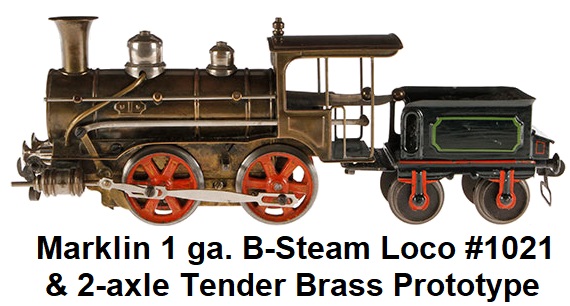 The first toy trains produced by Märklin were floor runners. In the late 1800's, the only way to move
toy trains was either by pushing them around the floor by hand, or by pulling them around via a string attached to a front
buffer. Märklin released its first wind-up mechanical powered train with cars that ran on expandable track in 1891, noting
that railroad toys had the potential to follow the common practice of doll houses, in which the initial purchase would be
enhanced and expanded by consumers over time with additional purchases of more items and accessories for years after that.
To this end, Märklin offered additional rolling stock and track with which to expand its boxed train sets. This marketing
concept developed into the first 'system-railroad' and lead the way for many other toy makers operating in Germany during
this period to jump in and emulate. In the beginning, the Märklin catalogs were made by extensive handwork. All of the models
were drawn in color using the tempera painting technique, they were cut out, and then they were glued in place on the catalog
page. The first Märklin catalog was printed in 1895 in which the items were shown as copperplate etchings. The text was
printed in a black/white letterpress process.
The first toy trains produced by Märklin were floor runners. In the late 1800's, the only way to move
toy trains was either by pushing them around the floor by hand, or by pulling them around via a string attached to a front
buffer. Märklin released its first wind-up mechanical powered train with cars that ran on expandable track in 1891, noting
that railroad toys had the potential to follow the common practice of doll houses, in which the initial purchase would be
enhanced and expanded by consumers over time with additional purchases of more items and accessories for years after that.
To this end, Märklin offered additional rolling stock and track with which to expand its boxed train sets. This marketing
concept developed into the first 'system-railroad' and lead the way for many other toy makers operating in Germany during
this period to jump in and emulate. In the beginning, the Märklin catalogs were made by extensive handwork. All of the models
were drawn in color using the tempera painting technique, they were cut out, and then they were glued in place on the catalog
page. The first Märklin catalog was printed in 1895 in which the items were shown as copperplate etchings. The text was
printed in a black/white letterpress process.
| Märklin 1 gauge Early Freight Cars |
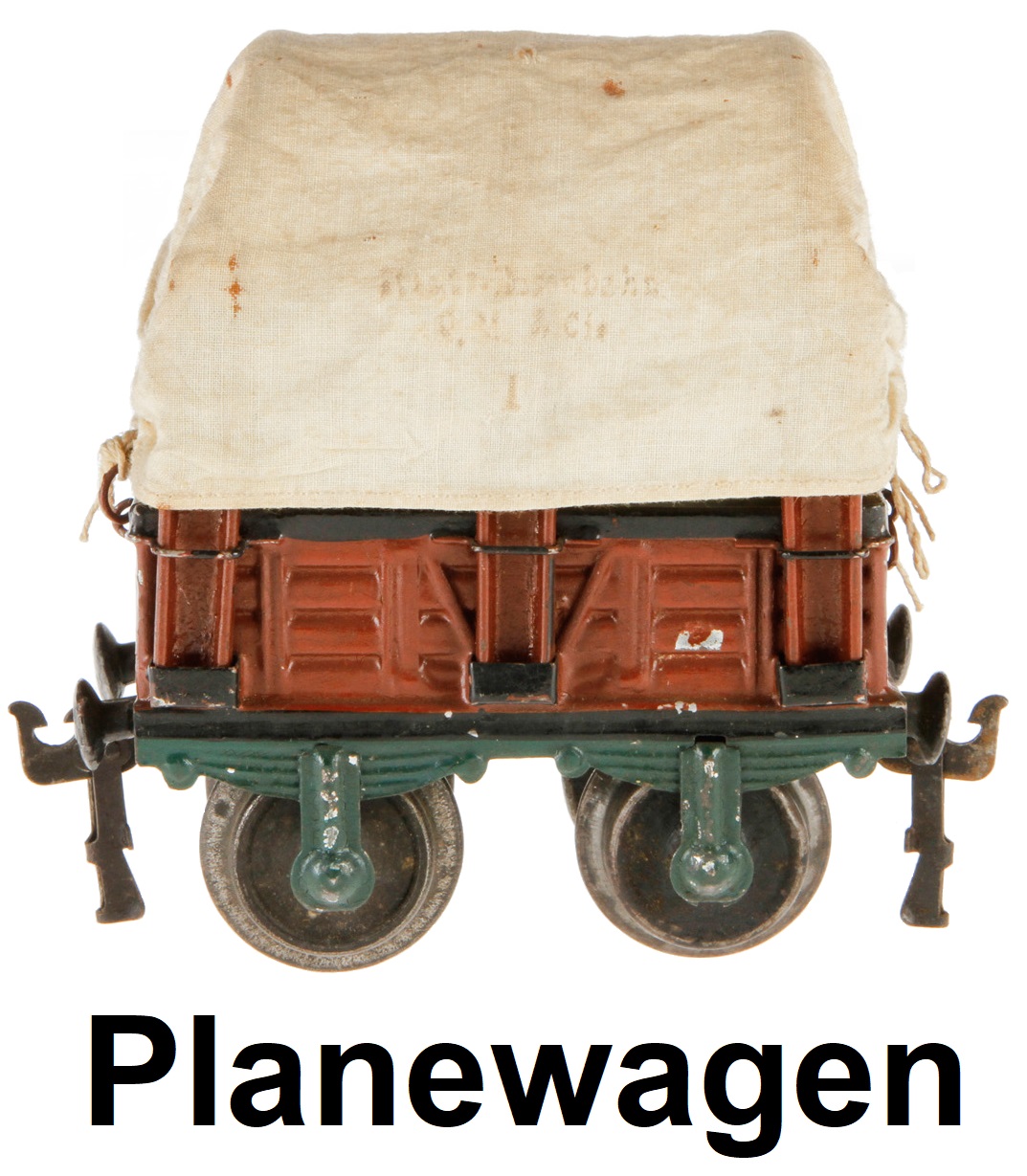 |
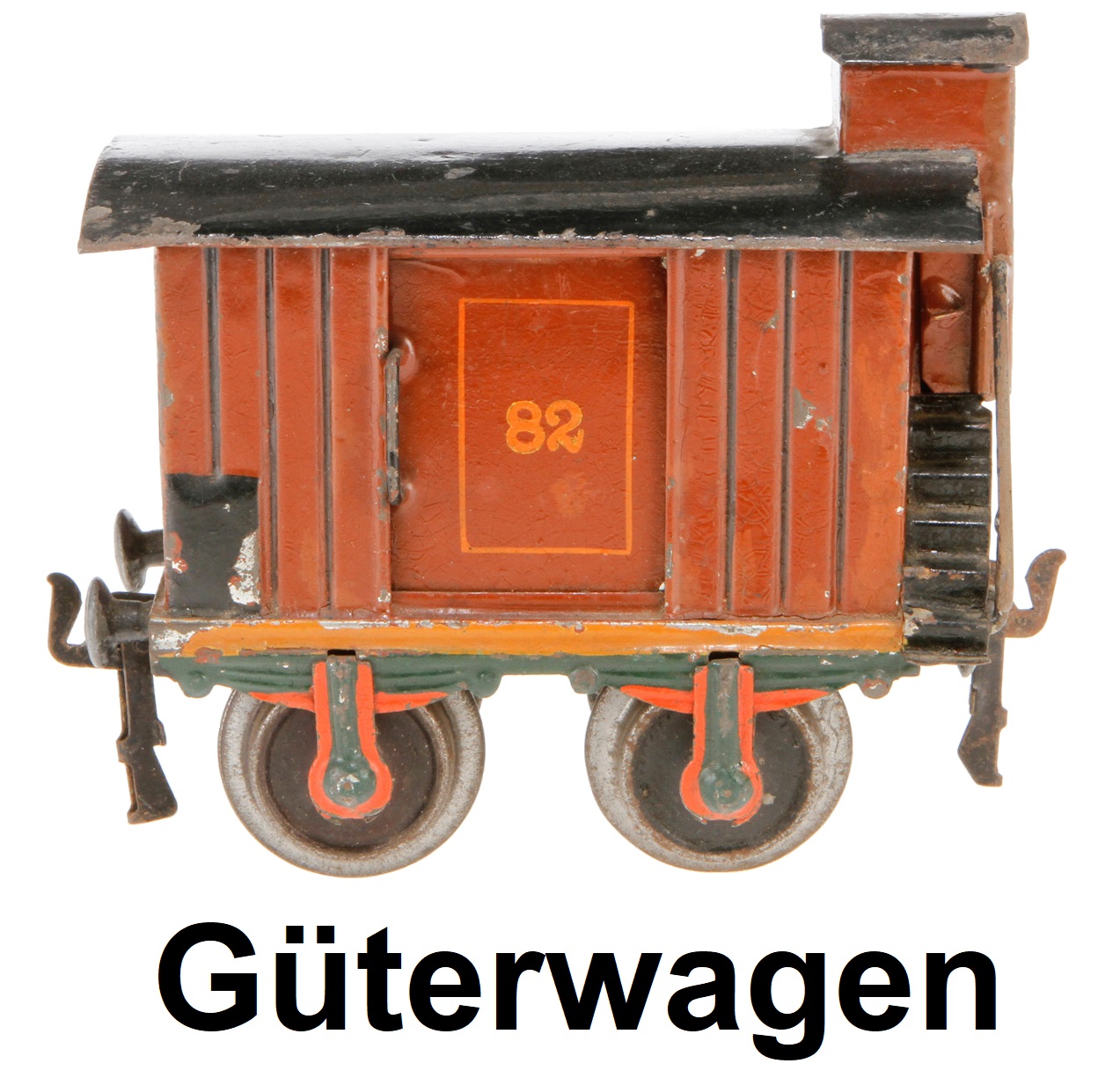 |
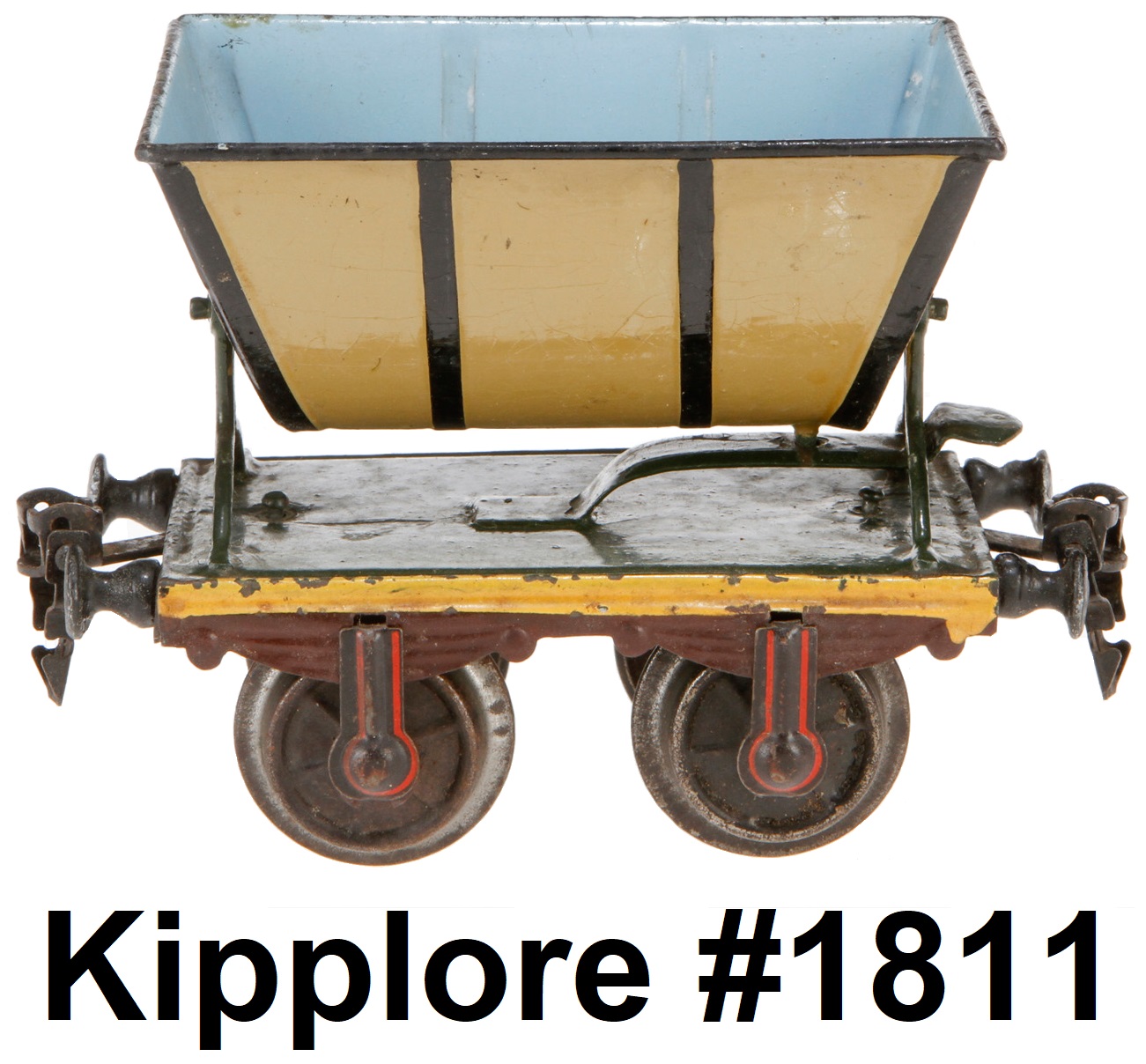 |
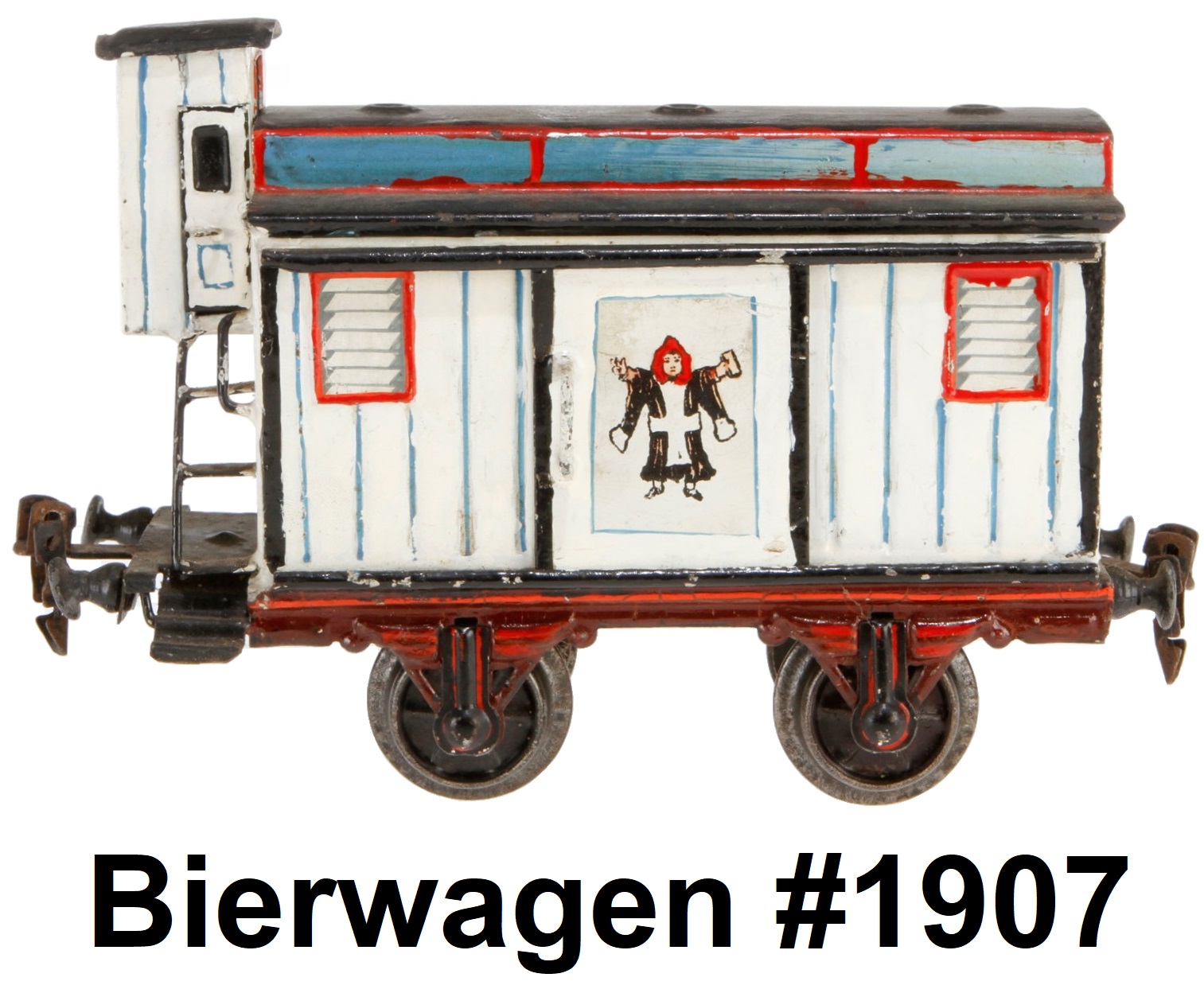 |
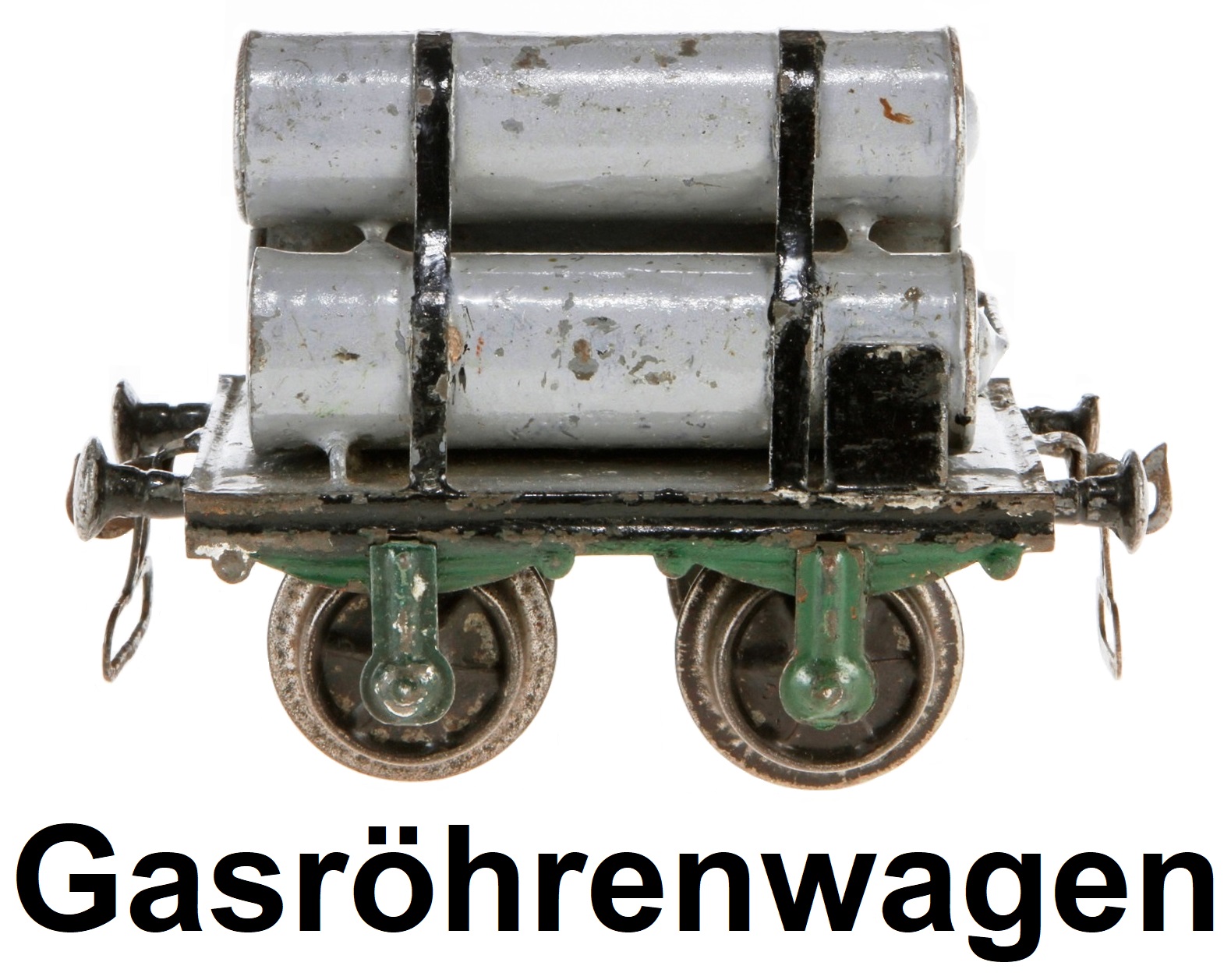 |
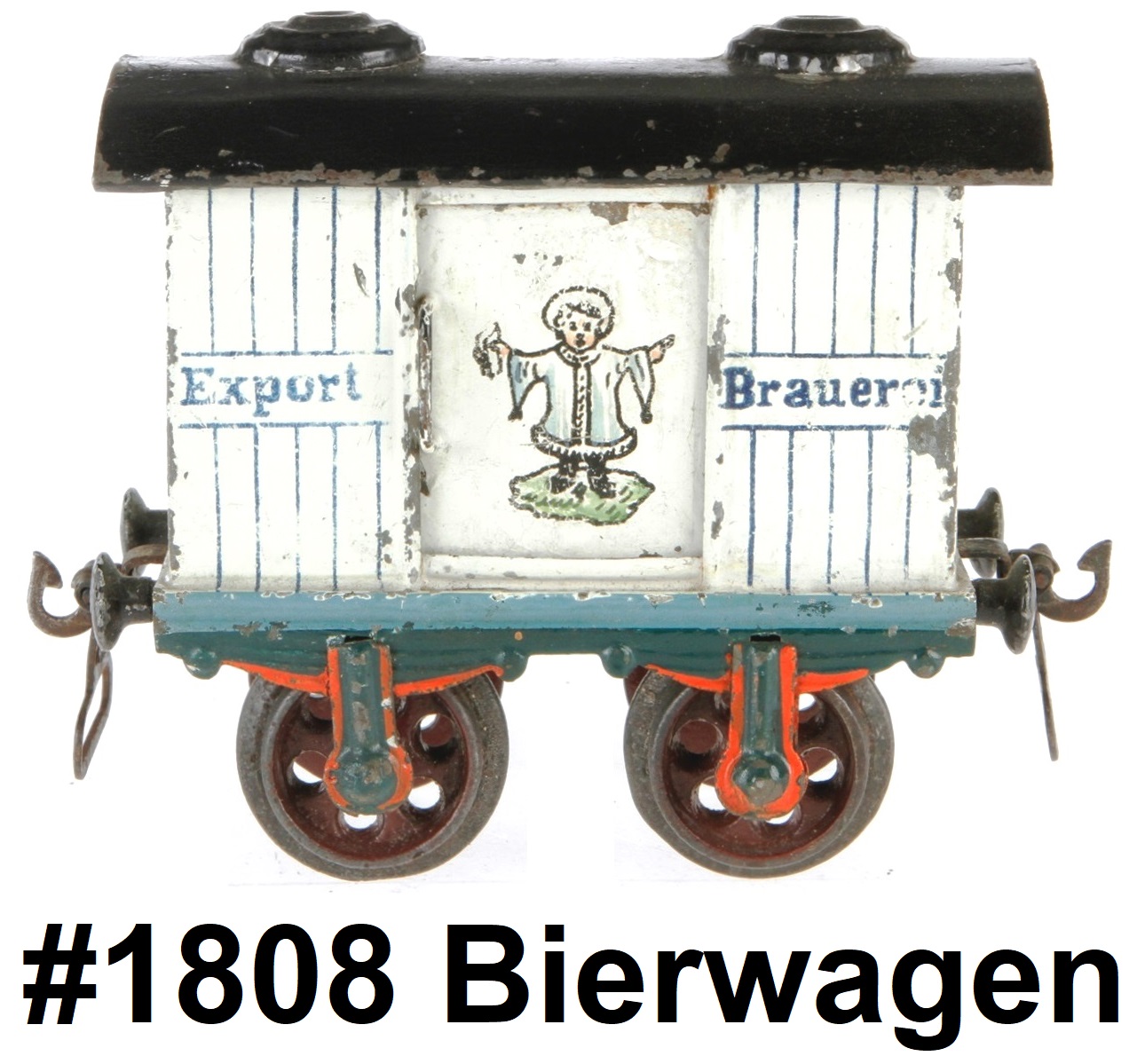 |
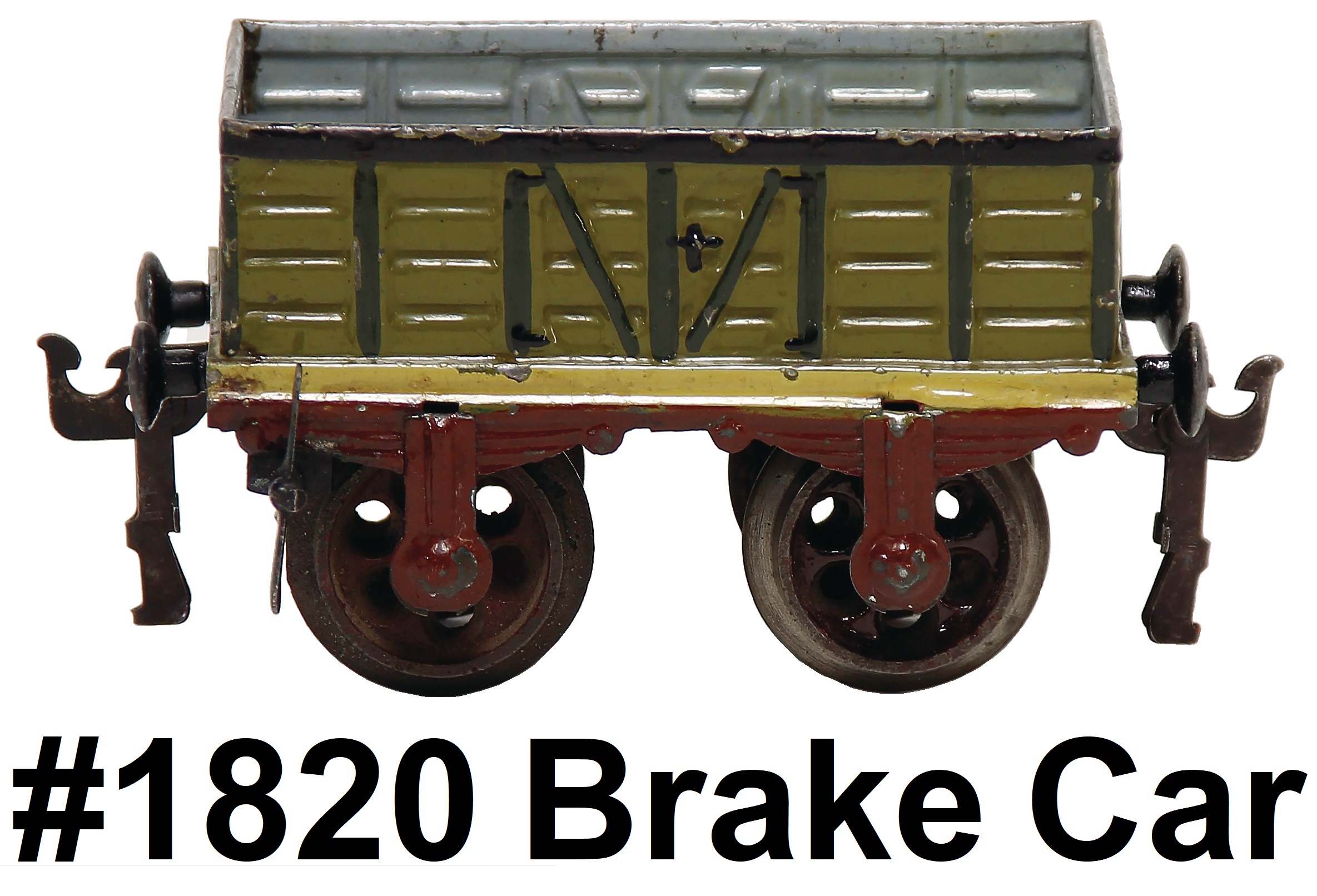 |
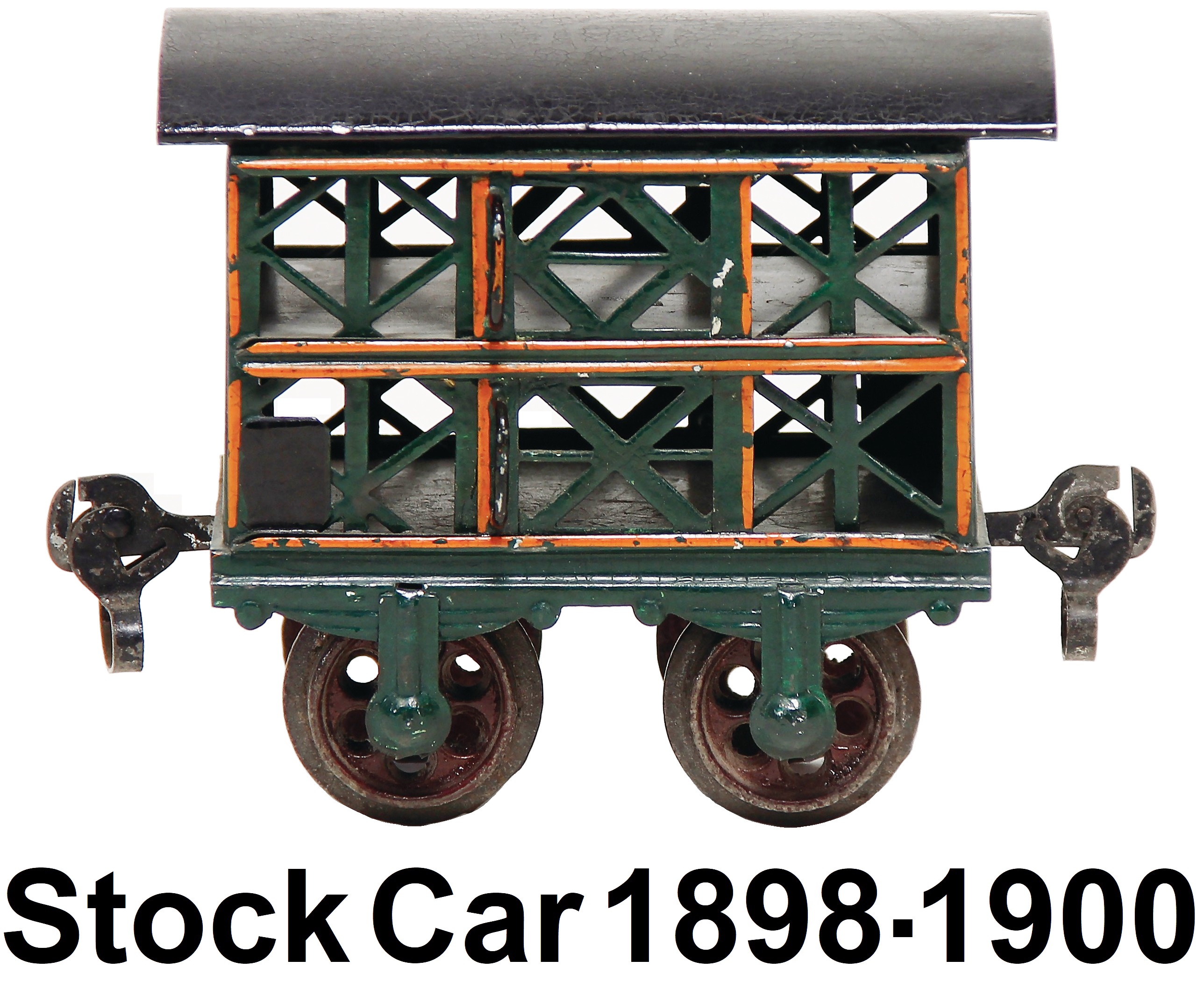 |
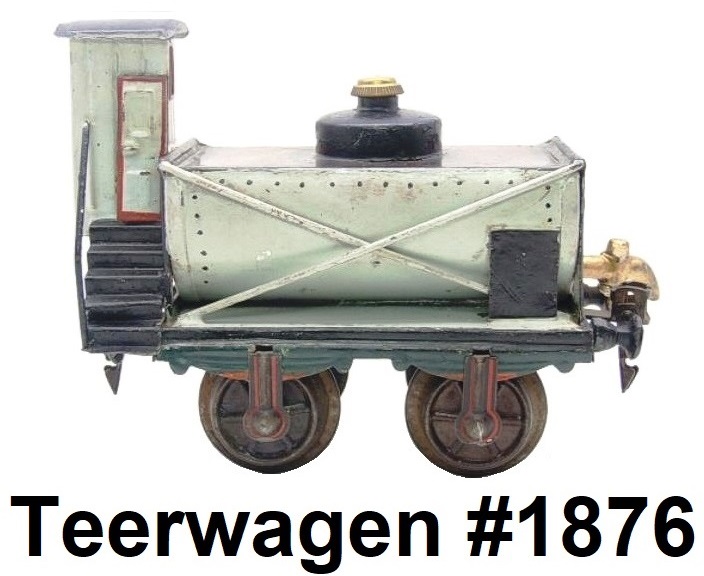 |
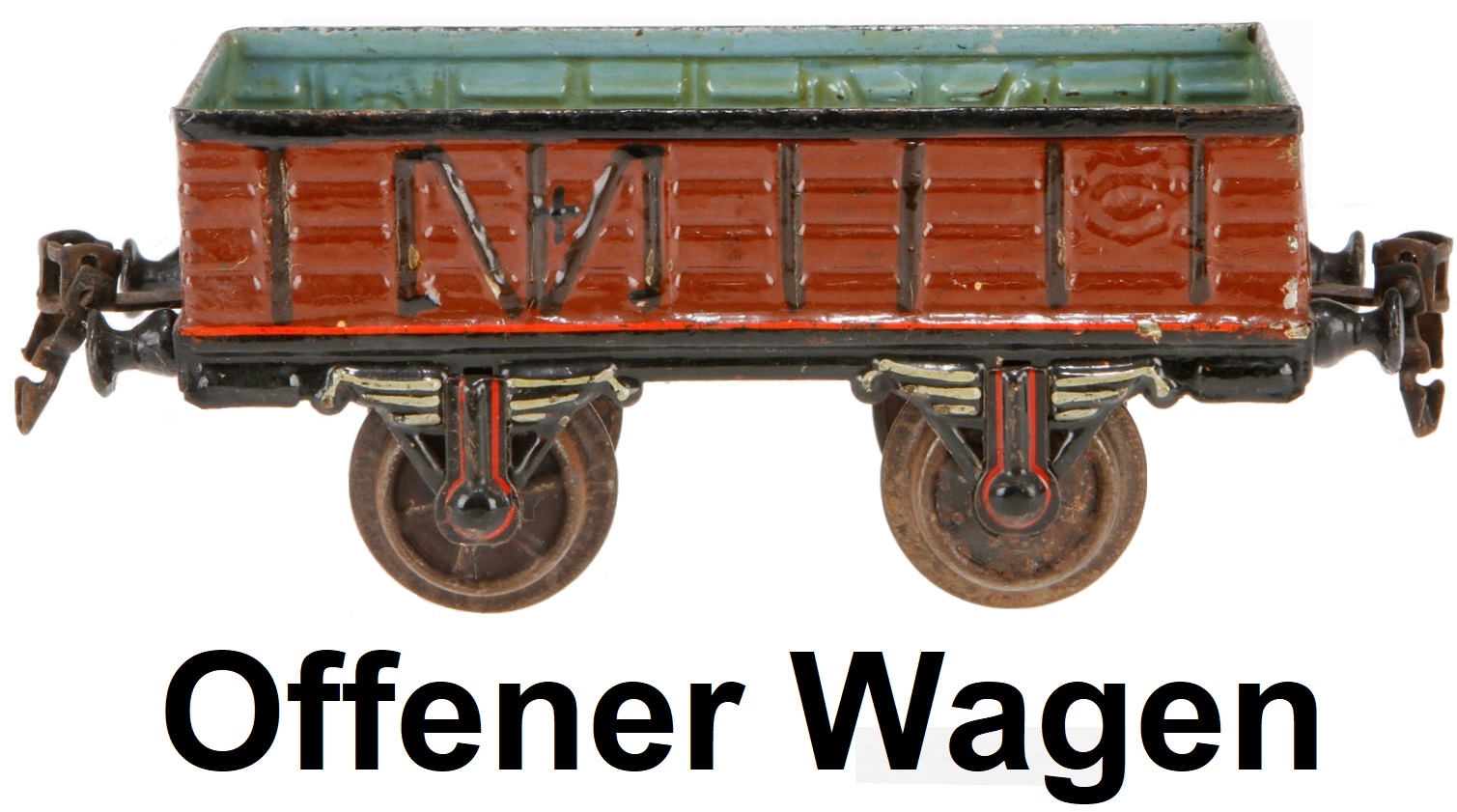 |
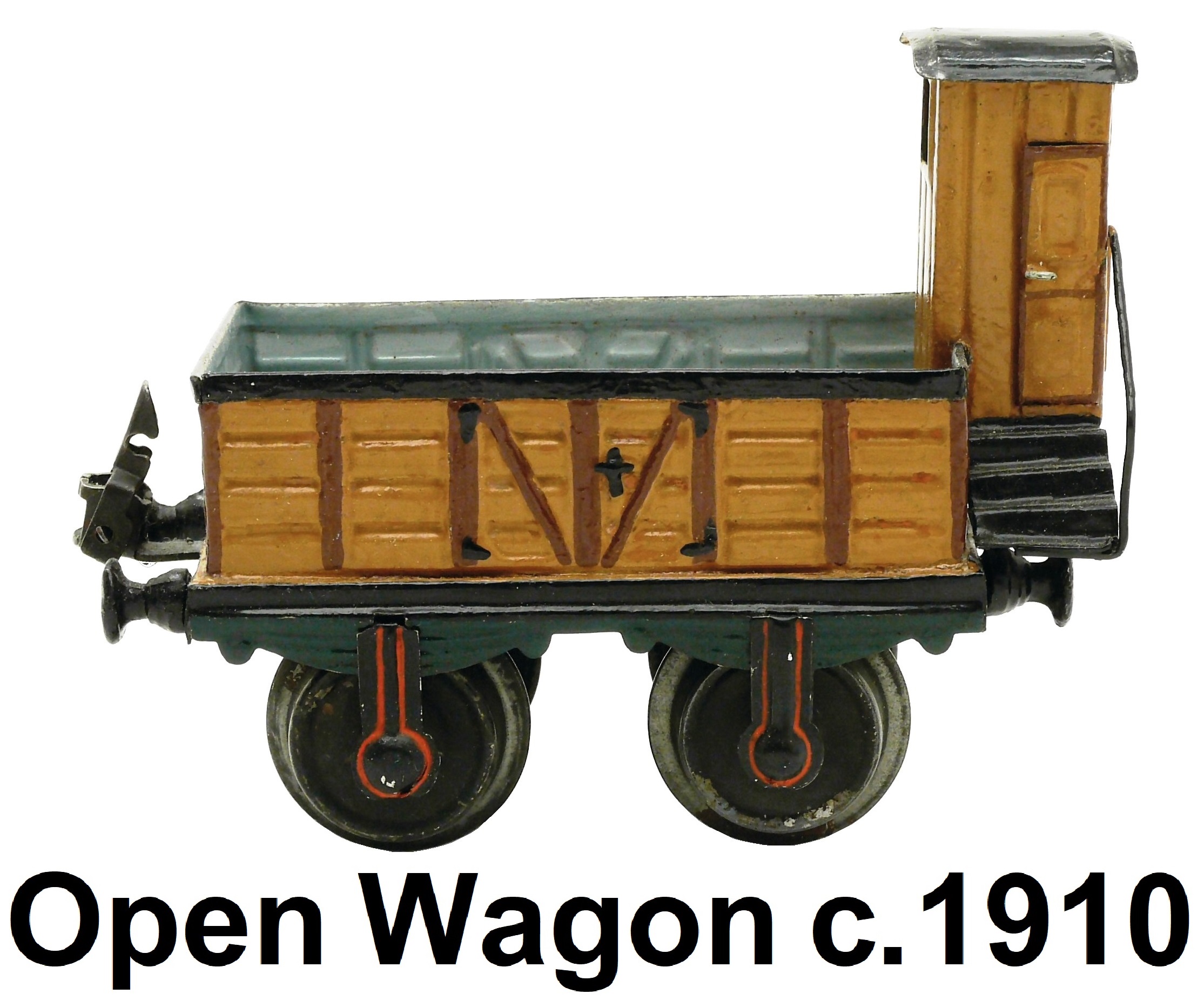 |
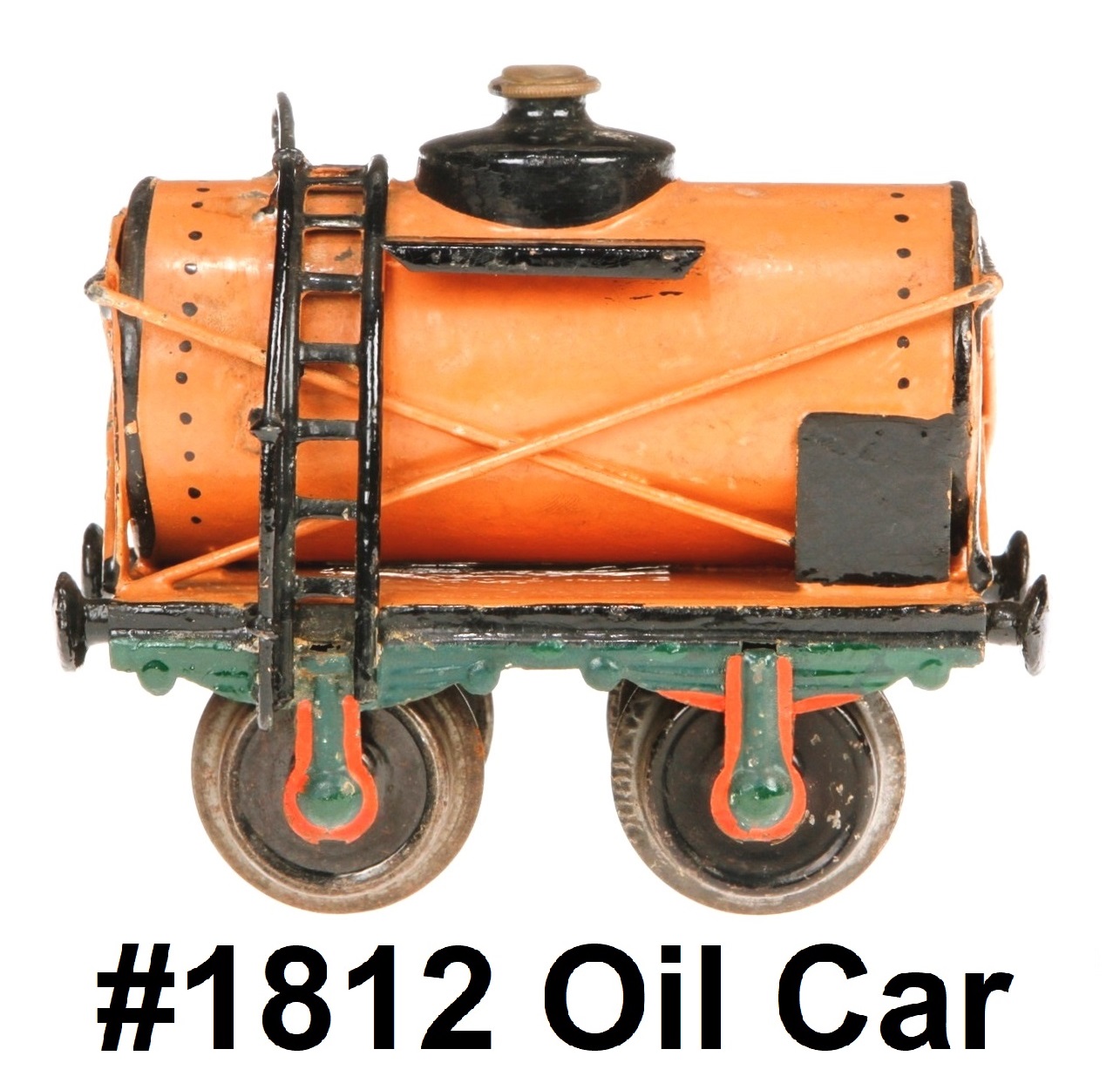 |
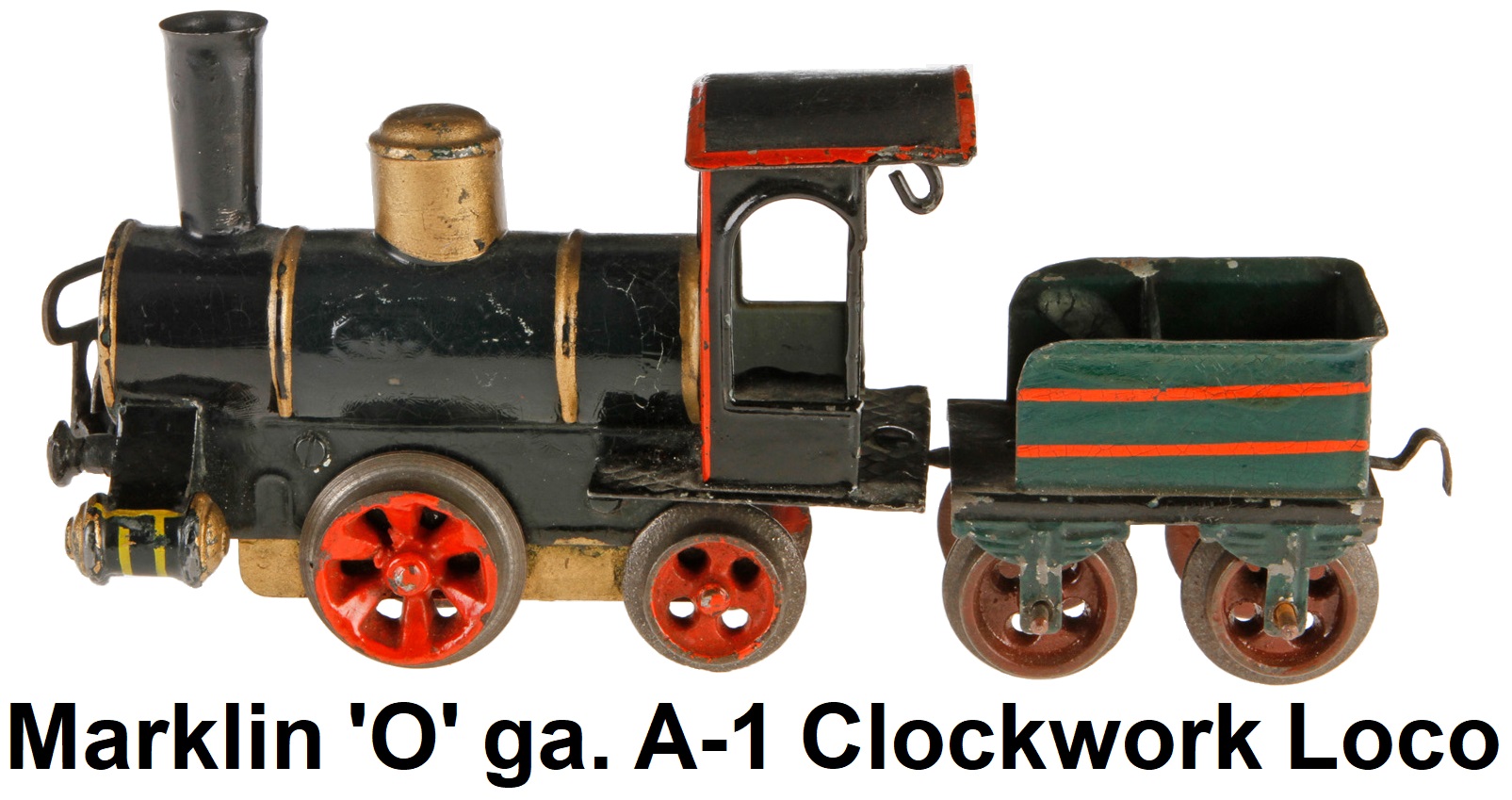 Having the ability to include spring driven mechanical motors in these early toys was a great step forward. Märklin
developed its expertise in the field of clockwork motors in the 19th century. The springs
employed in Märklin’s clockwork motors had a good reputation for their proficiency in enabling a toy train to
circumnavigate a circle of track for several iterations. It did require a volume of human energy to wind the mechanical motor
sufficiently in order to facilitate a longer running time, as these toy trains typically would expend and unwind the spring
after a brief duration.
Having the ability to include spring driven mechanical motors in these early toys was a great step forward. Märklin
developed its expertise in the field of clockwork motors in the 19th century. The springs
employed in Märklin’s clockwork motors had a good reputation for their proficiency in enabling a toy train to
circumnavigate a circle of track for several iterations. It did require a volume of human energy to wind the mechanical motor
sufficiently in order to facilitate a longer running time, as these toy trains typically would expend and unwind the spring
after a brief duration.

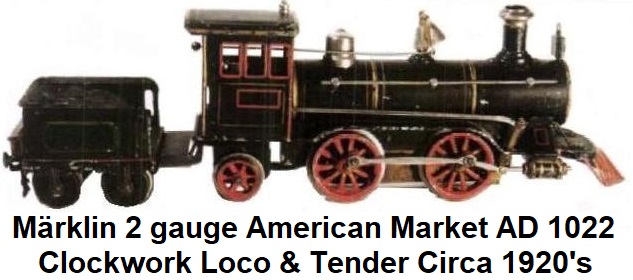 Originally all model toy trains were made in gauge 1. Gauge 1 track measures
1.75 inches (44.45 mm) in width, making it larger than 'O' gauge but slightly smaller than wide gauge. In the late 1890's
other gauges came into production. These gauges also became popular with the other train manufacturers of the era, which allowed
trains of different makers to run on the same tracks. A look in an early 1900's catalogue shows a very large range
of products available, with a lot of items to decorate the displays of stations and railroads. In the years
before 1914, there was a short period where the larger gauges 2 and 3 were popular, but after the first
world war hardly any of these very large items were made.
Originally all model toy trains were made in gauge 1. Gauge 1 track measures
1.75 inches (44.45 mm) in width, making it larger than 'O' gauge but slightly smaller than wide gauge. In the late 1890's
other gauges came into production. These gauges also became popular with the other train manufacturers of the era, which allowed
trains of different makers to run on the same tracks. A look in an early 1900's catalogue shows a very large range
of products available, with a lot of items to decorate the displays of stations and railroads. In the years
before 1914, there was a short period where the larger gauges 2 and 3 were popular, but after the first
world war hardly any of these very large items were made.
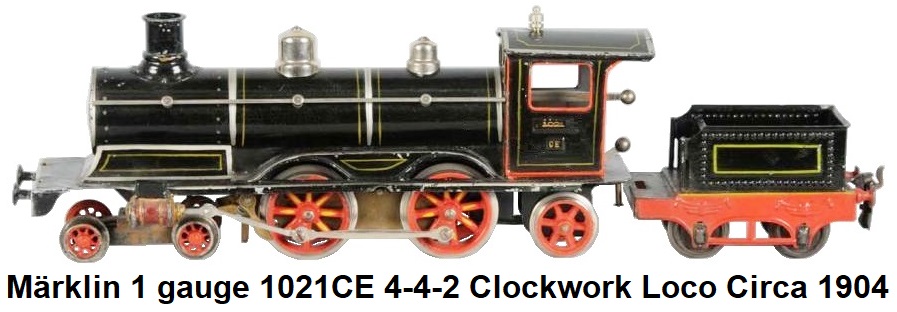 Märklin is responsible for the creation of virtually every popular model railroad
gauge or scale, with only noteworthy exceptions being N scale and Wide gauge. In 1891, Märklin defined gauges 1-5 as standards
for toy trains and presented them at the Leipzig Toy Fair. They soon became international standards. Märklin
followed with 'O' gauge (by some accounts as early as 1895 or as late as 1901), HO scale in 1935, and the
diminutive 'Z' scale in 1972 — this is the smallest commercially available scale, 1:220.
Märklin is responsible for the creation of virtually every popular model railroad
gauge or scale, with only noteworthy exceptions being N scale and Wide gauge. In 1891, Märklin defined gauges 1-5 as standards
for toy trains and presented them at the Leipzig Toy Fair. They soon became international standards. Märklin
followed with 'O' gauge (by some accounts as early as 1895 or as late as 1901), HO scale in 1935, and the
diminutive 'Z' scale in 1972 — this is the smallest commercially available scale, 1:220.

 By 1895 Märklin trains had become extremely popular and the business grew rapidly.
The demand dictated that the production facilities be expanded again and a move was made to larger facilities located at
Marktgasse 21. During these early years of manufacturing, Märklin toys found their way across the globe, and became
renowned for their high degree of craftsmanship. Between their original foray into offering track based model railways in the
1890's to the arrival of what is referred to as Märklin's 'Golden Age' during the 1930's, the firm produced a vast range of
model locomotives powered by steam power, clockwork mechanisms and electric motors. The
majority of these model trains were produced under Märklin's own brand name and were 'Continental' designs of German steam
By 1895 Märklin trains had become extremely popular and the business grew rapidly.
The demand dictated that the production facilities be expanded again and a move was made to larger facilities located at
Marktgasse 21. During these early years of manufacturing, Märklin toys found their way across the globe, and became
renowned for their high degree of craftsmanship. Between their original foray into offering track based model railways in the
1890's to the arrival of what is referred to as Märklin's 'Golden Age' during the 1930's, the firm produced a vast range of
model locomotives powered by steam power, clockwork mechanisms and electric motors. The
majority of these model trains were produced under Märklin's own brand name and were 'Continental' designs of German steam
 locomotives (usually in matte black paint) or Swiss pantograph electric locos and various railcars. The Märklin catalogs were
being produced in a three-language edition, allowing the firm to provide catalogs to all of the German, French, and
English-speaking dealers. The Märklin trains from this era were almost completely hand made and hand painted. The
attention to the smallest details was not overlooked. Passenger car roofs were hinged so that they could be opened up to
view the fully outfitted interiors that included scale sized passengers. The dining cars even had faux-painted marble on the
tables. Stations showed the same level of detail with restaurants, news stands, and glass-covered passenger platforms just
like the real stations.
locomotives (usually in matte black paint) or Swiss pantograph electric locos and various railcars. The Märklin catalogs were
being produced in a three-language edition, allowing the firm to provide catalogs to all of the German, French, and
English-speaking dealers. The Märklin trains from this era were almost completely hand made and hand painted. The
attention to the smallest details was not overlooked. Passenger car roofs were hinged so that they could be opened up to
view the fully outfitted interiors that included scale sized passengers. The dining cars even had faux-painted marble on the
tables. Stations showed the same level of detail with restaurants, news stands, and glass-covered passenger platforms just
like the real stations.

 It is reported that Märklin began to sell electric powered trains as early as 1895. During this era,
only a handful of cities across the European continent had electric power distribution to homes. It was however
available in Göppingen where Märklin manufactured its toy trains. These trains operated on 50 volts of electricity
supplied from a 220 volt main that was reduced by means of lightbulbs placed in series with the primary circuit, or they
could also be operated by using 4V DC batteries. The form of motive power that was most heavily
being leveraged by Märklin in the early years was live-steam. Live-steam engines could be found in many Märklin products
including 1 gauge and 'O' gauge locomotives, ships, stationary steam plants (which generated electricity to power lamps and
accessories), and rolling tractors. The majority of these live-steam spirit fired items utilized alcohol burners to heat
a water filled boiler tank. The heated burner in combination with pressurized hot steam were somewhat of a hazard when
implemented on toys that children would play with. The live-steam products sold by Märklin were packaged in wooden boxes
and typically included the instruments necessary to operate the steam engine, such as a miniature bucket for filling the
water tank, a funnel for discharging the water and alcohol into the reservoirs, and multiple wrenches for adjusting pressure
valves.
It is reported that Märklin began to sell electric powered trains as early as 1895. During this era,
only a handful of cities across the European continent had electric power distribution to homes. It was however
available in Göppingen where Märklin manufactured its toy trains. These trains operated on 50 volts of electricity
supplied from a 220 volt main that was reduced by means of lightbulbs placed in series with the primary circuit, or they
could also be operated by using 4V DC batteries. The form of motive power that was most heavily
being leveraged by Märklin in the early years was live-steam. Live-steam engines could be found in many Märklin products
including 1 gauge and 'O' gauge locomotives, ships, stationary steam plants (which generated electricity to power lamps and
accessories), and rolling tractors. The majority of these live-steam spirit fired items utilized alcohol burners to heat
a water filled boiler tank. The heated burner in combination with pressurized hot steam were somewhat of a hazard when
implemented on toys that children would play with. The live-steam products sold by Märklin were packaged in wooden boxes
and typically included the instruments necessary to operate the steam engine, such as a miniature bucket for filling the
water tank, a funnel for discharging the water and alcohol into the reservoirs, and multiple wrenches for adjusting pressure
valves.


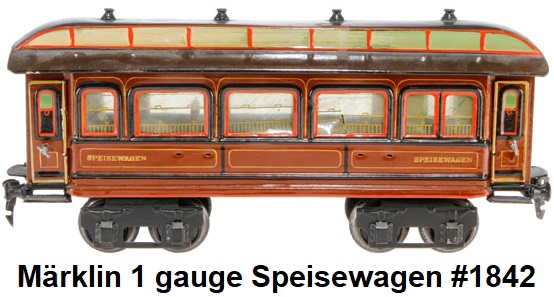
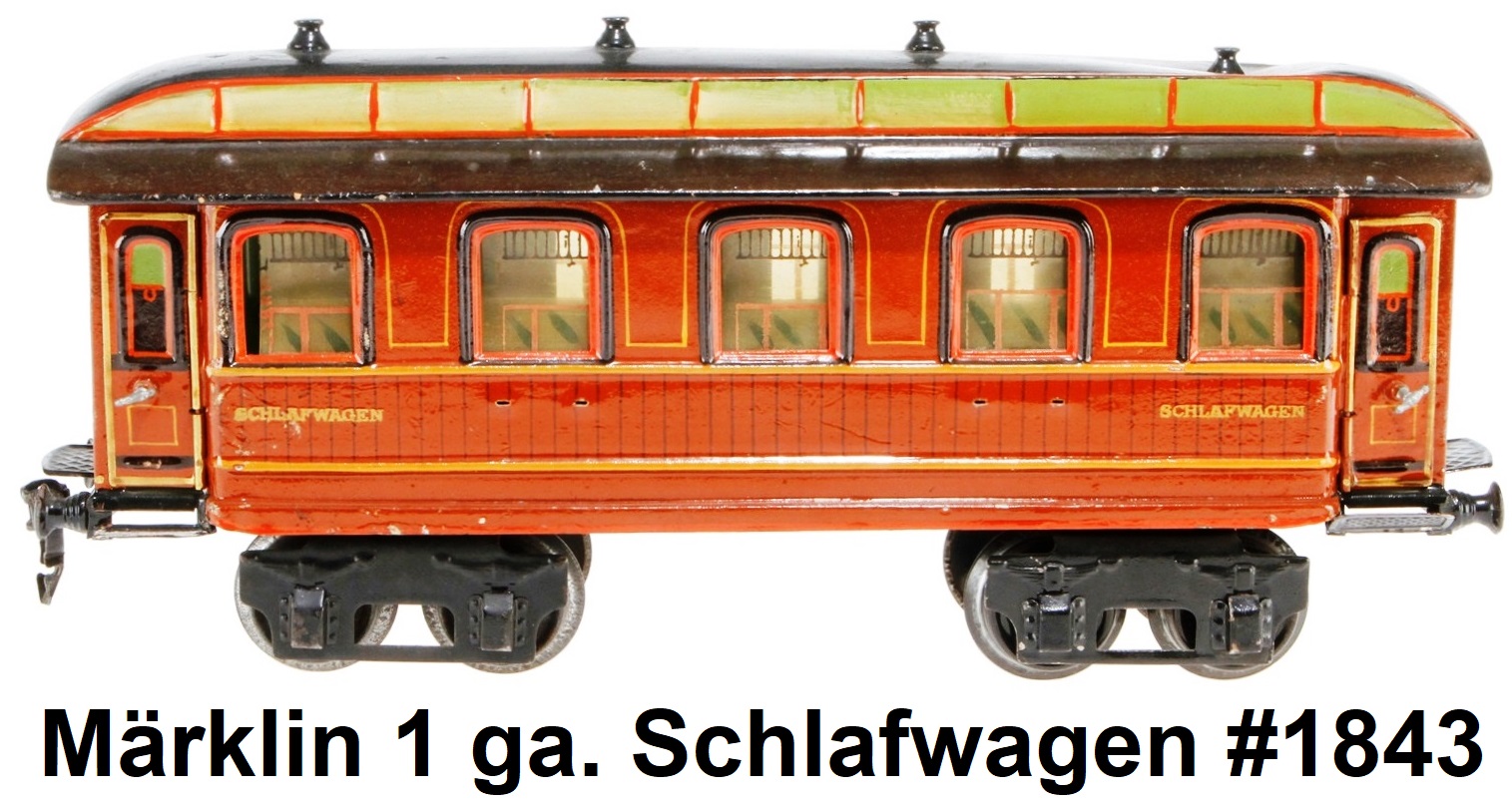
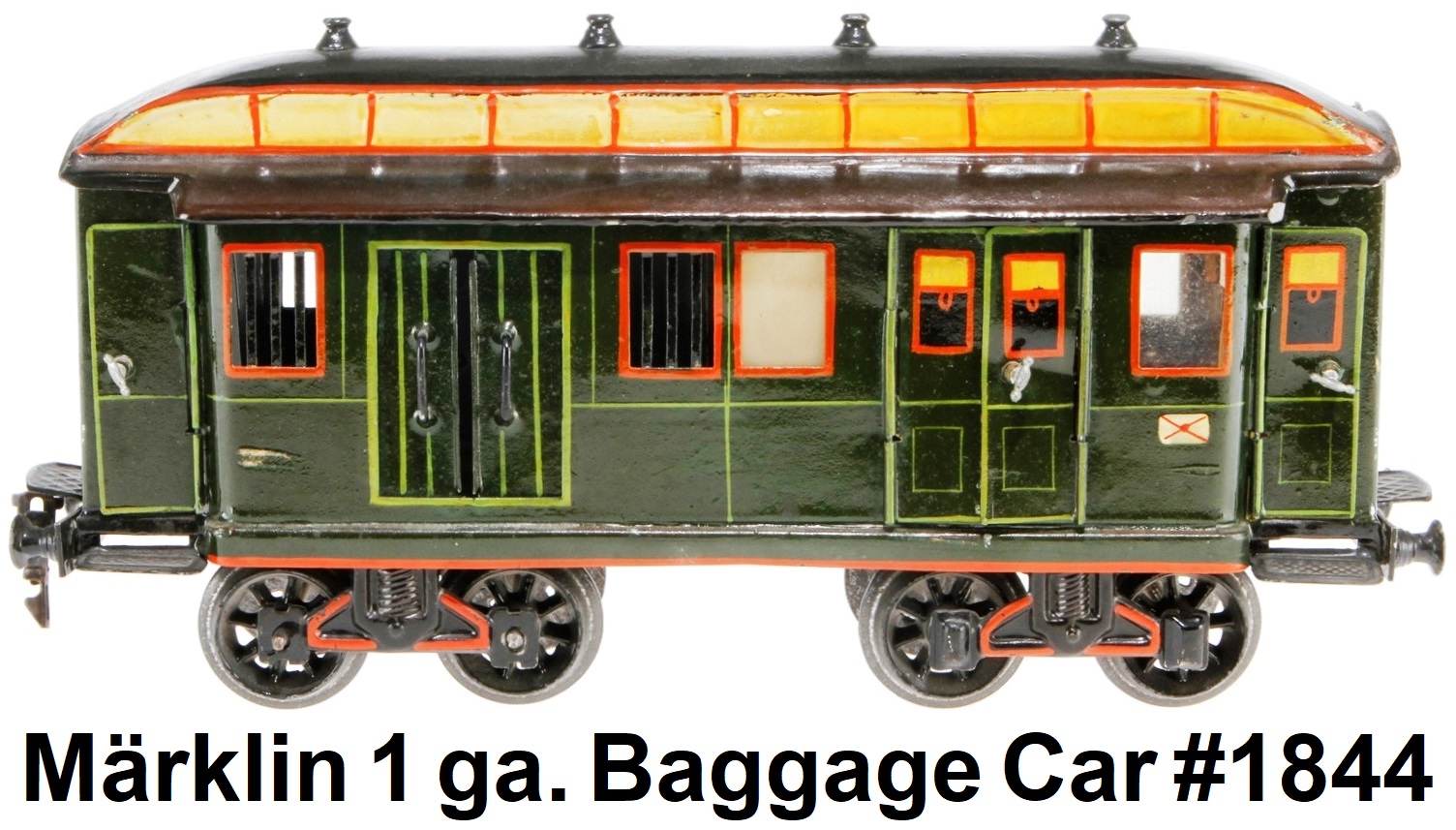
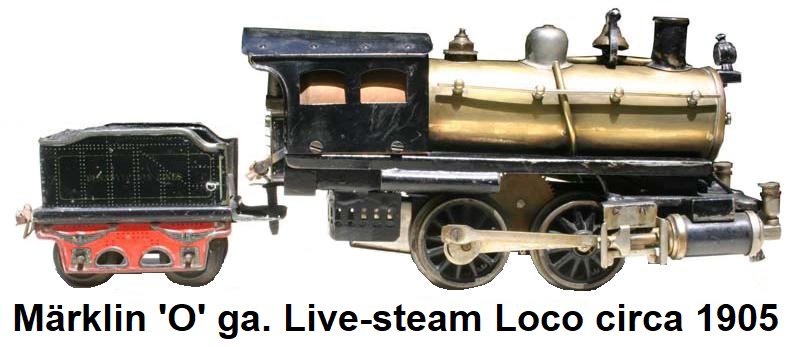
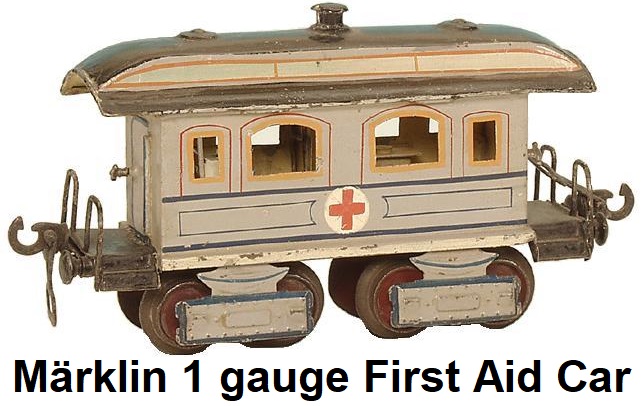 In 1900 the company again moved to a larger 6,000 square foot factory located in Stuttgarter Strasse.
Additional investment capital was required to facilitate the expansion. Around this time Märklin introduced 3-rail
tubular track for their line of electrically powered trains. Early Märklin trains from this period typically
feature the letters 'MC' on them, which stands for Märklin Company. In 1907 Richard Safft was brought in as a partner to the
company. Safft's command of other languages helped greatly in establishing export of products to other countries. From 1908
they traded under the name 'Märklin Bros. & Cie'. Märklin was now producing a wide assortment of metal toys,
including steam ship models powered by clockwork mechanisms or real steam engines, spirit-fired steam engines,
working miniature stoves, clockwork driven automobiles that could be taken apart and refitted with other
body shells, slot-car systems with electric motors, tops, and die-cast automobiles.
In 1900 the company again moved to a larger 6,000 square foot factory located in Stuttgarter Strasse.
Additional investment capital was required to facilitate the expansion. Around this time Märklin introduced 3-rail
tubular track for their line of electrically powered trains. Early Märklin trains from this period typically
feature the letters 'MC' on them, which stands for Märklin Company. In 1907 Richard Safft was brought in as a partner to the
company. Safft's command of other languages helped greatly in establishing export of products to other countries. From 1908
they traded under the name 'Märklin Bros. & Cie'. Märklin was now producing a wide assortment of metal toys,
including steam ship models powered by clockwork mechanisms or real steam engines, spirit-fired steam engines,
working miniature stoves, clockwork driven automobiles that could be taken apart and refitted with other
body shells, slot-car systems with electric motors, tops, and die-cast automobiles.
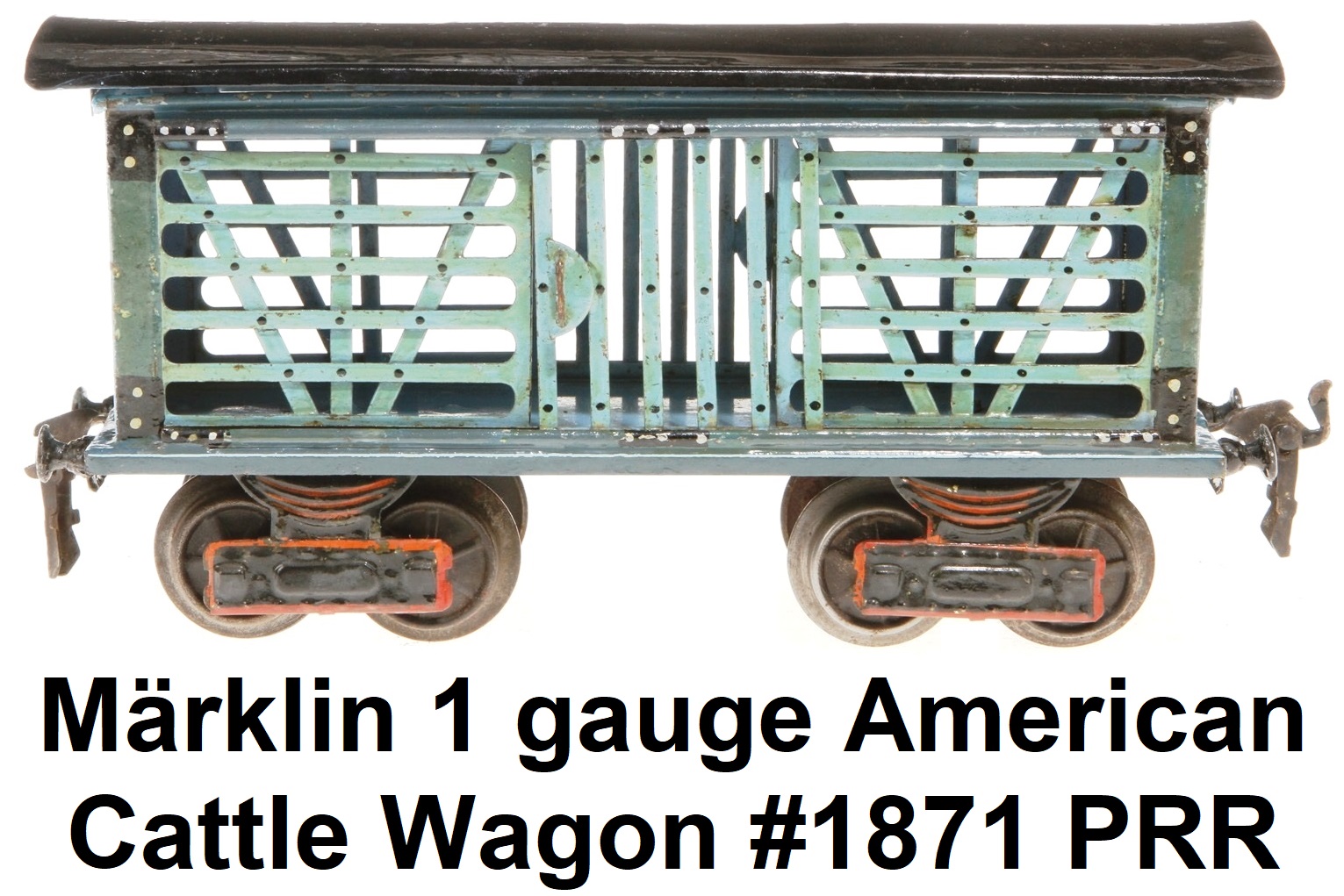
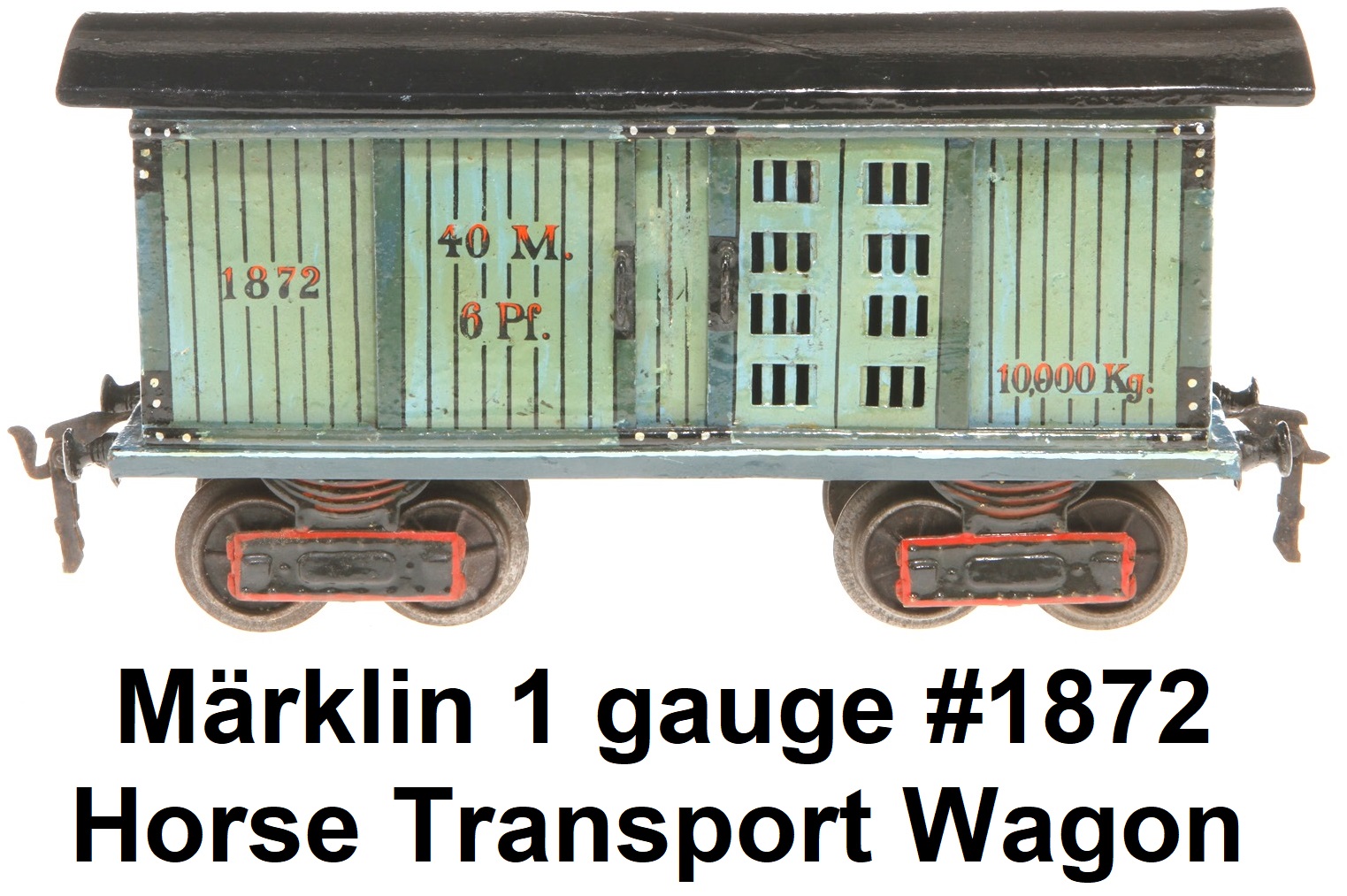
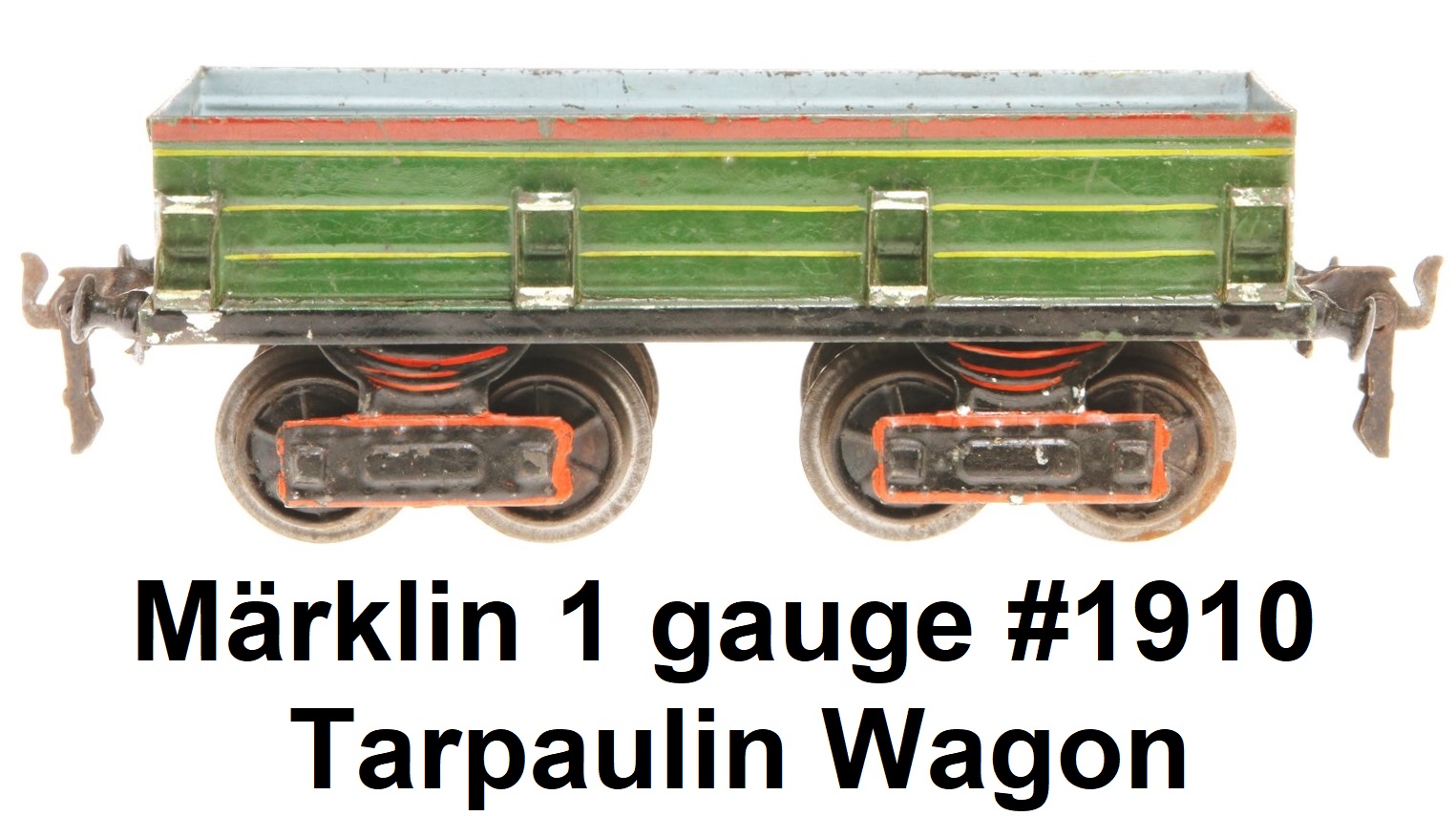
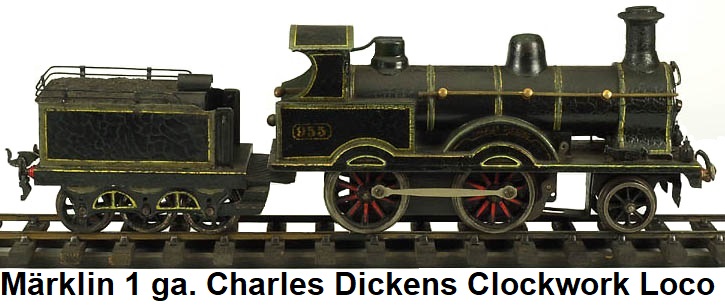 Between 1903 and 1907 Märklin produced a 1 gauge black electric 110V model of the then famous LNWR
Charles Dickens 2-4-0 locomotive, running number 955. This may have been the world's first commercially-produced electric
model of an English-design locomotive. The model has the distinction of being the only electric model locomotive in the
entire 1904 Bassett-Lowke catalogue, which means that it was probably the first English-outline
electric model loco to be marketed in the UK. Märklin made versions of this loco in both 1 gauge and 2 gauge, powered by
clockwork mechanisms and electric motors. The electric motor had a triple armature and carbon brushes. It worked on the
3rd-rail principle, where the contact was made by means of a patented spring connection.
Between 1903 and 1907 Märklin produced a 1 gauge black electric 110V model of the then famous LNWR
Charles Dickens 2-4-0 locomotive, running number 955. This may have been the world's first commercially-produced electric
model of an English-design locomotive. The model has the distinction of being the only electric model locomotive in the
entire 1904 Bassett-Lowke catalogue, which means that it was probably the first English-outline
electric model loco to be marketed in the UK. Märklin made versions of this loco in both 1 gauge and 2 gauge, powered by
clockwork mechanisms and electric motors. The electric motor had a triple armature and carbon brushes. It worked on the
3rd-rail principle, where the contact was made by means of a patented spring connection.
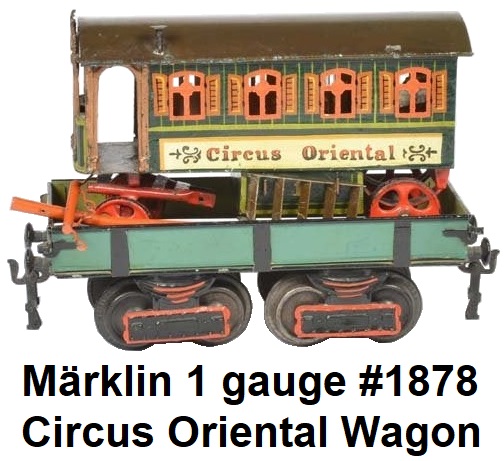
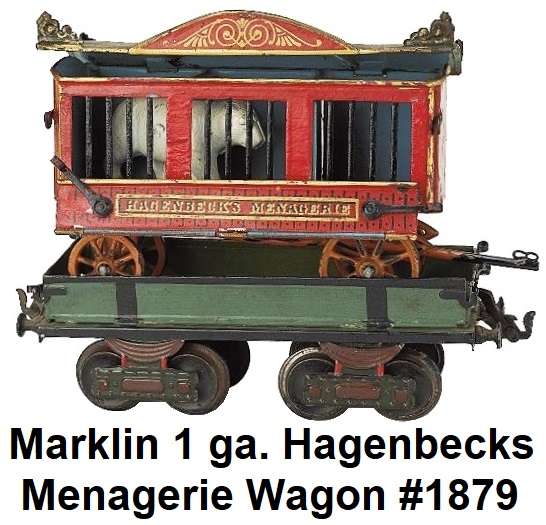
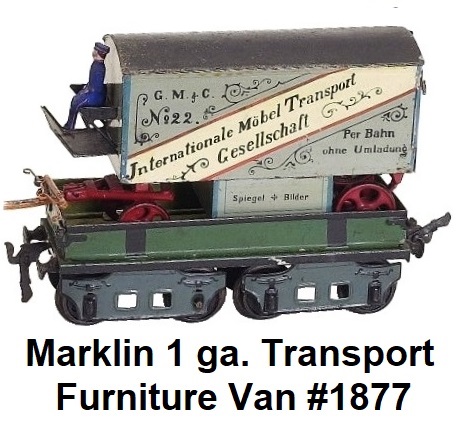
Märklin was one of the first toy companies to demonstrate the advantages of piggybacking. Between 1903 and
1914 Märklin produced a series of very colorful hand painted goods wagons in 'O', 1, 2 and 3 gauge.
The early Circus Oriental, Hagenbeck's Menagerie and furniture van cars consisted of a low sided 4-axle #1818 wagon with fold
down side walls carrying three different loads of 2-axle horse drawn type wagons. These were the #1879 Menagerie
Transportwagen, #1878 Circus wagon, and the #1877 International Möbel Transport Furniture wagon. Along with these wagon-
carrying cars they also produced early automobiles and collapsible airplane loads carried on railroad gondolas or flat cars.
These types of train cars provided the child or operator with additional play value above and beyond operation of the trains
themselves and helped to greatly increase sales. On October 6, 1909 Märklin received a patent for its coupling design that
was developed in the early 1900's. The patented design provided a simple yet dependable method for uncoupling and coupling
cars and locomotives. It featured a unique tongue and slot mechanism combined with a small cross-pin which soundly joined
two couplings together. This new design was utilized by Märklin to replace their original loop-type coupling mechanisms
and remained as the standard for all 'O' gauge trains.
 For Märklin, during the period referred to as the Golden Age, their products were well in demand by a multitude of
international importers. Märklin was quick to answer the demand. The company delivered its products in quantity,
while also customizing certain items for particular outlets and regions. They focused on creating model trains of
popular prototypes of the period. For the British market, handsomely painted trains of the
London, Midland and Scottish Railway (L.M.S), London North Eastern Railway (L.N.E.R), Great North Western Railway (G.N.W.R.),
North British Railways (N.B.R.), Midland Railway (M.R.), Southern Railway (S.R.), London & South Western Railway (L.&S.W.R.)
and the London and North Western Railway (L.&N.W.R.) along with ornate stations and platforms of all gauges were delivered
through distributors such as Gamages and W. Seeling of London.
For Märklin, during the period referred to as the Golden Age, their products were well in demand by a multitude of
international importers. Märklin was quick to answer the demand. The company delivered its products in quantity,
while also customizing certain items for particular outlets and regions. They focused on creating model trains of
popular prototypes of the period. For the British market, handsomely painted trains of the
London, Midland and Scottish Railway (L.M.S), London North Eastern Railway (L.N.E.R), Great North Western Railway (G.N.W.R.),
North British Railways (N.B.R.), Midland Railway (M.R.), Southern Railway (S.R.), London & South Western Railway (L.&S.W.R.)
and the London and North Western Railway (L.&N.W.R.) along with ornate stations and platforms of all gauges were delivered
through distributors such as Gamages and W. Seeling of London.
Märklin Trains for the British Market
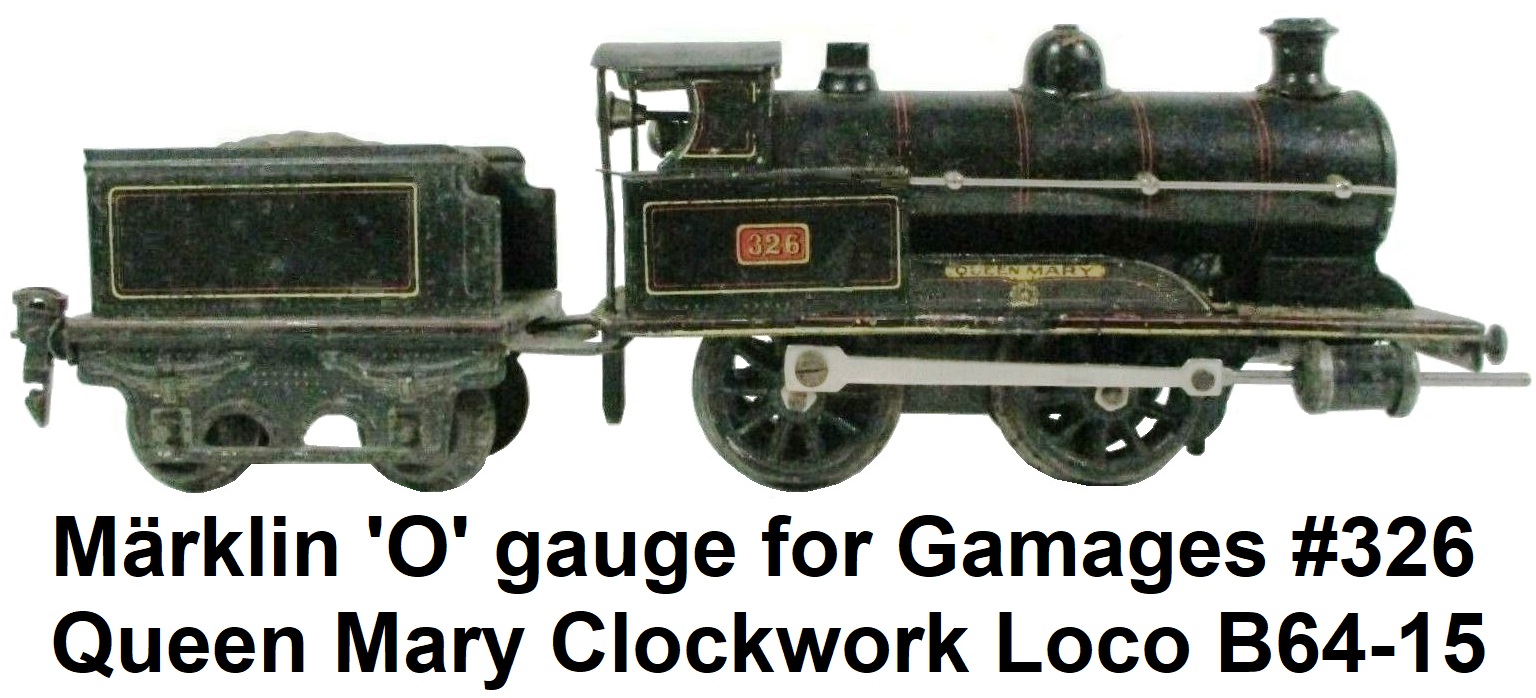
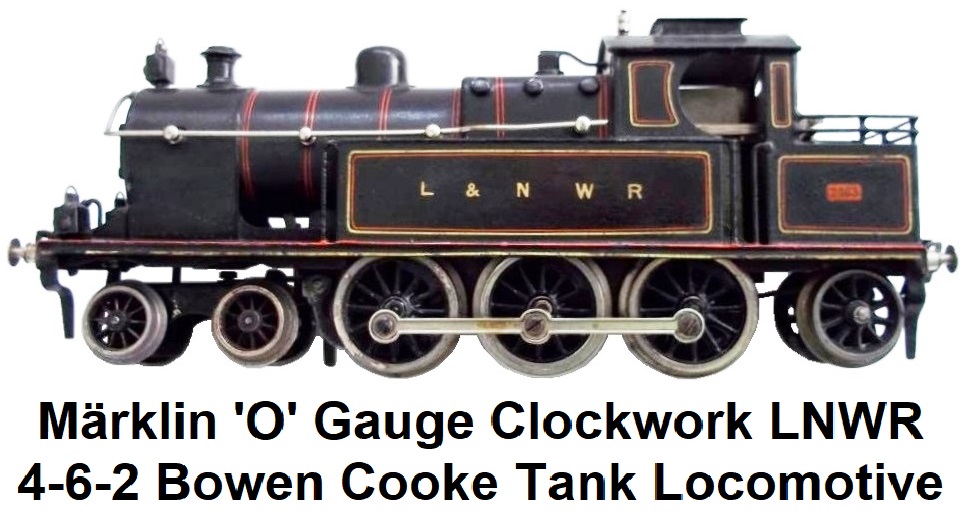
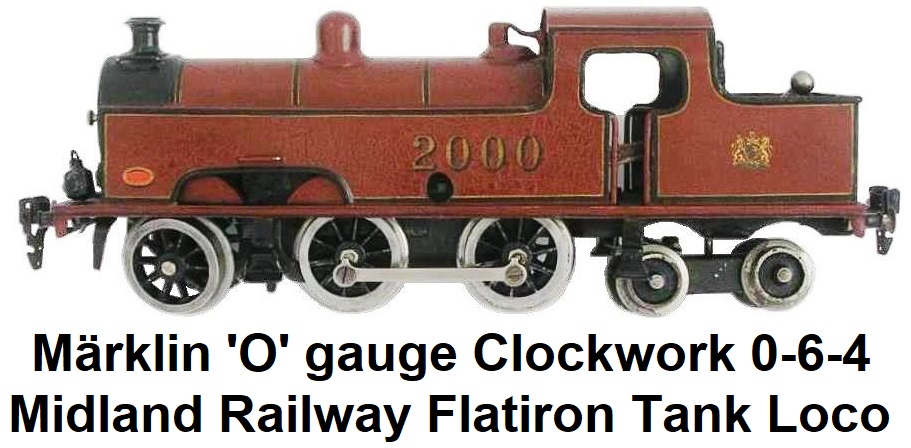
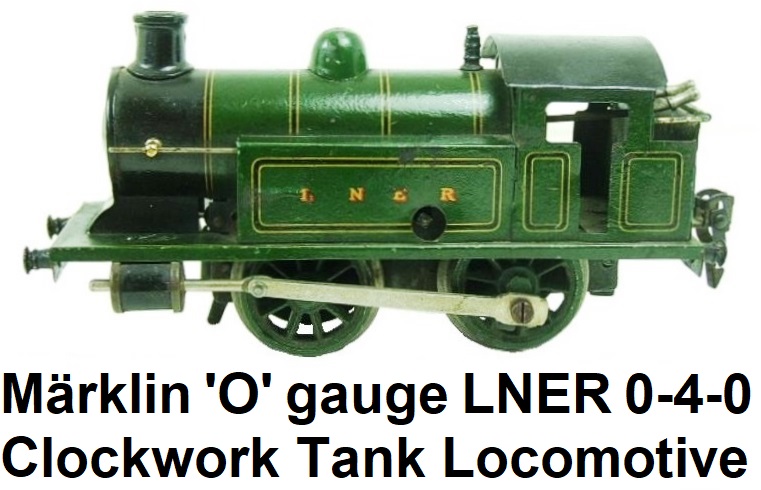

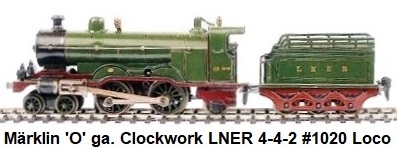



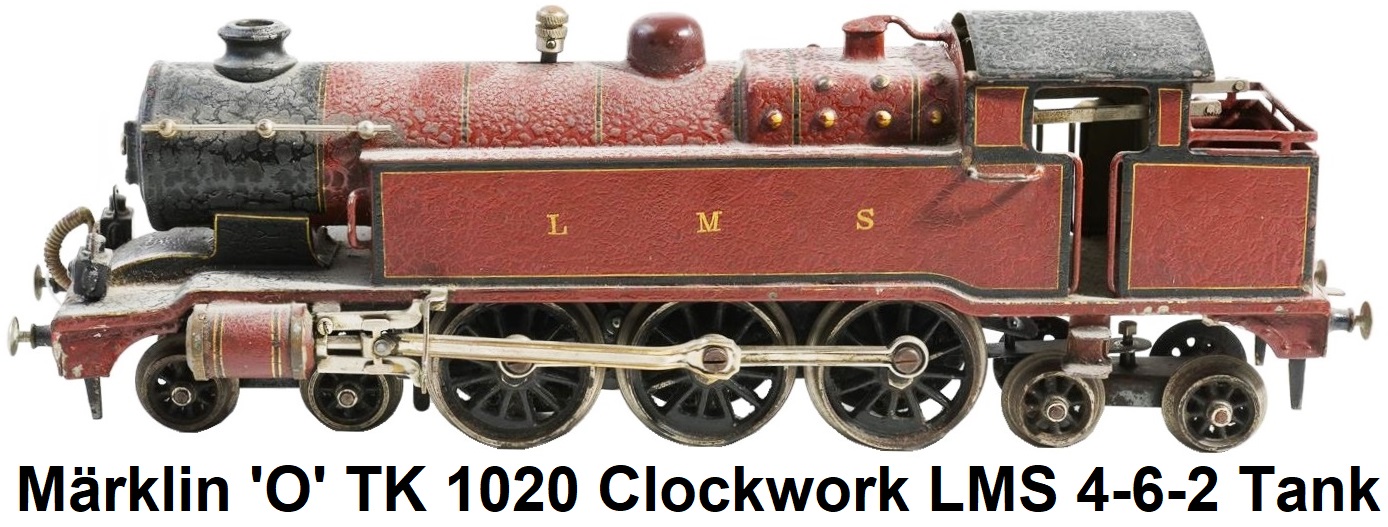
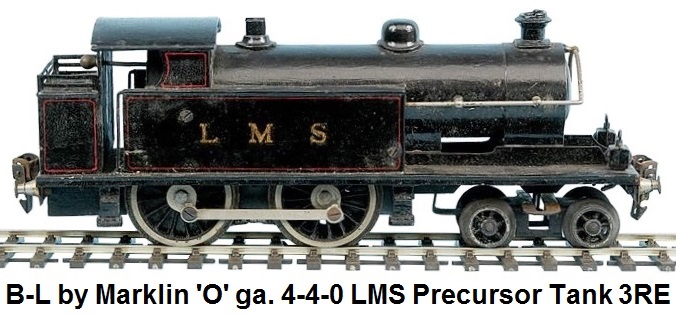
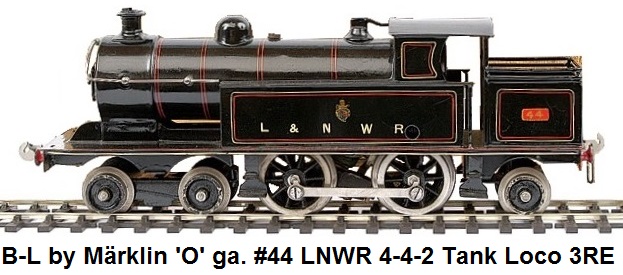 Märklin also produced a range of British-design locomotive models for sale in the UK by
Bassett-Lowke Ltd., which were sold as B-L pieces. As well as supplying Bassett-Lowke with
Continental-outline locos, Märklin produced four locomotive designs specifically for Bassett-Lowke in the 1930's. These were
a SR Merchant Taylors Schools-Class 4-4-0 locomotive, an LMS 5573 Newfoundland 5XP Jubilee-Class 4-6-0 locomotive, a
GWR 6000 King George V 4-6-0 locomotive, and an LMS 2-6-4 Stanier Tank locomotive. Märklin was chosen by
Meccano Ltd. to supply clockwork motors for their construction sets in around 1914 and up until
World War 1 intervened.
Märklin also produced a range of British-design locomotive models for sale in the UK by
Bassett-Lowke Ltd., which were sold as B-L pieces. As well as supplying Bassett-Lowke with
Continental-outline locos, Märklin produced four locomotive designs specifically for Bassett-Lowke in the 1930's. These were
a SR Merchant Taylors Schools-Class 4-4-0 locomotive, an LMS 5573 Newfoundland 5XP Jubilee-Class 4-6-0 locomotive, a
GWR 6000 King George V 4-6-0 locomotive, and an LMS 2-6-4 Stanier Tank locomotive. Märklin was chosen by
Meccano Ltd. to supply clockwork motors for their construction sets in around 1914 and up until
World War 1 intervened.
Märklin for Bassett-Lowke
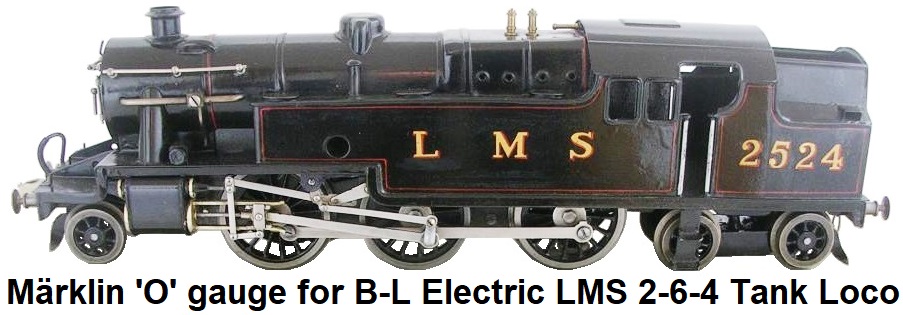


In the early 1900's Märklin achieved considerable success importing their line of tinplate trains
to the growing American market of toy buyers. With the creative use of rubber stamps and decals applied to hand painted and
assembled car bodies, Märklin produced a large range of road names recognizable by most segments of America like N. Y.
Central, P.R.R., C.P.R.R., N.P.R.R., U.P.R.R., Limited Vestibule Express, Twentieth Century Limited, Congressional Limited,
Royal Blue Limited and Pullman among them.

Märklin's early 'O' gauge production from 1900 to the 1920's exported to the American market featured
English lettering, cowcatchers, bells, tunnel lights, and paint schemes commonly found on U.S. railroads.
However, these exported trains were typically German outline locomotive models. As the Golden Age dawned in the 1930's,
Märklin realized
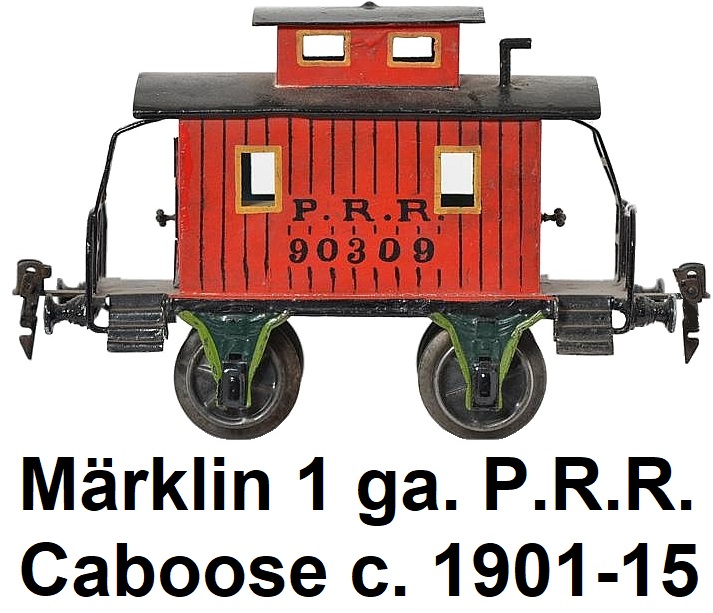 the potential of the American market and in seeking to compete with its rival, Lionel, produced a
series of special locomotives that were not just modified varieties of German outline locomotives, but were
American models. A line of passenger cars for the American market was created in 1910, and then
a line of freight cars followed. Märklin produced 8-wheel Pabst, Schlitz and Budweiser refrigerator cars, generic freights
with rubber stamped American road names and a four-wheel P.R.R bobber caboose. In order to keep pace with their American toy
making competition, by 1912, Märklin was developing a new line of American freight cars that were longer, better proportioned
cars built on queen-post frames with more prototypical 8-wheel trucks. This included box cars, reefers, a
tank car, 2-bay hopper car, gondola, coke car, flat car and caboose. Most were hand painted, but several were also
lithographed. Important dealers for the American market in the 1930's included Richard Märklin and Bruce Hastie.
the potential of the American market and in seeking to compete with its rival, Lionel, produced a
series of special locomotives that were not just modified varieties of German outline locomotives, but were
American models. A line of passenger cars for the American market was created in 1910, and then
a line of freight cars followed. Märklin produced 8-wheel Pabst, Schlitz and Budweiser refrigerator cars, generic freights
with rubber stamped American road names and a four-wheel P.R.R bobber caboose. In order to keep pace with their American toy
making competition, by 1912, Märklin was developing a new line of American freight cars that were longer, better proportioned
cars built on queen-post frames with more prototypical 8-wheel trucks. This included box cars, reefers, a
tank car, 2-bay hopper car, gondola, coke car, flat car and caboose. Most were hand painted, but several were also
lithographed. Important dealers for the American market in the 1930's included Richard Märklin and Bruce Hastie.
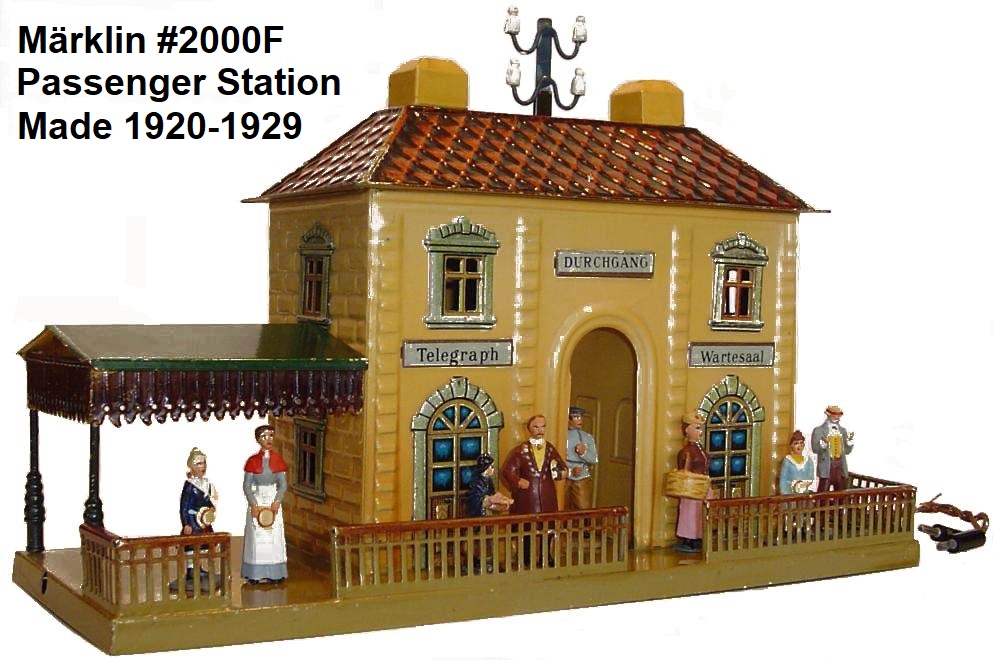
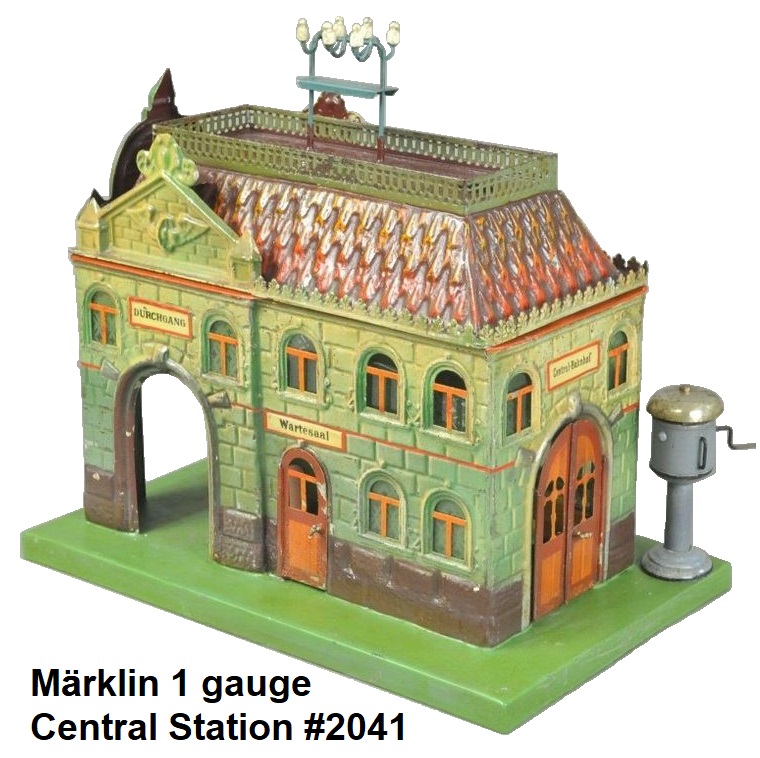 As the business further evolved, the Märklin family continued to expand, and stay involved with running it. Of Eugen Märklin's
9 children, eventually his son Fritz took over the business, and his son Richard became head of the company’s branch
located in the United States. Another son, Willy, took over running the firm after Fritz. Willy's son, Claudius Märklin,
eventually became editor of the Märklin Magazine. In 1911 a six-story, 110 meter-long company headquarters was built
along the Stuttgarter Strasse.
Today it is still one of Göppingen's most imposing buildings. Along with its beautiful hand painted toy trains, Märklin
produced trackside structures and accessories with the same amount of detail and style. They became very well known for
their intricate railroad stations made of tin. Most hand-painted Märklin stations were available in a number of different
nationalities, adorned with flags and names chosen by trade buyers prior to placing an order. Early stations were designed
to hold a candle for interior illumination. Later models used the same miniature light bulbs that the trains employed.
Station buildings had much detail, including interiors with booking halls, seating, waiting areas, ticket booths, telegraph
offices, news stands and restaurants. Exteriors were detailed and adorned with canopied waiting platforms, archways,
footbridges, and signals.
As the business further evolved, the Märklin family continued to expand, and stay involved with running it. Of Eugen Märklin's
9 children, eventually his son Fritz took over the business, and his son Richard became head of the company’s branch
located in the United States. Another son, Willy, took over running the firm after Fritz. Willy's son, Claudius Märklin,
eventually became editor of the Märklin Magazine. In 1911 a six-story, 110 meter-long company headquarters was built
along the Stuttgarter Strasse.
Today it is still one of Göppingen's most imposing buildings. Along with its beautiful hand painted toy trains, Märklin
produced trackside structures and accessories with the same amount of detail and style. They became very well known for
their intricate railroad stations made of tin. Most hand-painted Märklin stations were available in a number of different
nationalities, adorned with flags and names chosen by trade buyers prior to placing an order. Early stations were designed
to hold a candle for interior illumination. Later models used the same miniature light bulbs that the trains employed.
Station buildings had much detail, including interiors with booking halls, seating, waiting areas, ticket booths, telegraph
offices, news stands and restaurants. Exteriors were detailed and adorned with canopied waiting platforms, archways,
footbridges, and signals.
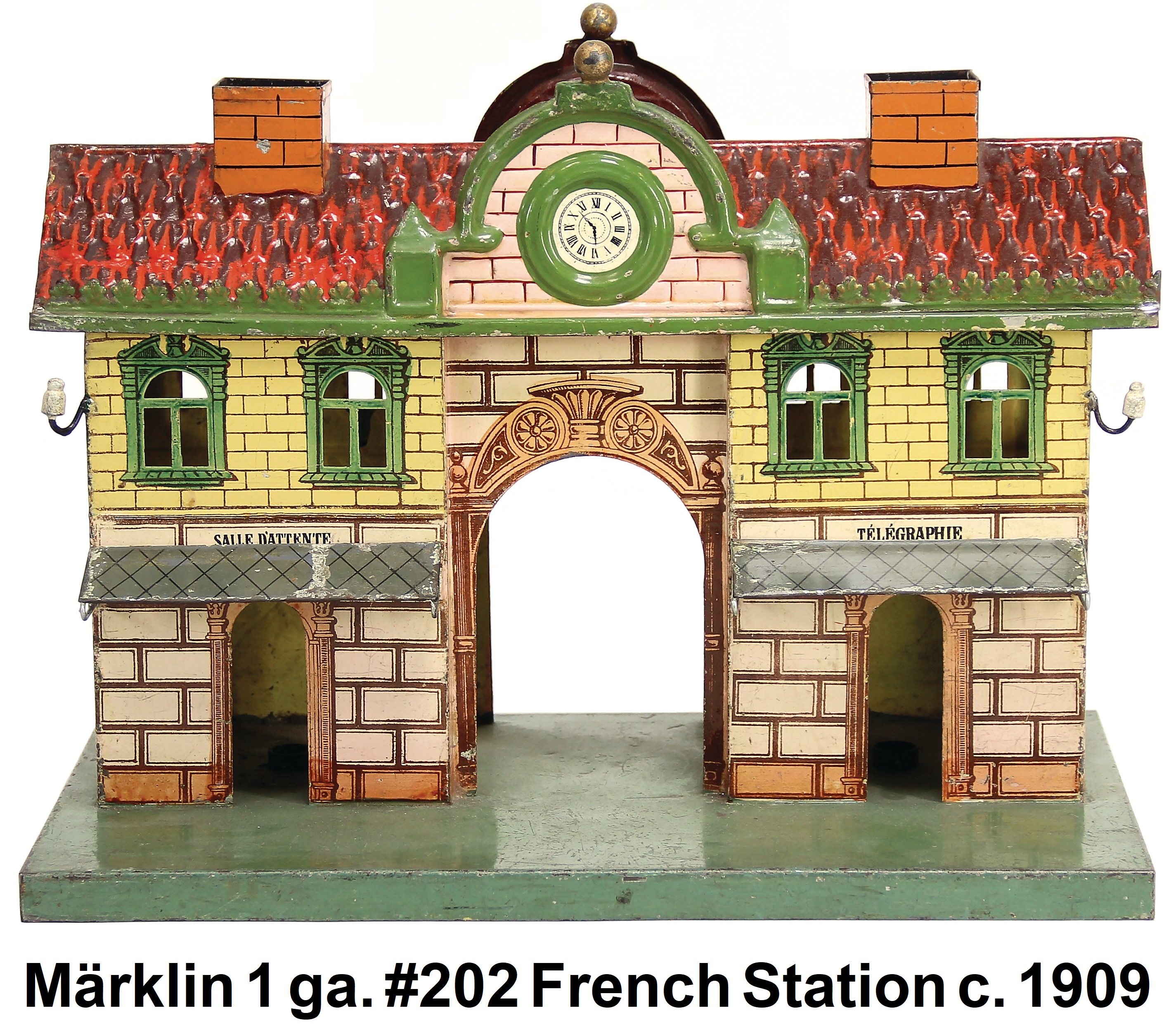
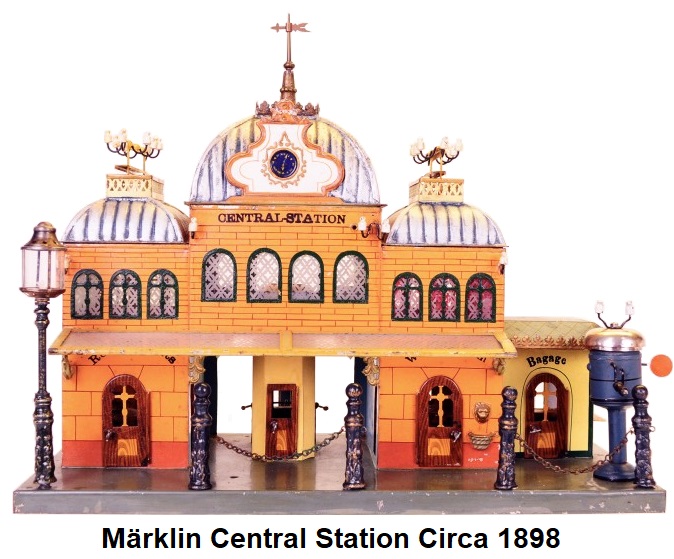
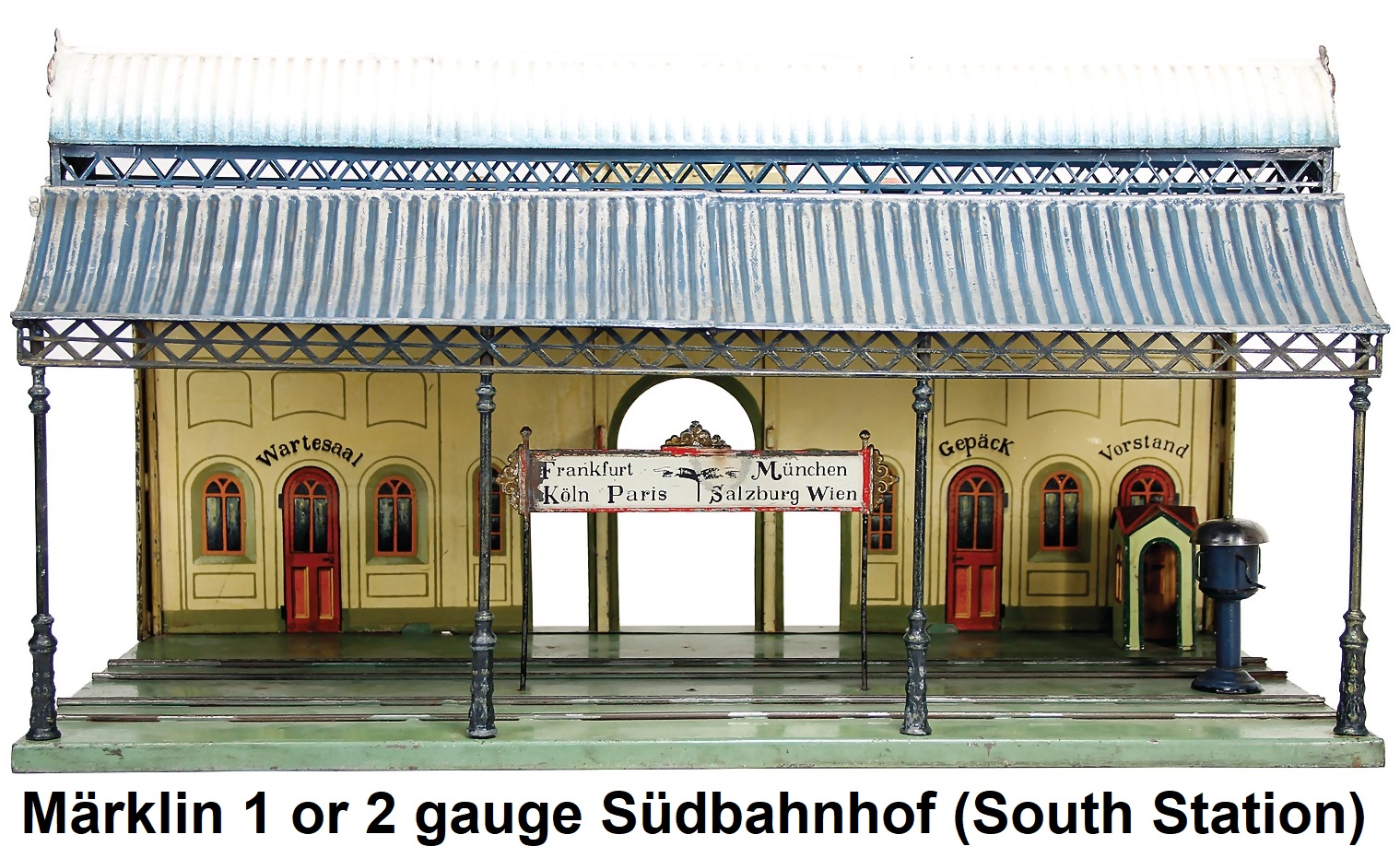
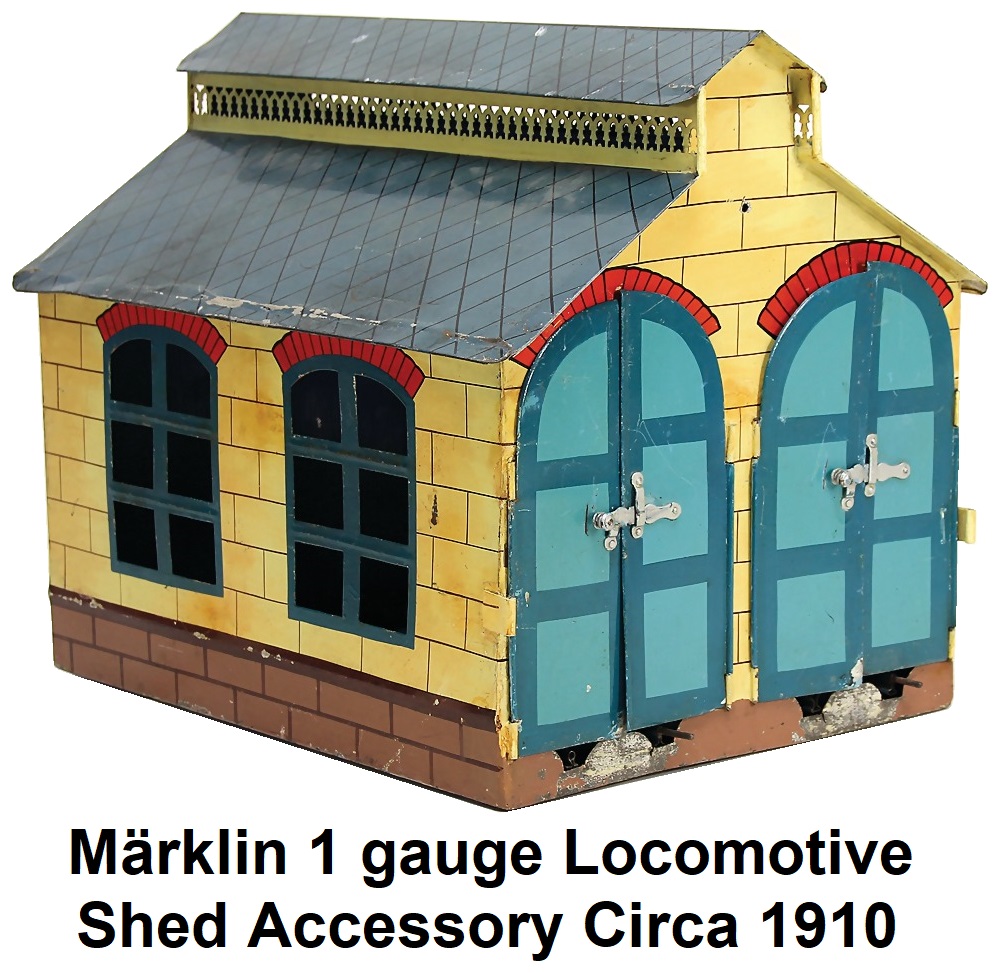
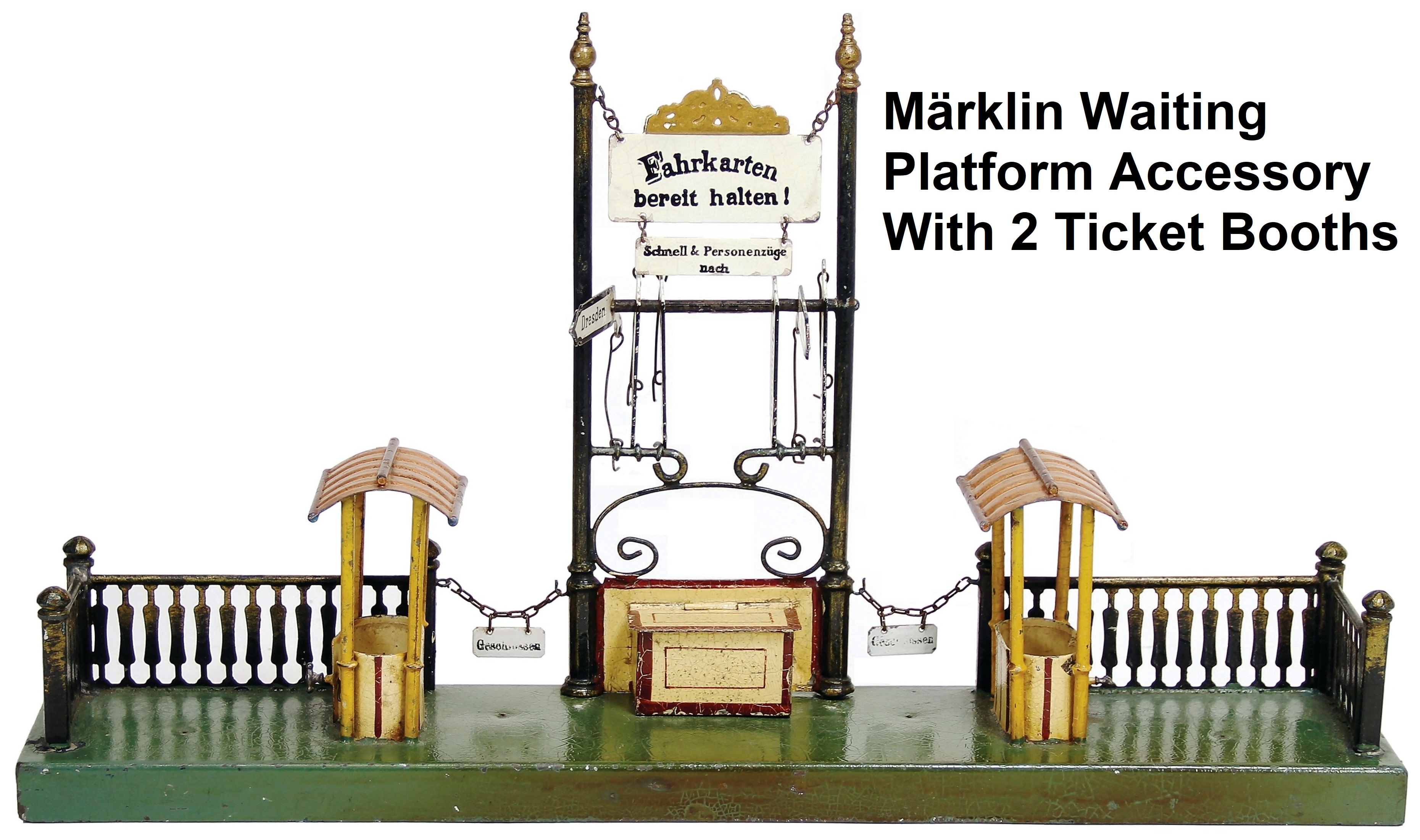 By 1914 the number of employees had risen to 600. The outbreak of World War I presented a situation for Märklin, similar to
its competetion, as a challenging period. Many of the specialist staff were called up to serve in the military, and only a
few returned. Production was forced to switch to 'wartime articles' and the firm's spectacular growth, particularly in the
export field, was brought to an abrupt halt. Suddenly access to foreign markets was cut and there was no customer
base for part of the products which had been custom manufactured to the requirements of the target countries. The factory and
Märklin’s business remained relatively intact during both World Wars despite considerable losses of employees to the war
effort and a temporary shift in production to war materials. The stamping machines at the Märklin factory were converted
to produce shell casings, belt buckles, and an assortment of military items during World War I.
By 1914 the number of employees had risen to 600. The outbreak of World War I presented a situation for Märklin, similar to
its competetion, as a challenging period. Many of the specialist staff were called up to serve in the military, and only a
few returned. Production was forced to switch to 'wartime articles' and the firm's spectacular growth, particularly in the
export field, was brought to an abrupt halt. Suddenly access to foreign markets was cut and there was no customer
base for part of the products which had been custom manufactured to the requirements of the target countries. The factory and
Märklin’s business remained relatively intact during both World Wars despite considerable losses of employees to the war
effort and a temporary shift in production to war materials. The stamping machines at the Märklin factory were converted
to produce shell casings, belt buckles, and an assortment of military items during World War I.
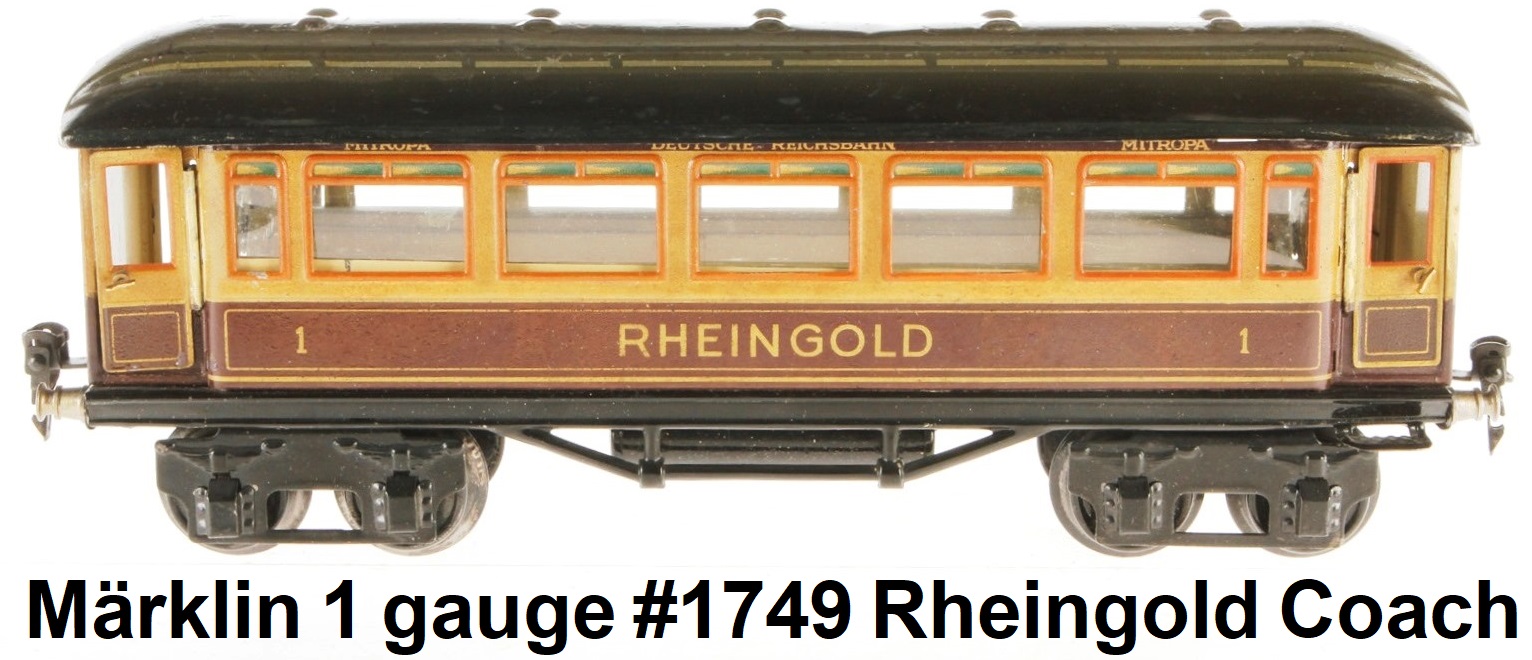
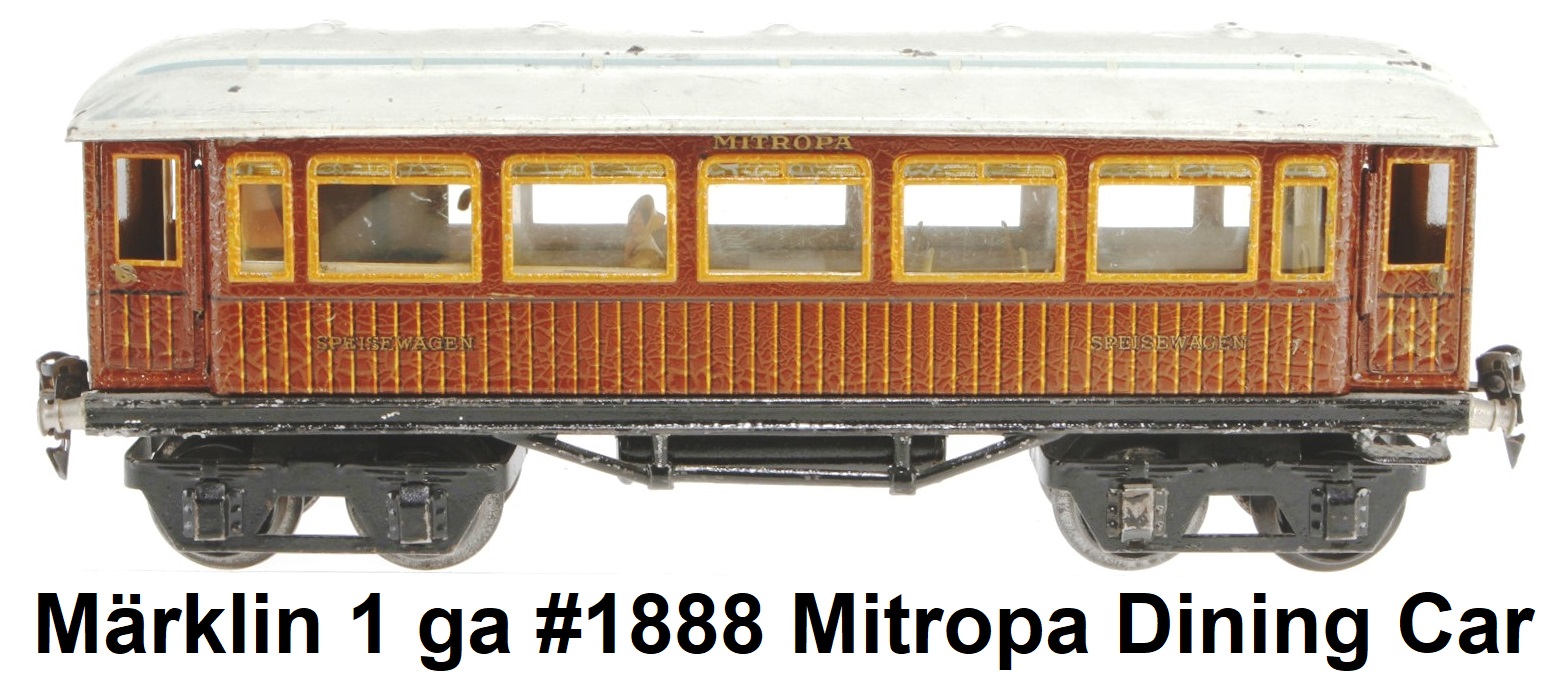
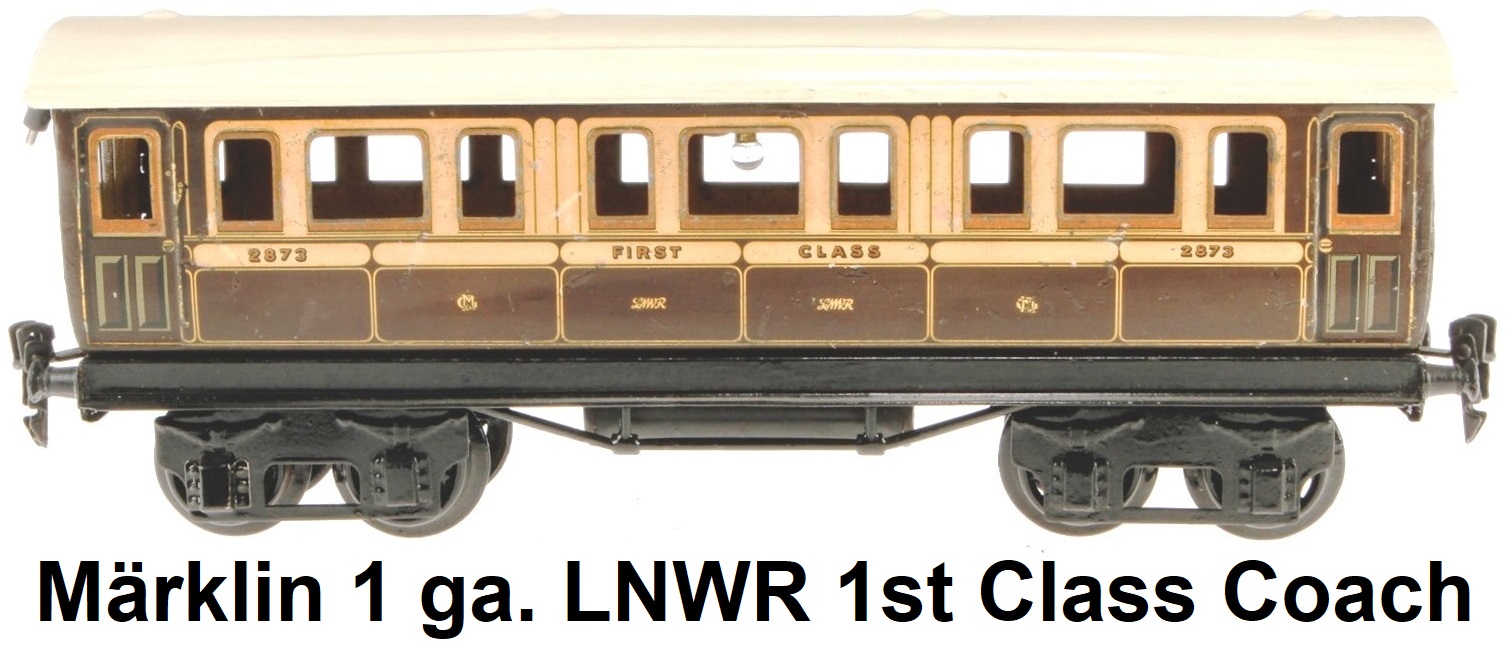
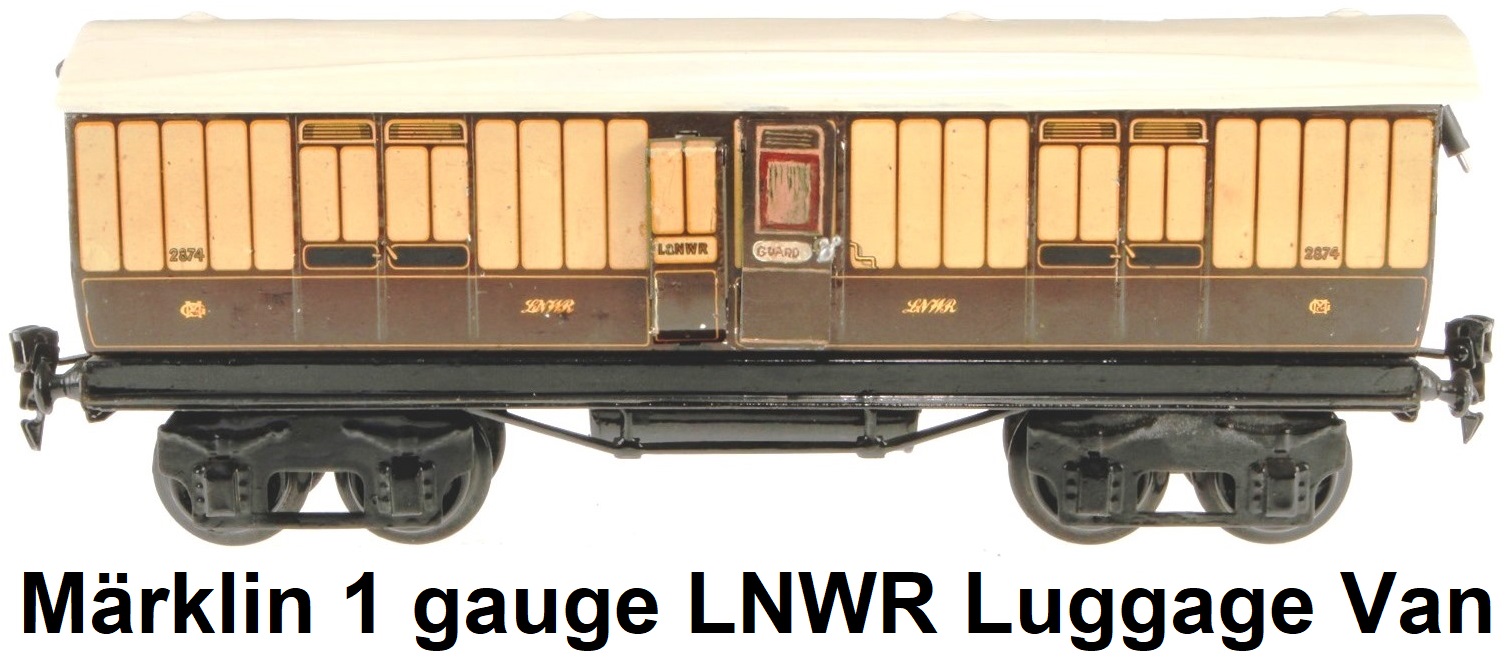
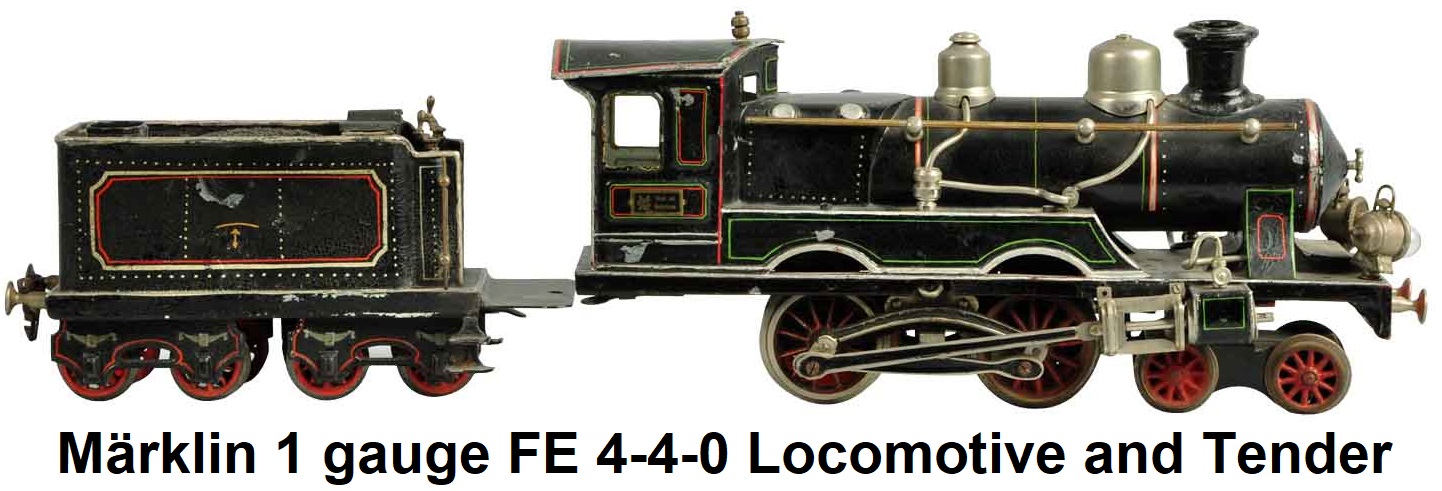 Faced with this predicament it proved a boon that - in contrast to other toy manufacturers - the firm
had not neglected the home market and thus survived the difficult post-war era relatively well. Even so,
various changes of course proved necessary after 1920 in both the business and the technical fields. The
switch from an unlimited trading company to a limited liability company - originally planned for tax
purposes - was deemed a necessity after the death of Emil Friz in 1922. It was not until four years
later that his son-in-law, Max Scheerer, became the firm's third managing director. In 1923 Eugen
Märklin's son Fritz joined the company, and in 1935 took over his father's position when the latter
retired after 50 years.
Faced with this predicament it proved a boon that - in contrast to other toy manufacturers - the firm
had not neglected the home market and thus survived the difficult post-war era relatively well. Even so,
various changes of course proved necessary after 1920 in both the business and the technical fields. The
switch from an unlimited trading company to a limited liability company - originally planned for tax
purposes - was deemed a necessity after the death of Emil Friz in 1922. It was not until four years
later that his son-in-law, Max Scheerer, became the firm's third managing director. In 1923 Eugen
Märklin's son Fritz joined the company, and in 1935 took over his father's position when the latter
retired after 50 years.
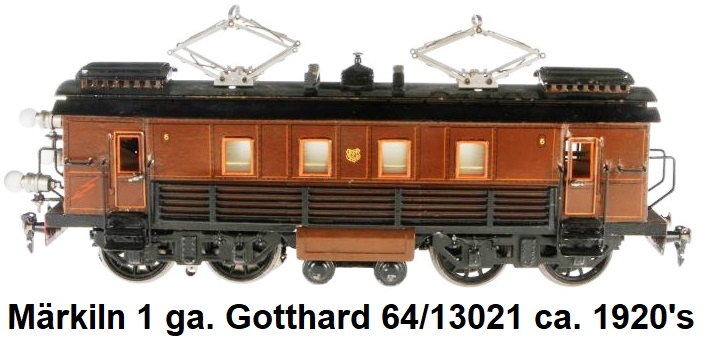 In 1920 Märklin introduced its 'O' gauge model of the Gotthard Be 4/6 110-volt electric outline locomotive for 3-rail track
as catalog number S 64/3020. The model was adorned with 3 operating electric lamps in front, and also featured both hand
lever and remote reversing capabilities and 2 overhead pantographs. This loco was modeled after 4 prototypes commissioned by
the Schweizerischen Bundesbahnen (Swiss Federal Railways) (SBB) in June 1917 to run passenger service on the Gotthardbahn
(Gotthard railway) Swiss trans-alpine railway line from northern Switzerland to the canton of Ticino in Italy. The main line
is the second highest
standard railway in Switzerland, crossing the Alps by means of the Gotthard Tunnel at 1,151 metres (3,776 ft) above sea level. The Märklin Gotthard model measured 30 cm long and remained in production until 1926 when two more new Gotthard designs were
introduced to the market. One was an 'O' gauge version as catalog number S 64/13020 and one was a 1 gauge version as S
64/13021. The new 'O' gauge model measured 25.6 cm long and the new 1 gauge model measured 44 cm long. These versions of the
Gotthard locomotive remained in the catalogs through 1928. All of these models utilized the 64/ Fernschaltung (Märklin remote
reversing system of the 1920's) numbering classification. Over time, Märklin would change the number classifications to match
the developments and evolution of their Fernschaltung systems which would become 65/ 66/ 67/ and eventually 70/.
HS 65/13021 20-volt versions of the Märklin Gotthard Be 4/6 appeared in catalogs through 1931 in brown, then starting in 1932
the color was changed to green.
In 1920 Märklin introduced its 'O' gauge model of the Gotthard Be 4/6 110-volt electric outline locomotive for 3-rail track
as catalog number S 64/3020. The model was adorned with 3 operating electric lamps in front, and also featured both hand
lever and remote reversing capabilities and 2 overhead pantographs. This loco was modeled after 4 prototypes commissioned by
the Schweizerischen Bundesbahnen (Swiss Federal Railways) (SBB) in June 1917 to run passenger service on the Gotthardbahn
(Gotthard railway) Swiss trans-alpine railway line from northern Switzerland to the canton of Ticino in Italy. The main line
is the second highest
standard railway in Switzerland, crossing the Alps by means of the Gotthard Tunnel at 1,151 metres (3,776 ft) above sea level. The Märklin Gotthard model measured 30 cm long and remained in production until 1926 when two more new Gotthard designs were
introduced to the market. One was an 'O' gauge version as catalog number S 64/13020 and one was a 1 gauge version as S
64/13021. The new 'O' gauge model measured 25.6 cm long and the new 1 gauge model measured 44 cm long. These versions of the
Gotthard locomotive remained in the catalogs through 1928. All of these models utilized the 64/ Fernschaltung (Märklin remote
reversing system of the 1920's) numbering classification. Over time, Märklin would change the number classifications to match
the developments and evolution of their Fernschaltung systems which would become 65/ 66/ 67/ and eventually 70/.
HS 65/13021 20-volt versions of the Märklin Gotthard Be 4/6 appeared in catalogs through 1931 in brown, then starting in 1932
the color was changed to green.
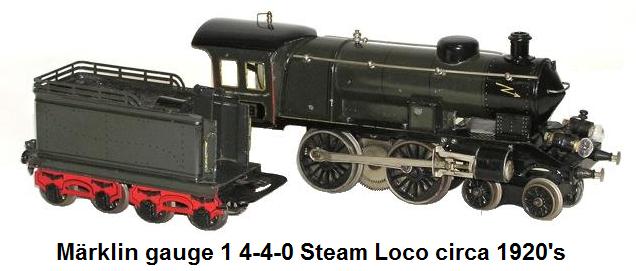
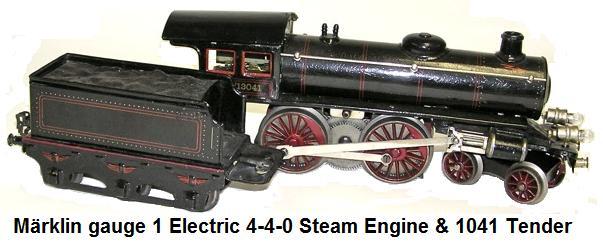
 In 1921 Märklin issued the highly detailed 1 gauge H 4021 PLM 2-C-1 live-steam spirit fired
locomotive with 4A 8-wheeled tender. It featured a brass boiler, helmet lamps, sprung buffers, and was hand painted.
The loco and tender measured 29" in length and it was fitted with a fire tube so that the flame ran through the whole
boiler to the chimney. This feature provided the generation of intense interior heat and the results were extra power for
the engine. It also prevented the burner flames from discoloring the outside of the boiler finish. The H 4021 was
offered in black, gray or green lacquer with clear varnish. Early versions were fitted with red painted drivers and
wheels. This locomotive was targeted towards the French market. Märklin touted the fact that steam powered locomotives could
run for a much longer period of time than clockwork powered locomotives, even if they had the best mechanisms with highly
tempered springs.
In 1921 Märklin issued the highly detailed 1 gauge H 4021 PLM 2-C-1 live-steam spirit fired
locomotive with 4A 8-wheeled tender. It featured a brass boiler, helmet lamps, sprung buffers, and was hand painted.
The loco and tender measured 29" in length and it was fitted with a fire tube so that the flame ran through the whole
boiler to the chimney. This feature provided the generation of intense interior heat and the results were extra power for
the engine. It also prevented the burner flames from discoloring the outside of the boiler finish. The H 4021 was
offered in black, gray or green lacquer with clear varnish. Early versions were fitted with red painted drivers and
wheels. This locomotive was targeted towards the French market. Märklin touted the fact that steam powered locomotives could
run for a much longer period of time than clockwork powered locomotives, even if they had the best mechanisms with highly
tempered springs.
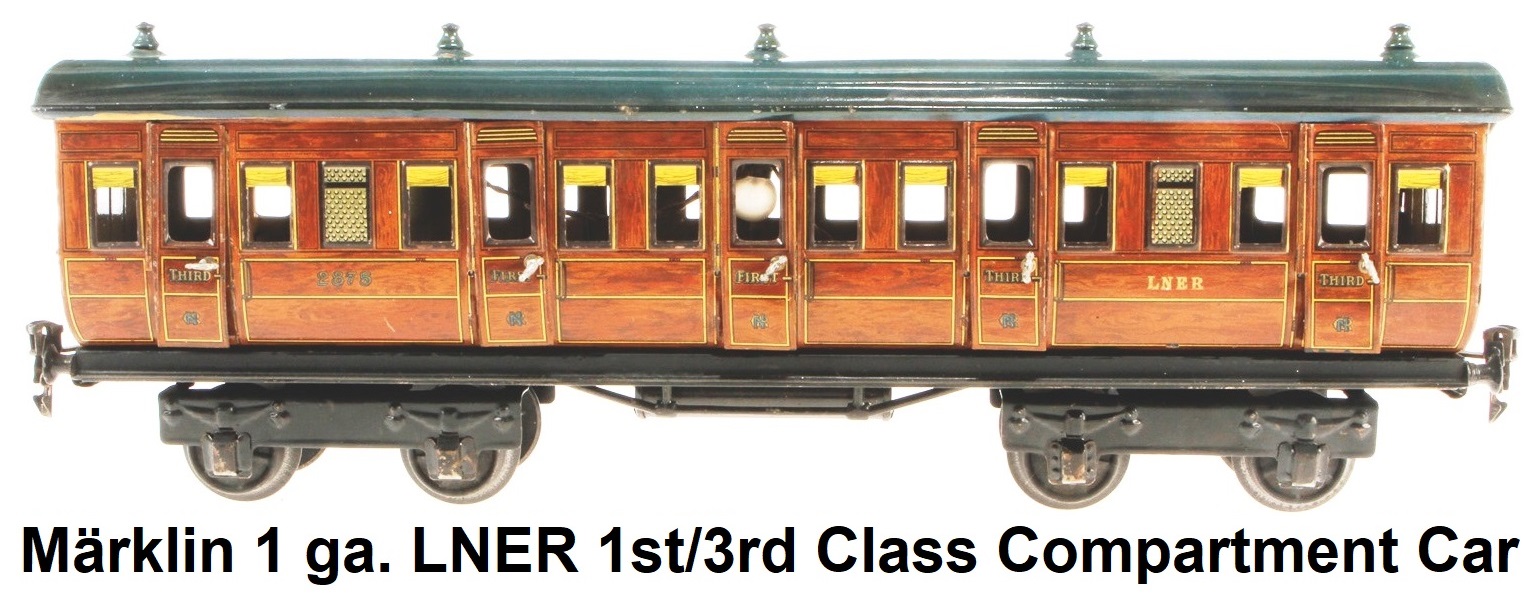


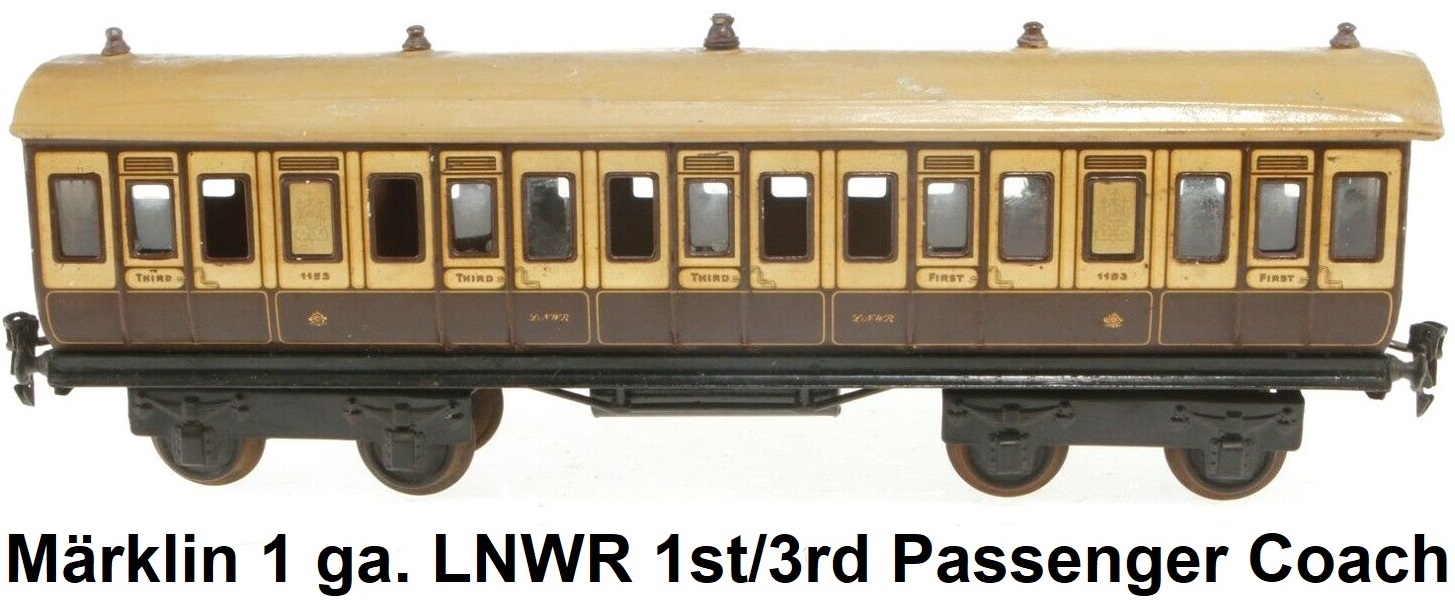
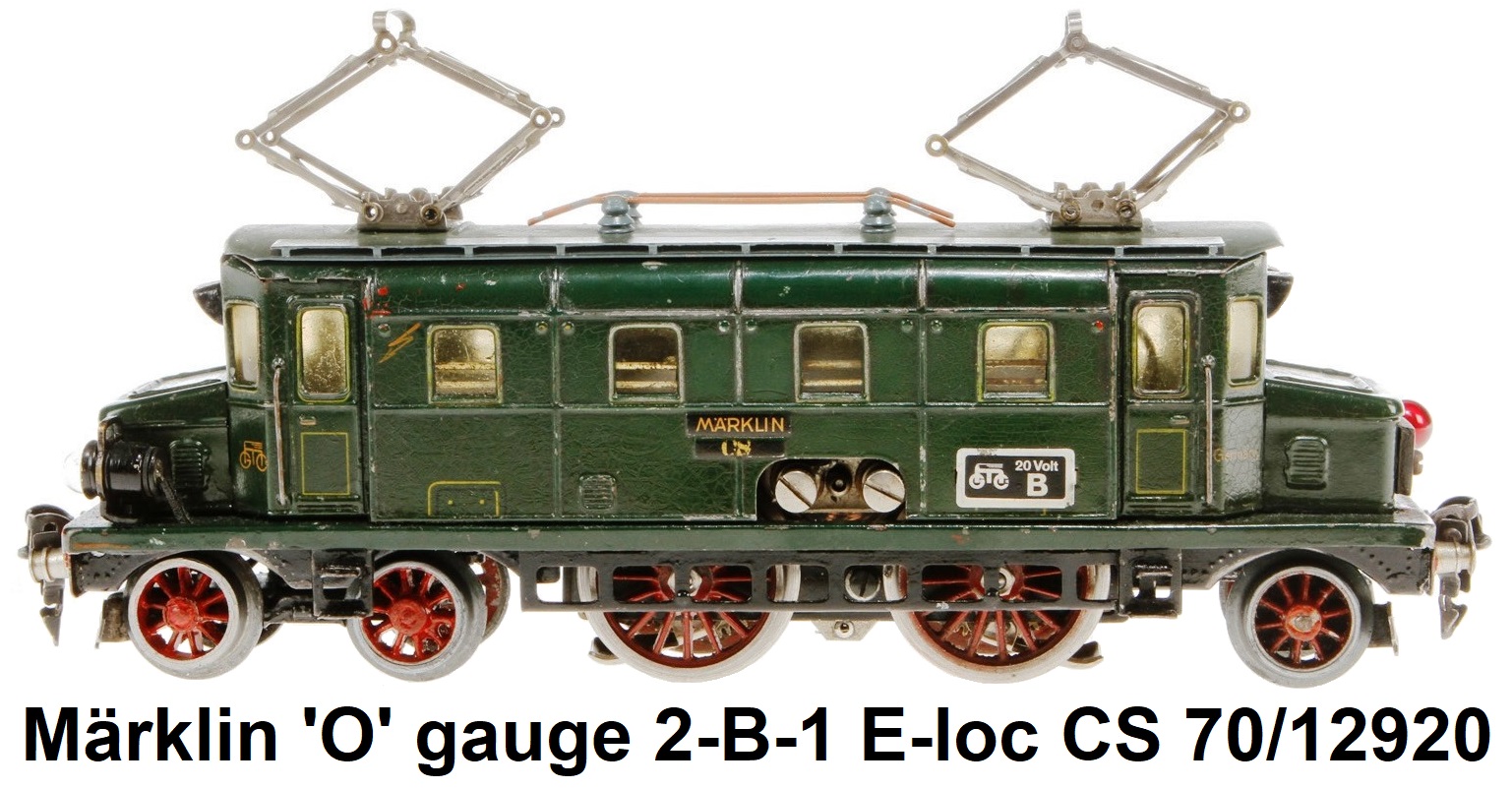 The 50 volt electric system used in Märklin's electric powered trains, called 'Starkstrom' was prohibited
by the German government in 1926. At that time low voltage transformers had become feasible and a less dangerous 20 volt
system became the main power for 'O' and eventually 'OO' gauges, from 1926 on. Advertisements for Märklin trains from the
1920's and 1930's touted the ease-of-use and safety of employing electric current for powering toy trains as being much safer
than the spirit fired live-steam powered systems. In the 1920's Märklin also used a unique system that leveraged
compressed air to operate signals and switches by means of thin rubber hoses.
The 50 volt electric system used in Märklin's electric powered trains, called 'Starkstrom' was prohibited
by the German government in 1926. At that time low voltage transformers had become feasible and a less dangerous 20 volt
system became the main power for 'O' and eventually 'OO' gauges, from 1926 on. Advertisements for Märklin trains from the
1920's and 1930's touted the ease-of-use and safety of employing electric current for powering toy trains as being much safer
than the spirit fired live-steam powered systems. In the 1920's Märklin also used a unique system that leveraged
compressed air to operate signals and switches by means of thin rubber hoses.
From 1921 on, numbered consumer catalogs appeared regularly until the war years of 1941 to 1946.
The title pages were already being printed in color then. Starting in 1929 the inside pages were also done in color,
the first catalog to be printed completely in color being #12 in 1935.
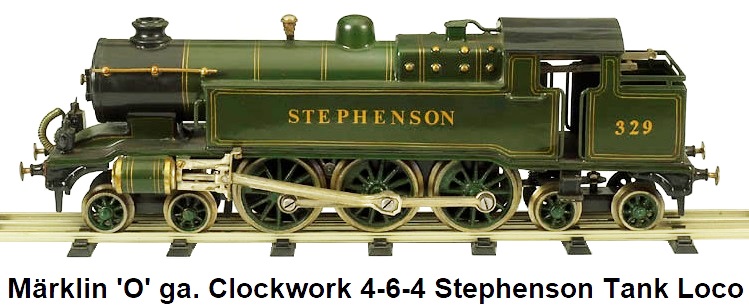 From 1925 to 1930 Märklin produced a green, clockwork, gauge 1 model of the Southern Railway's
Stephenson 4-6-4 Baltic tank locomotive, running #329, catalog #TK1021. In the UK, A.W. Gamage's carried this model.
The Stephenson prototype was named in honor of George Stephenson, the famous builder of The Rocket. The Märklin Stephenson
tank locomotive model was not a huge success. It was also eventually produced in 'O' gauge as TK1020. The proportions of
the smaller 'O' gauge version were a little cruder than the increasingly sophisticated 1925 market was coming to expect
from major manufacturers, and its large cylinders were notably out of scale. The Gauge 1 version was able to be much
better-proportioned, but was serving a shrinking market as 'O' gauge was becoming more widespread. Since the loco was
designed for the UK market, lack of UK sales put Märklin in an awkward position, and stocks ended up being cleared through
third-party sellers without Märklin's name appearing in the advertising – for instance, both gauge versions of the Stephenson
tank loco model appear in the Bond's of Euston Road 1932-33 catalogue, without obvious Märklin
identification, but with the standard Märklin catalogue numbers.
From 1925 to 1930 Märklin produced a green, clockwork, gauge 1 model of the Southern Railway's
Stephenson 4-6-4 Baltic tank locomotive, running #329, catalog #TK1021. In the UK, A.W. Gamage's carried this model.
The Stephenson prototype was named in honor of George Stephenson, the famous builder of The Rocket. The Märklin Stephenson
tank locomotive model was not a huge success. It was also eventually produced in 'O' gauge as TK1020. The proportions of
the smaller 'O' gauge version were a little cruder than the increasingly sophisticated 1925 market was coming to expect
from major manufacturers, and its large cylinders were notably out of scale. The Gauge 1 version was able to be much
better-proportioned, but was serving a shrinking market as 'O' gauge was becoming more widespread. Since the loco was
designed for the UK market, lack of UK sales put Märklin in an awkward position, and stocks ended up being cleared through
third-party sellers without Märklin's name appearing in the advertising – for instance, both gauge versions of the Stephenson
tank loco model appear in the Bond's of Euston Road 1932-33 catalogue, without obvious Märklin
identification, but with the standard Märklin catalogue numbers.
 In 1927, when the 20 Volt electric system became available, the evolution of
electric trains could really take off, and Märklin became the number 1 maker of toy trains in Europe.
They used the German Reichsbahn (German State Railroad) founded in 1920 as inspiration for the design
of its locomotives and rolling stock, and also the whole field of accessories. Märklin's "Reichsbahn era"
between 1927 and 1939 brought a whole fresh impetus. By 1929 the number of employees had risen to 900.
In 1933 a key competitor, Bing had ceased toy production,
automatically making Märklin the market leader as the Nuremberg company of Karl Bub
- with its cheap mass production - was not seen as a serious competitor.
Trains in gauge 1 were produced until 1935, when the smaller 'OO' came on the market. This gauge later became the
modern HO. The pinnacle of 1 gauge production for Märklin came with the release of its Crocodile electric locomotive
in 1933. However, 'O' gauge became the more popular gauge during the 1930's, and Märklin decided to abandon production
in 1 gauge at that time.
In 1927, when the 20 Volt electric system became available, the evolution of
electric trains could really take off, and Märklin became the number 1 maker of toy trains in Europe.
They used the German Reichsbahn (German State Railroad) founded in 1920 as inspiration for the design
of its locomotives and rolling stock, and also the whole field of accessories. Märklin's "Reichsbahn era"
between 1927 and 1939 brought a whole fresh impetus. By 1929 the number of employees had risen to 900.
In 1933 a key competitor, Bing had ceased toy production,
automatically making Märklin the market leader as the Nuremberg company of Karl Bub
- with its cheap mass production - was not seen as a serious competitor.
Trains in gauge 1 were produced until 1935, when the smaller 'OO' came on the market. This gauge later became the
modern HO. The pinnacle of 1 gauge production for Märklin came with the release of its Crocodile electric locomotive
in 1933. However, 'O' gauge became the more popular gauge during the 1930's, and Märklin decided to abandon production
in 1 gauge at that time.
|
Prewar Märklin 'O' gauge Rolling Stock
|
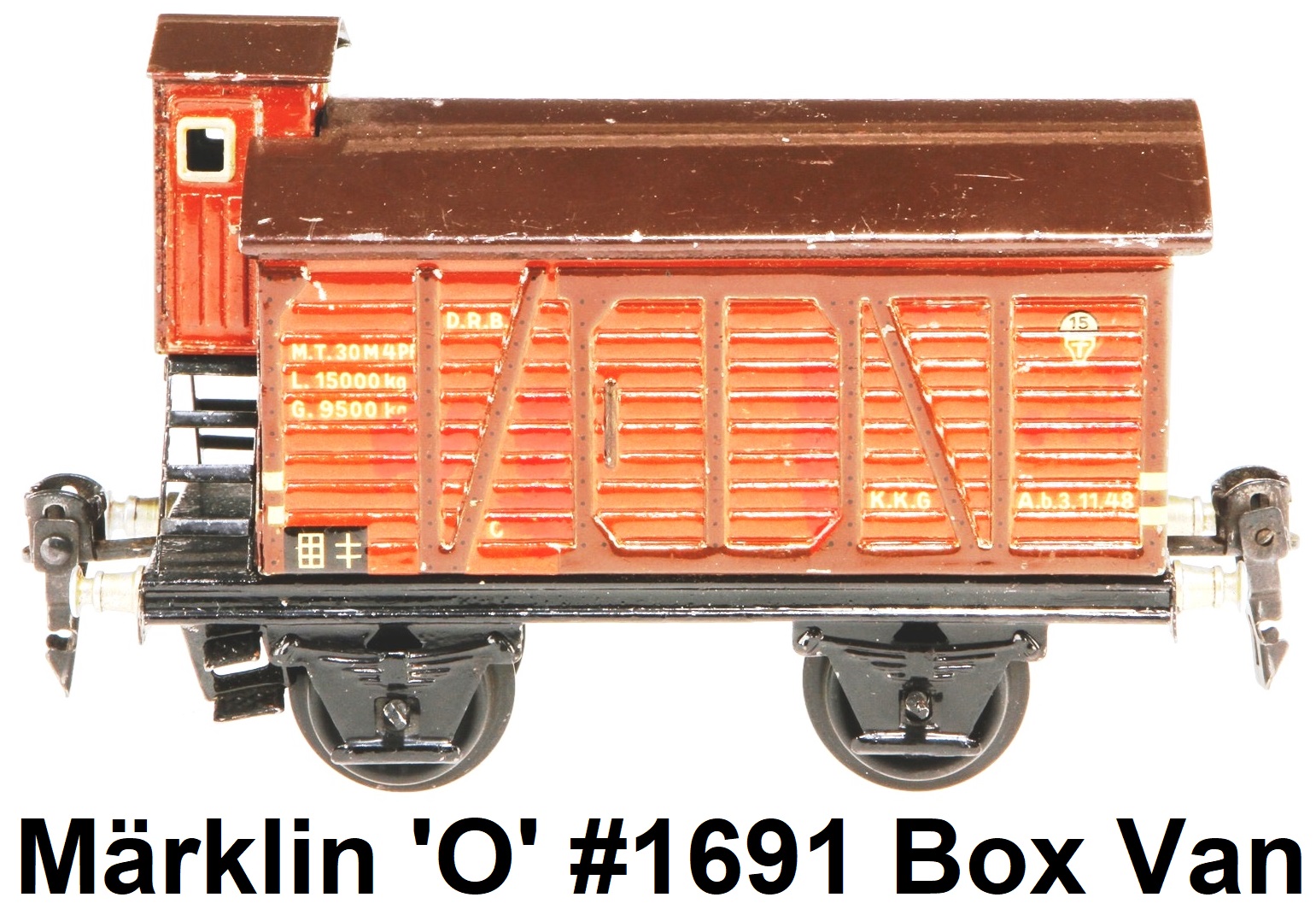 |
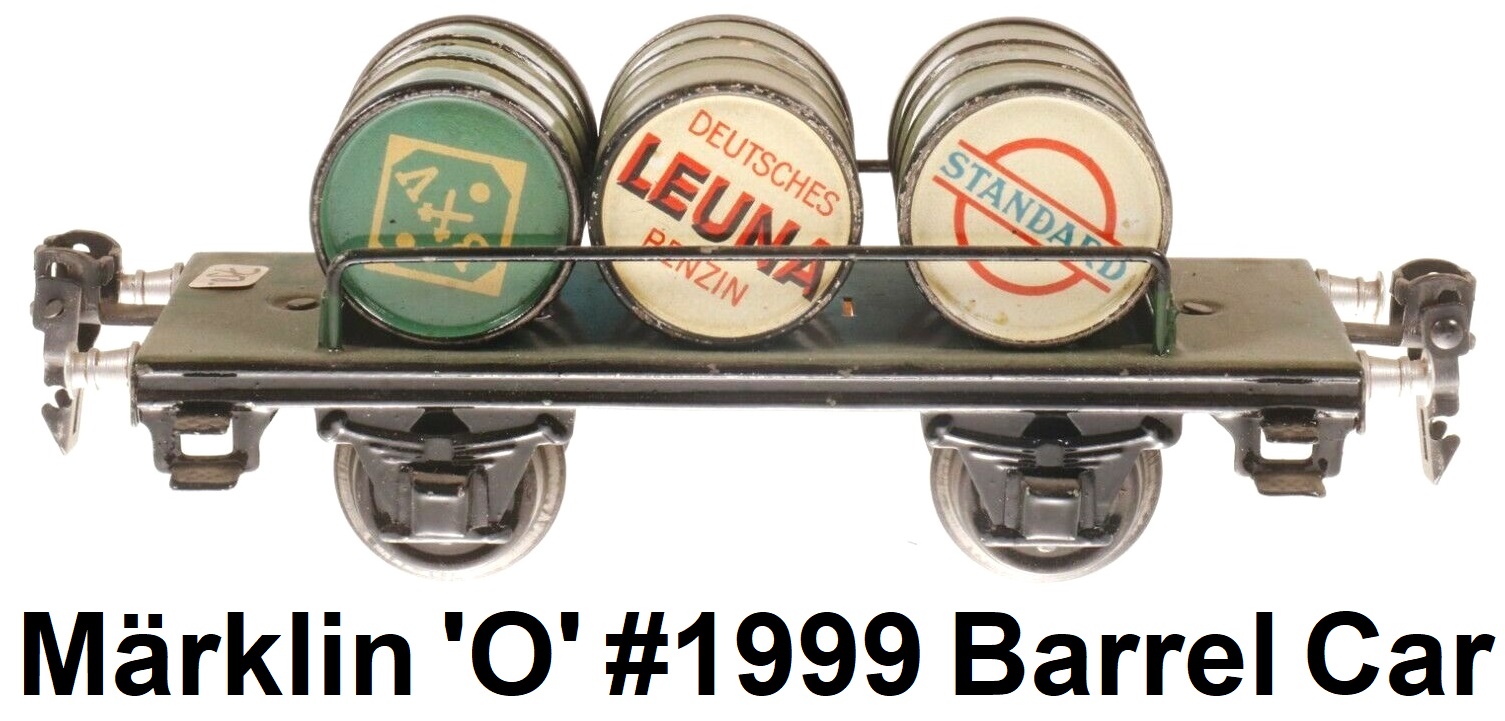 |
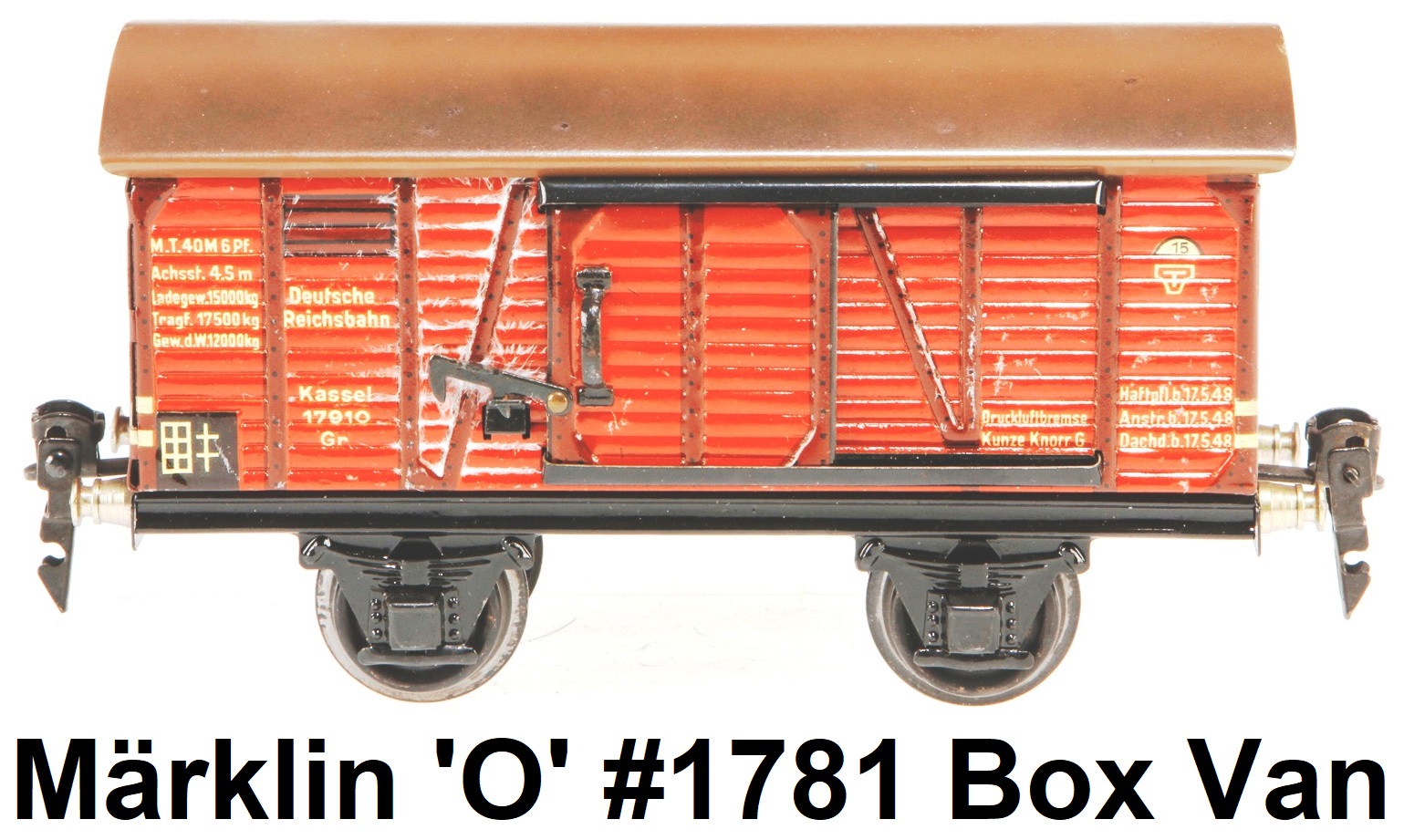 |
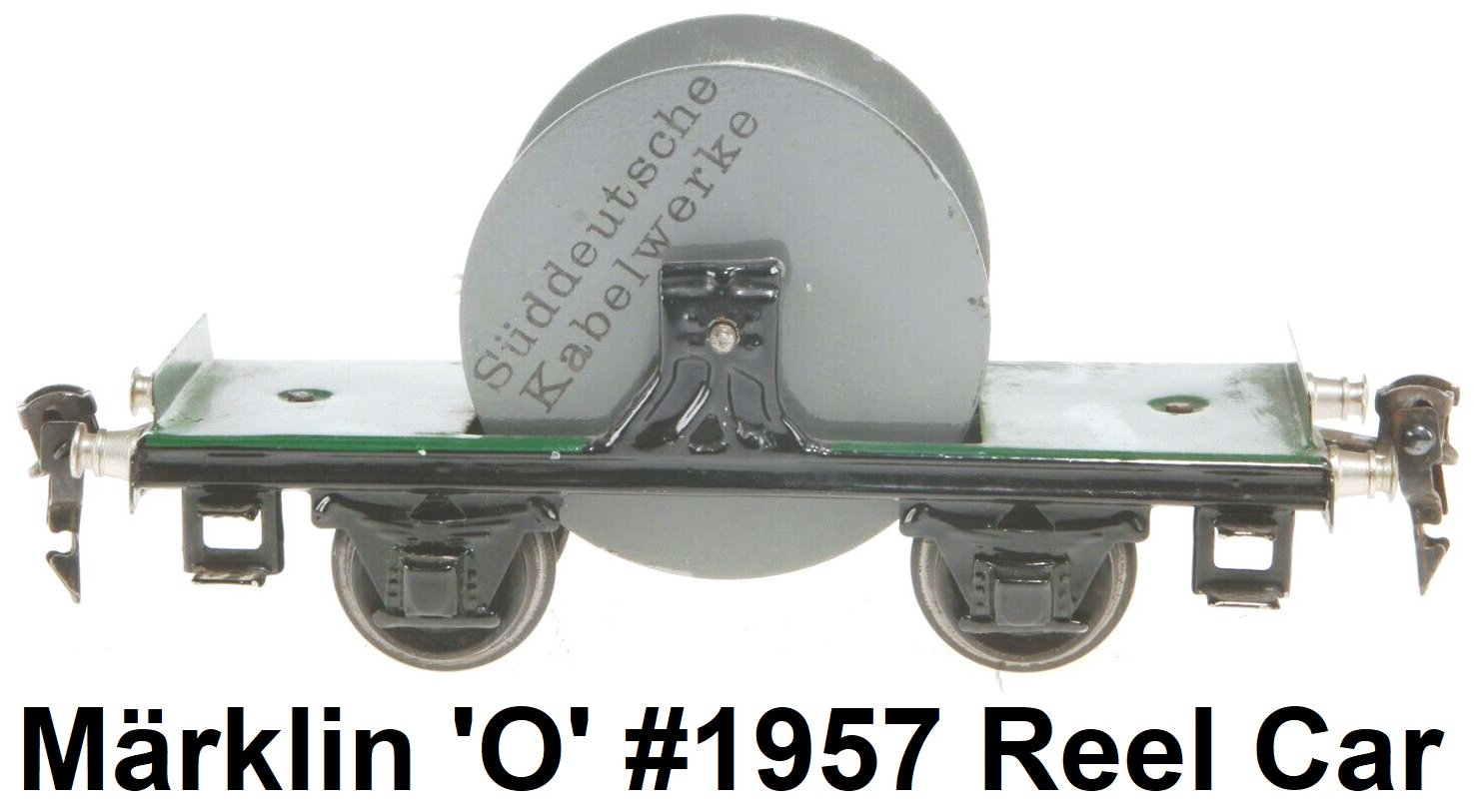 |
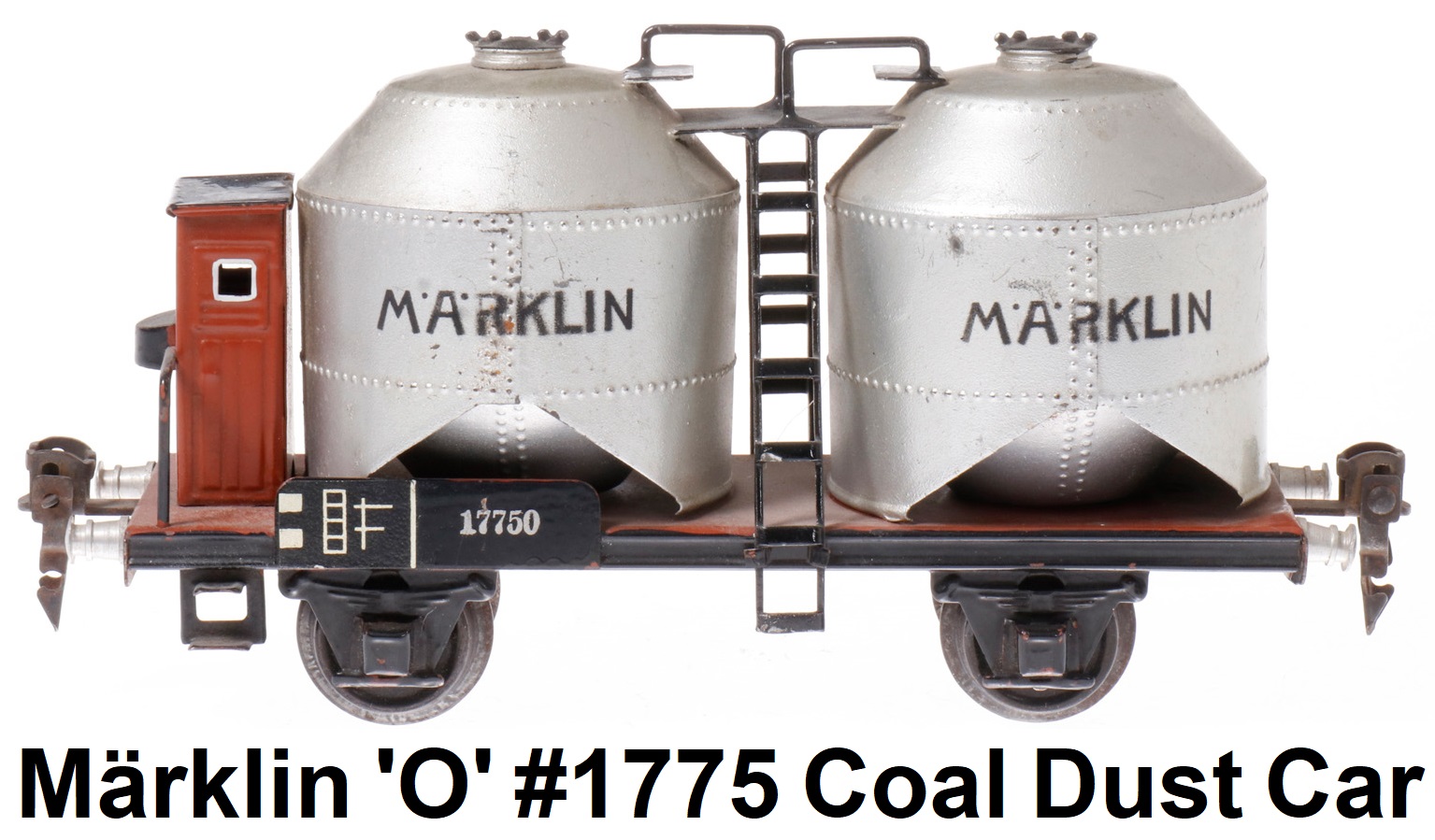 |
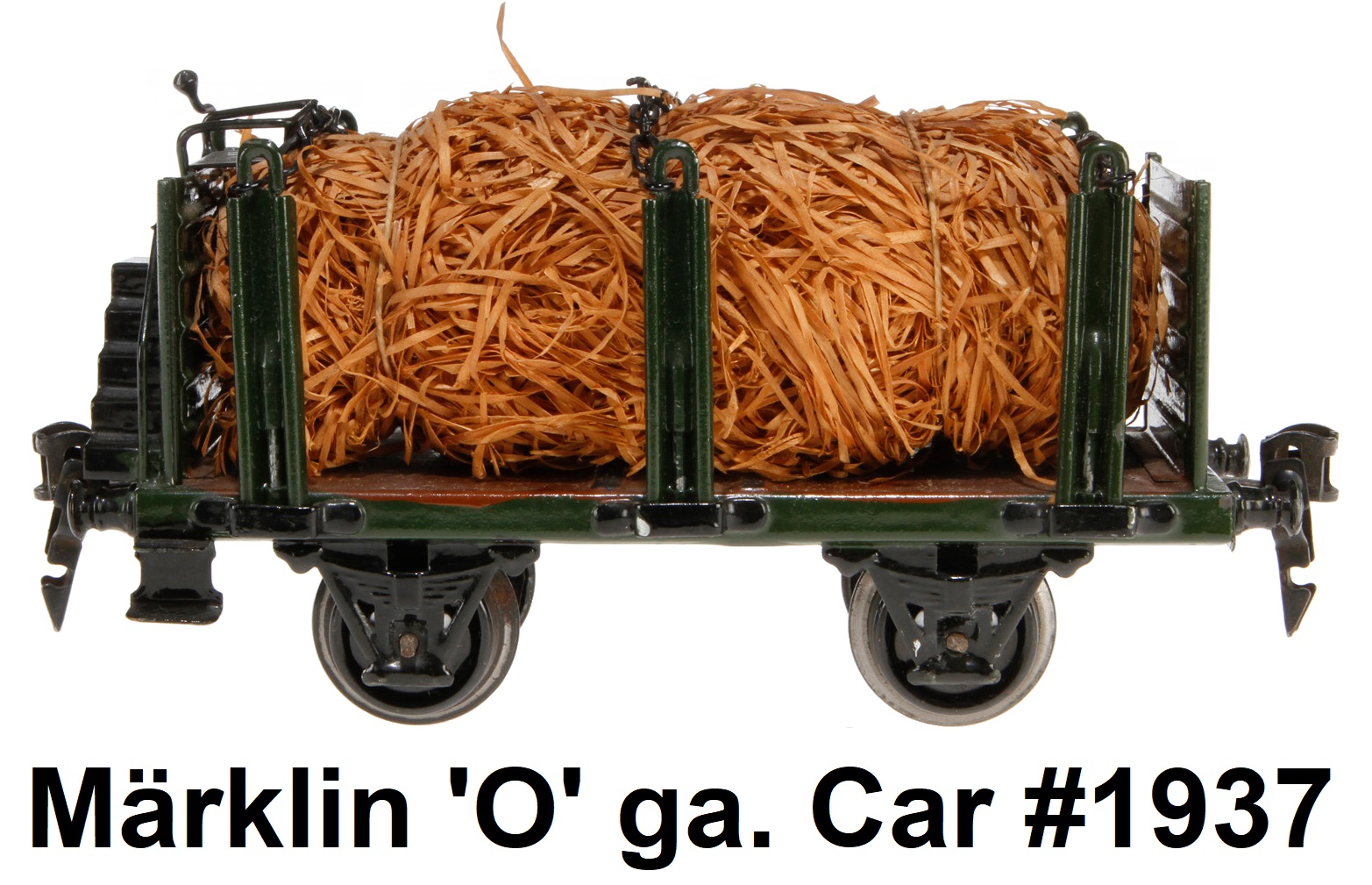 |
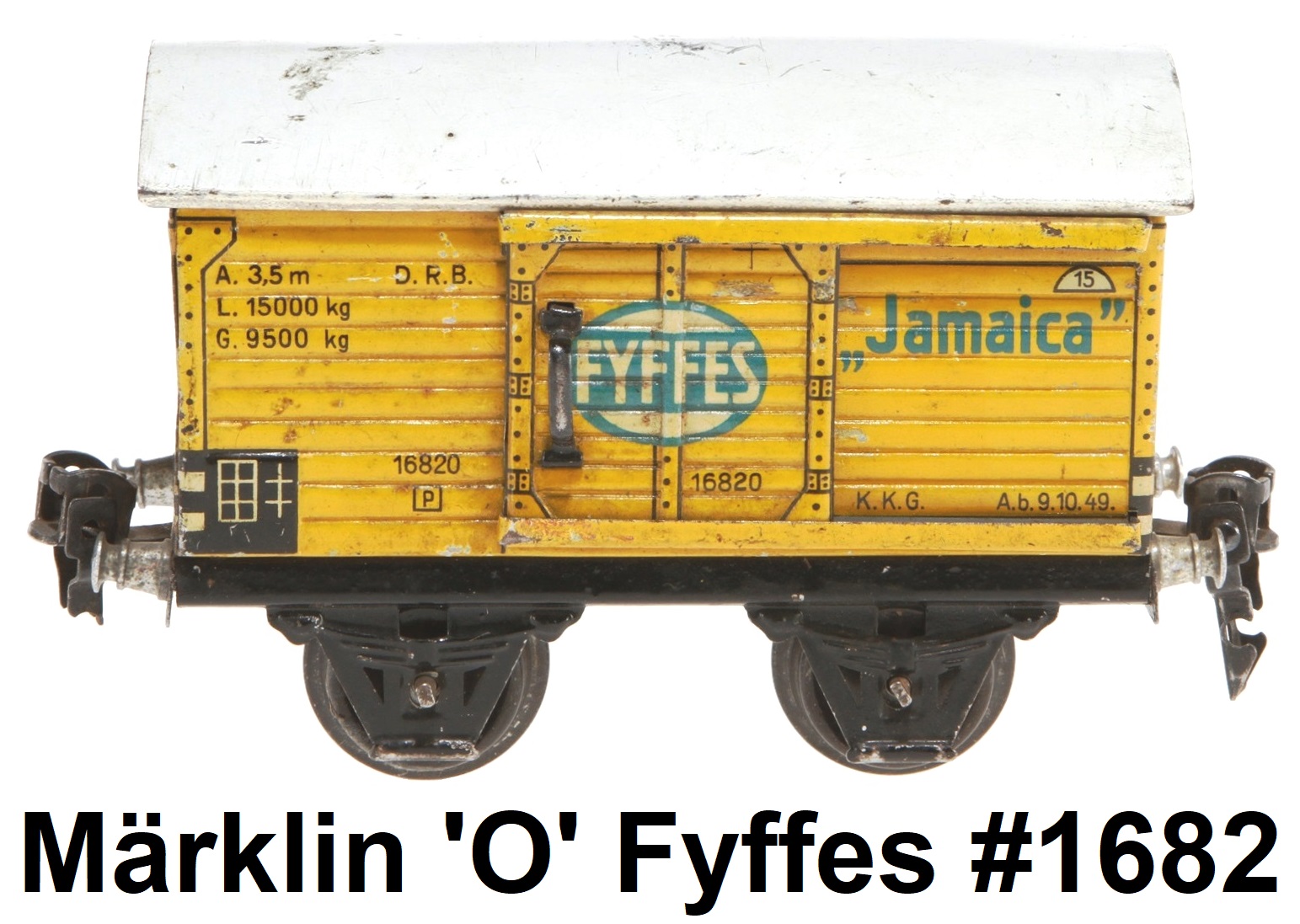 |
 |
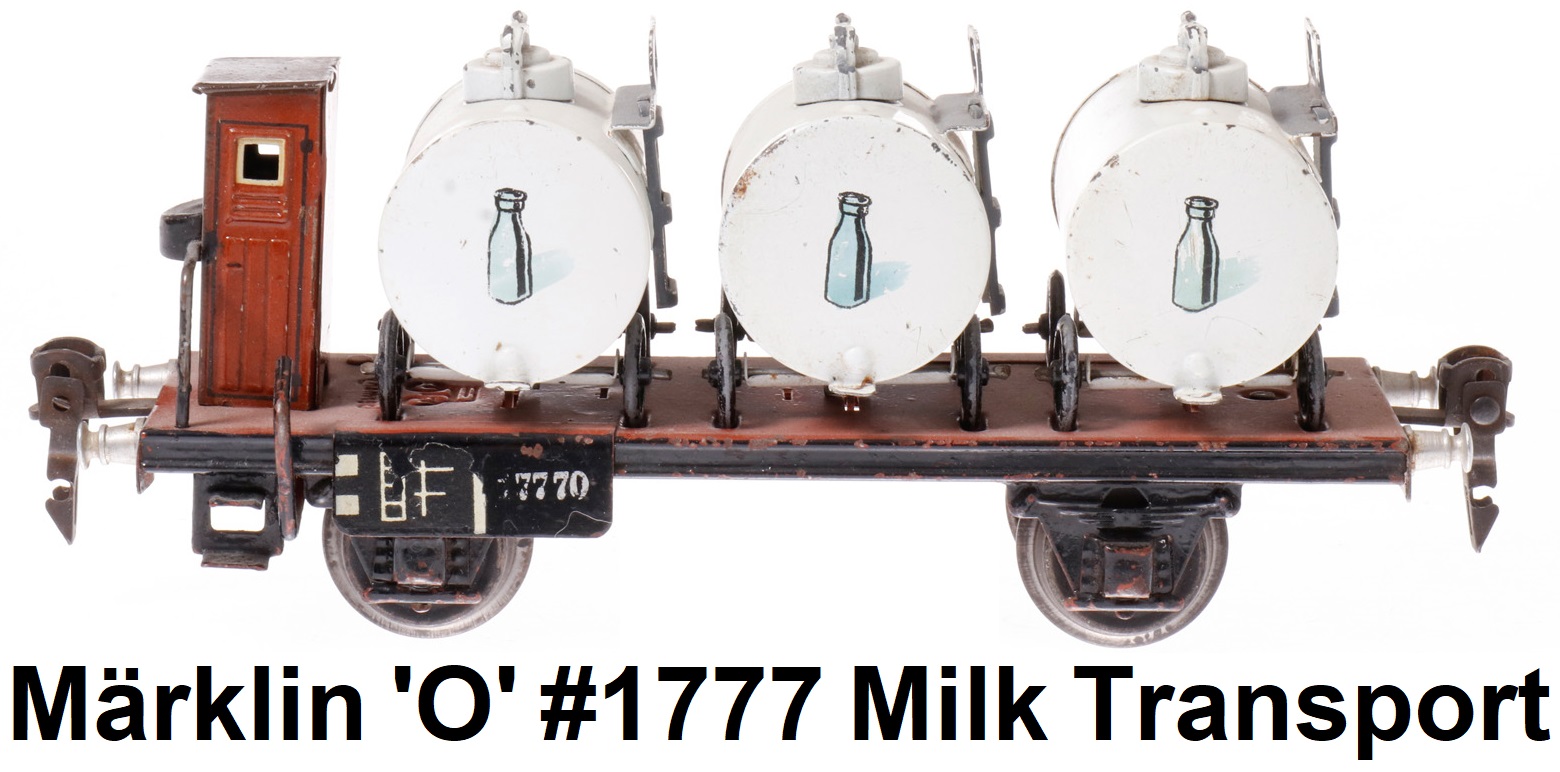 |
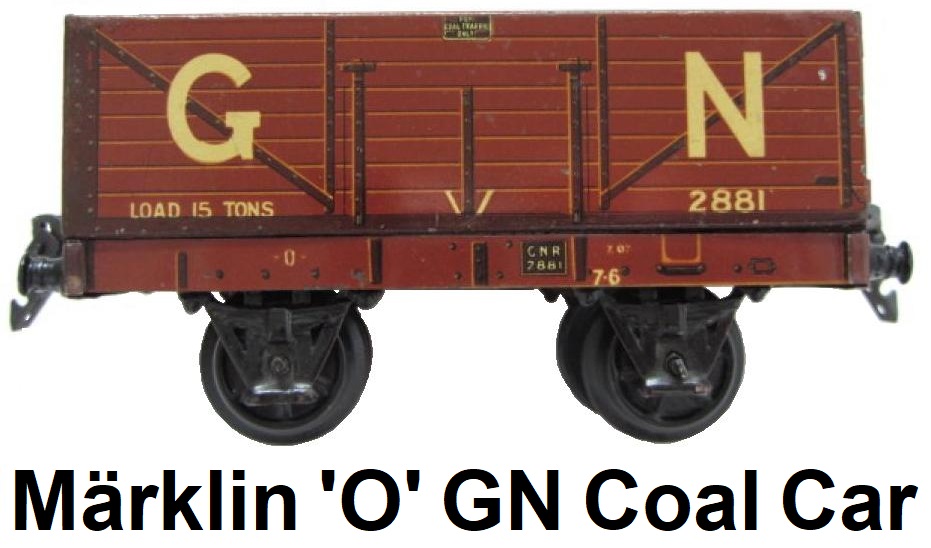 |
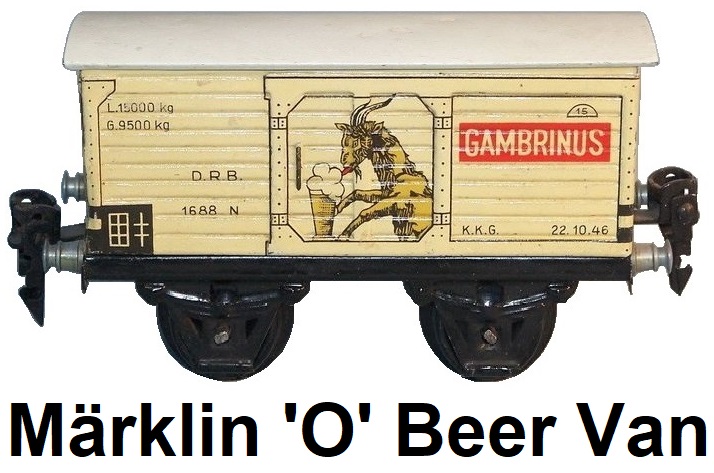 |
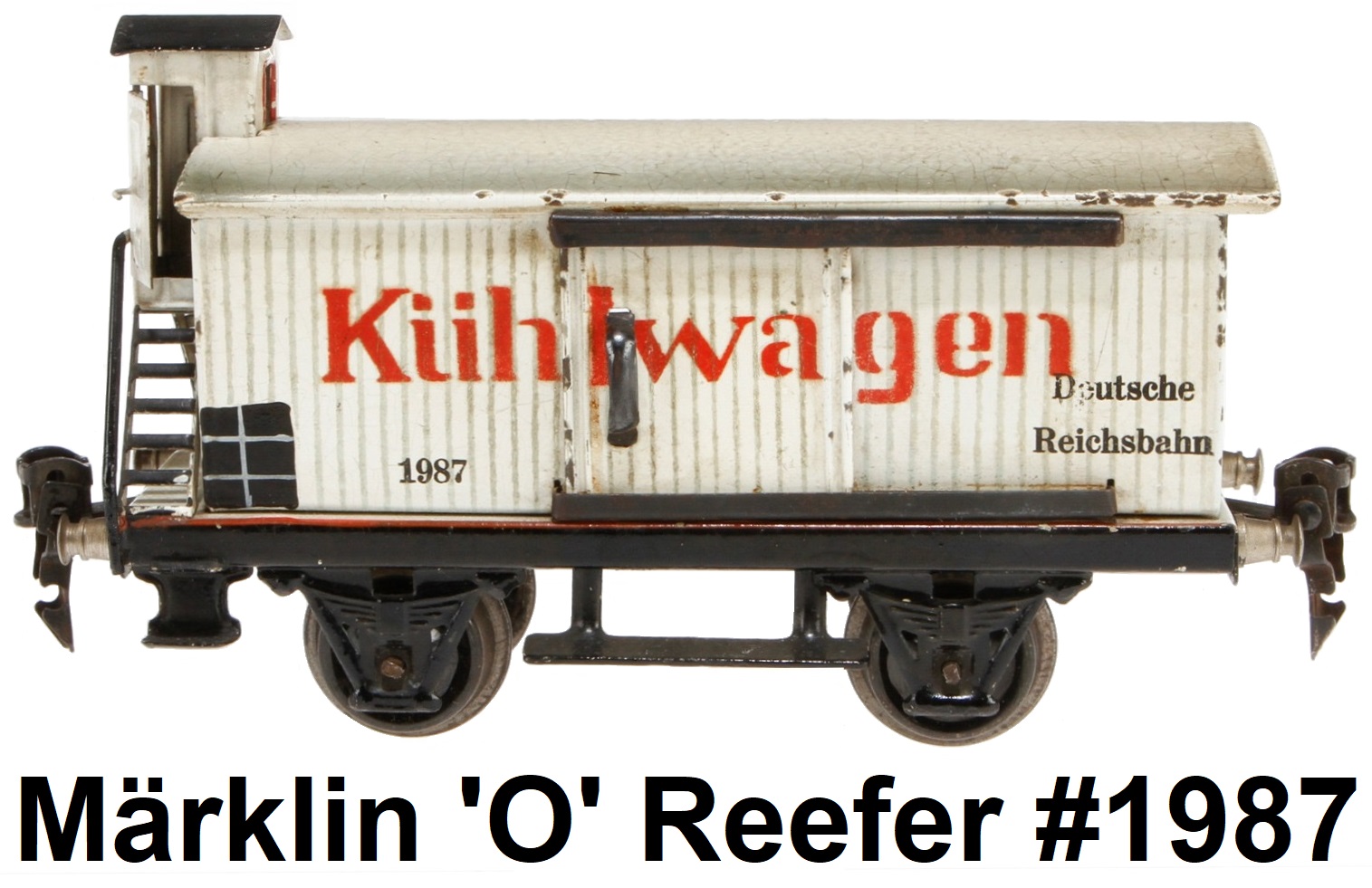 |
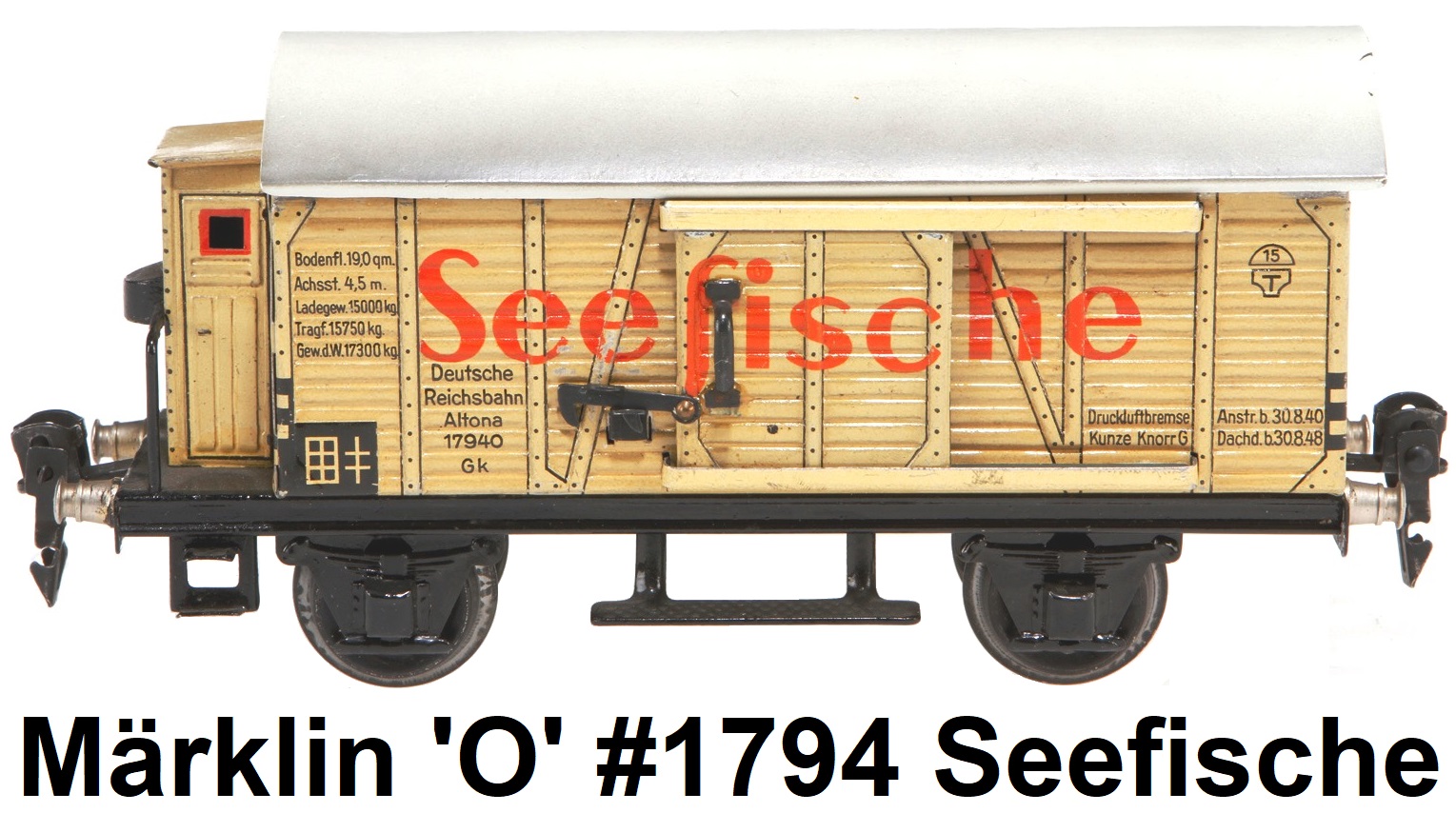 |
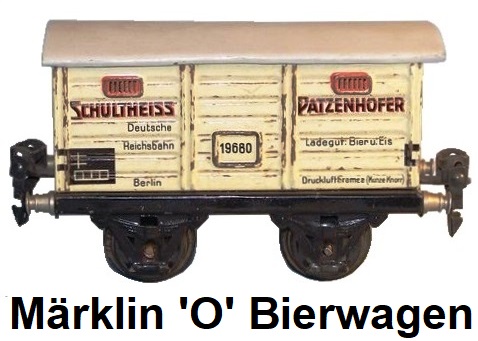 |
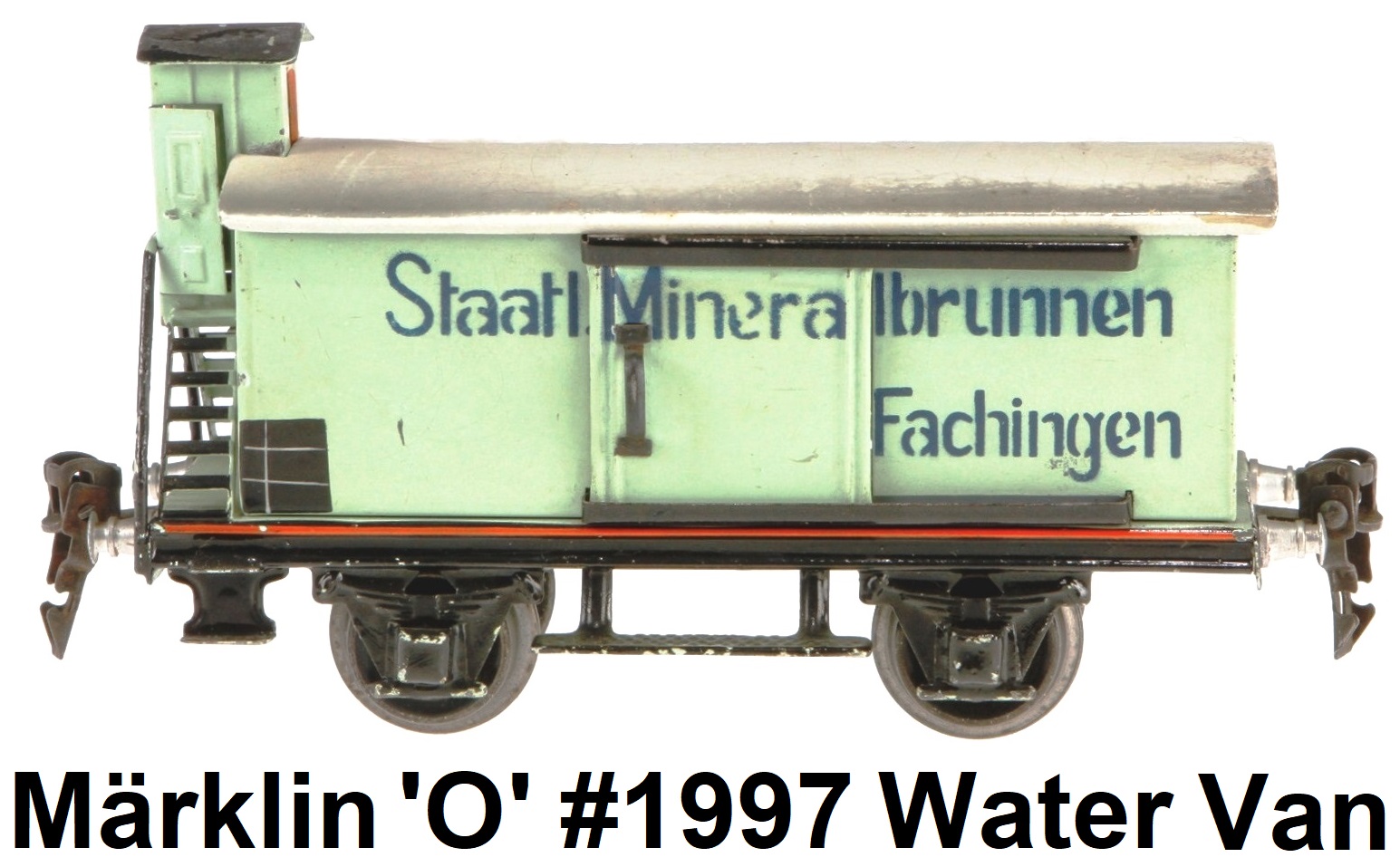 |
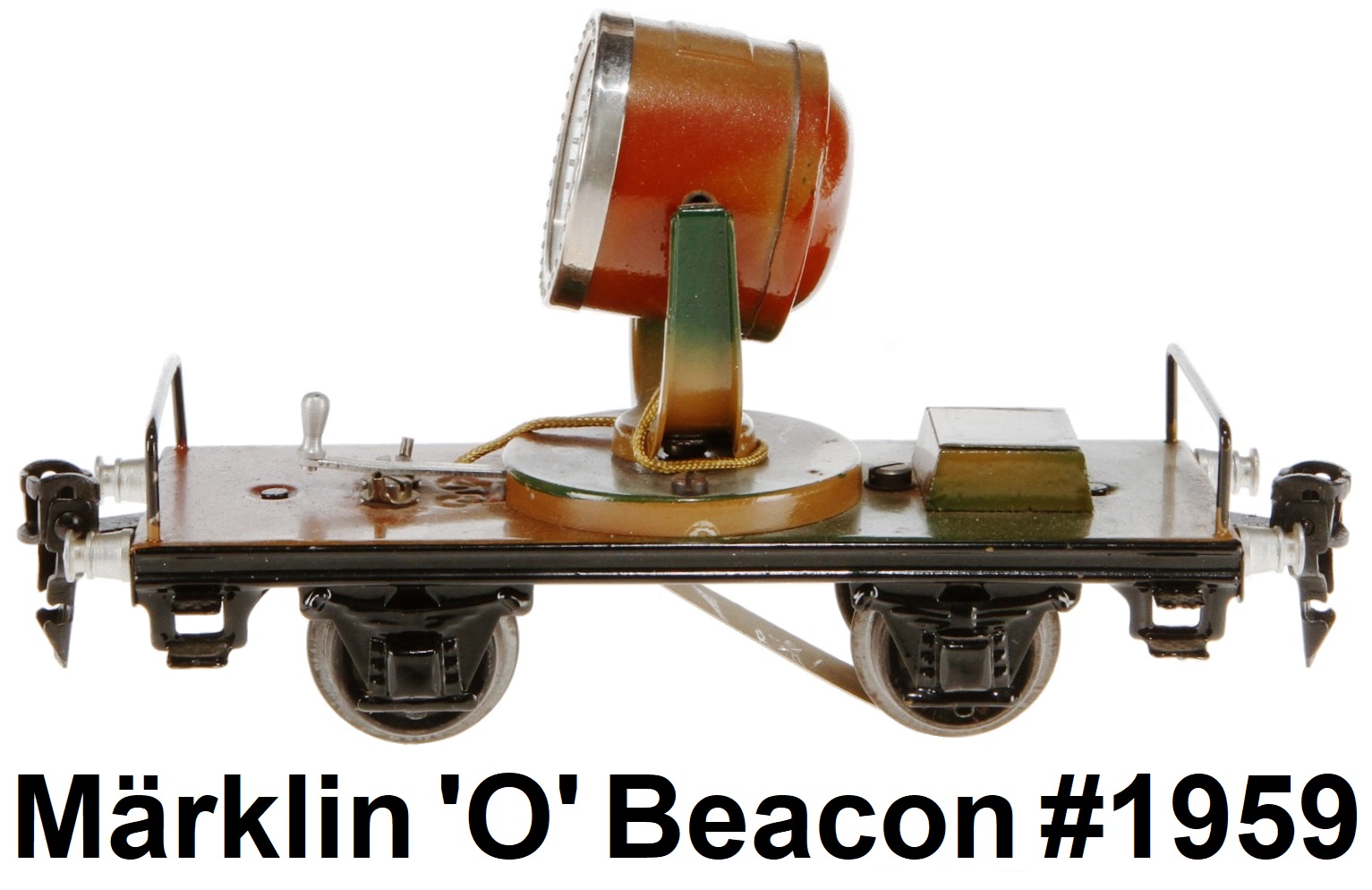 |
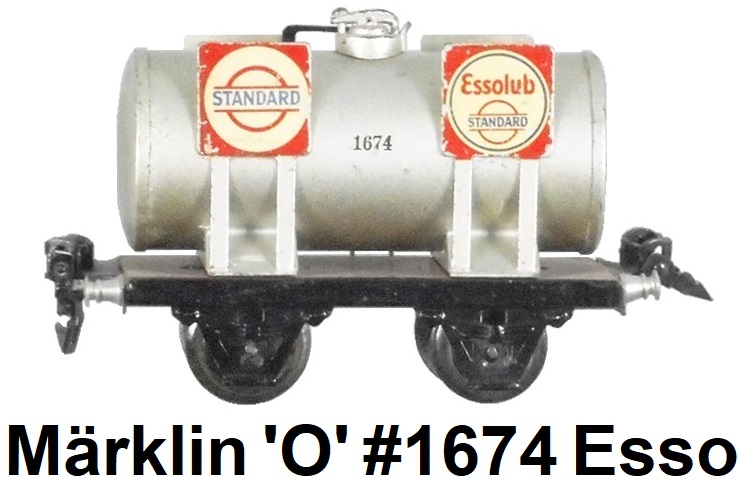 |
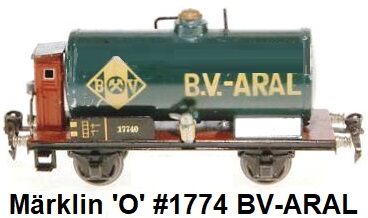 |
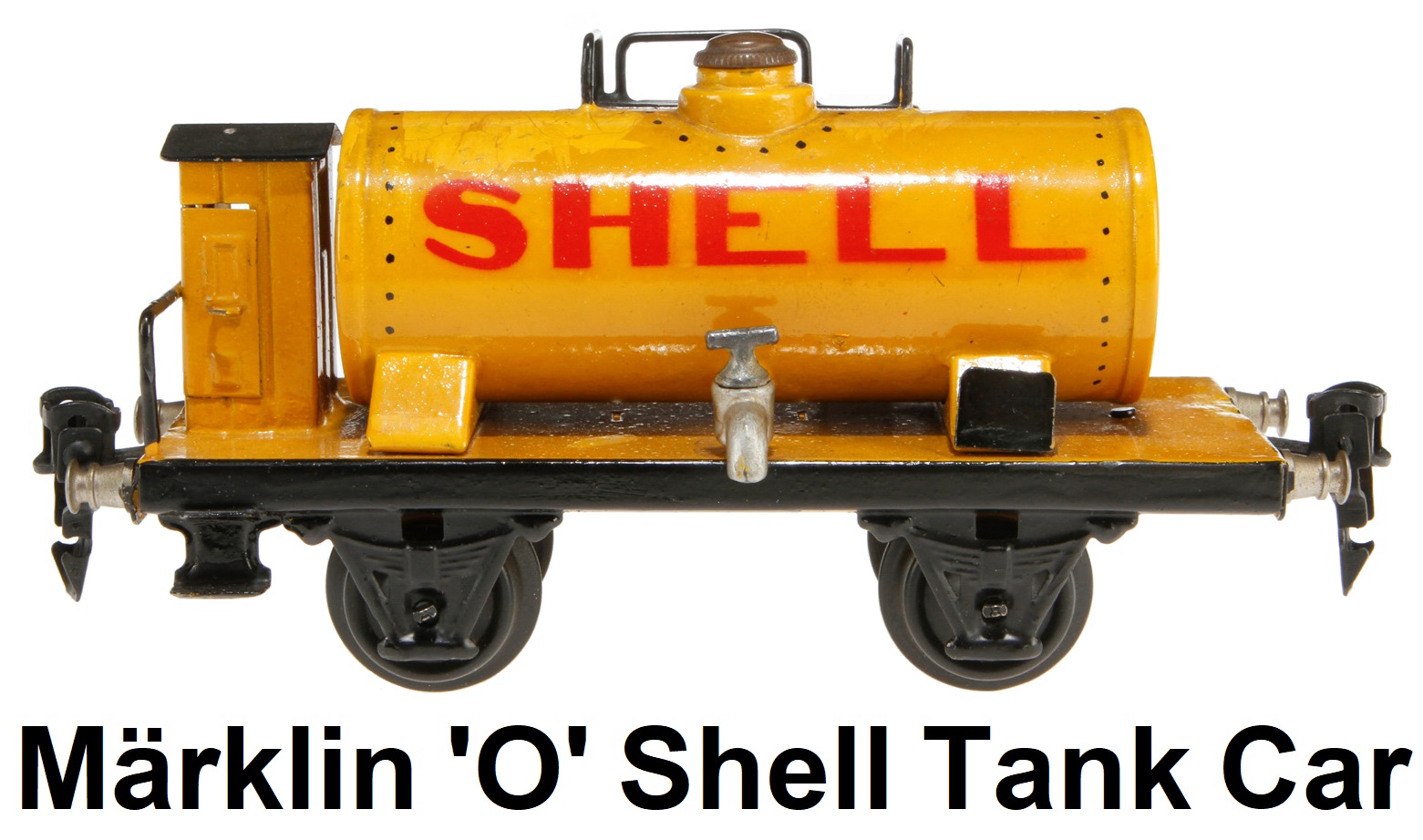 |
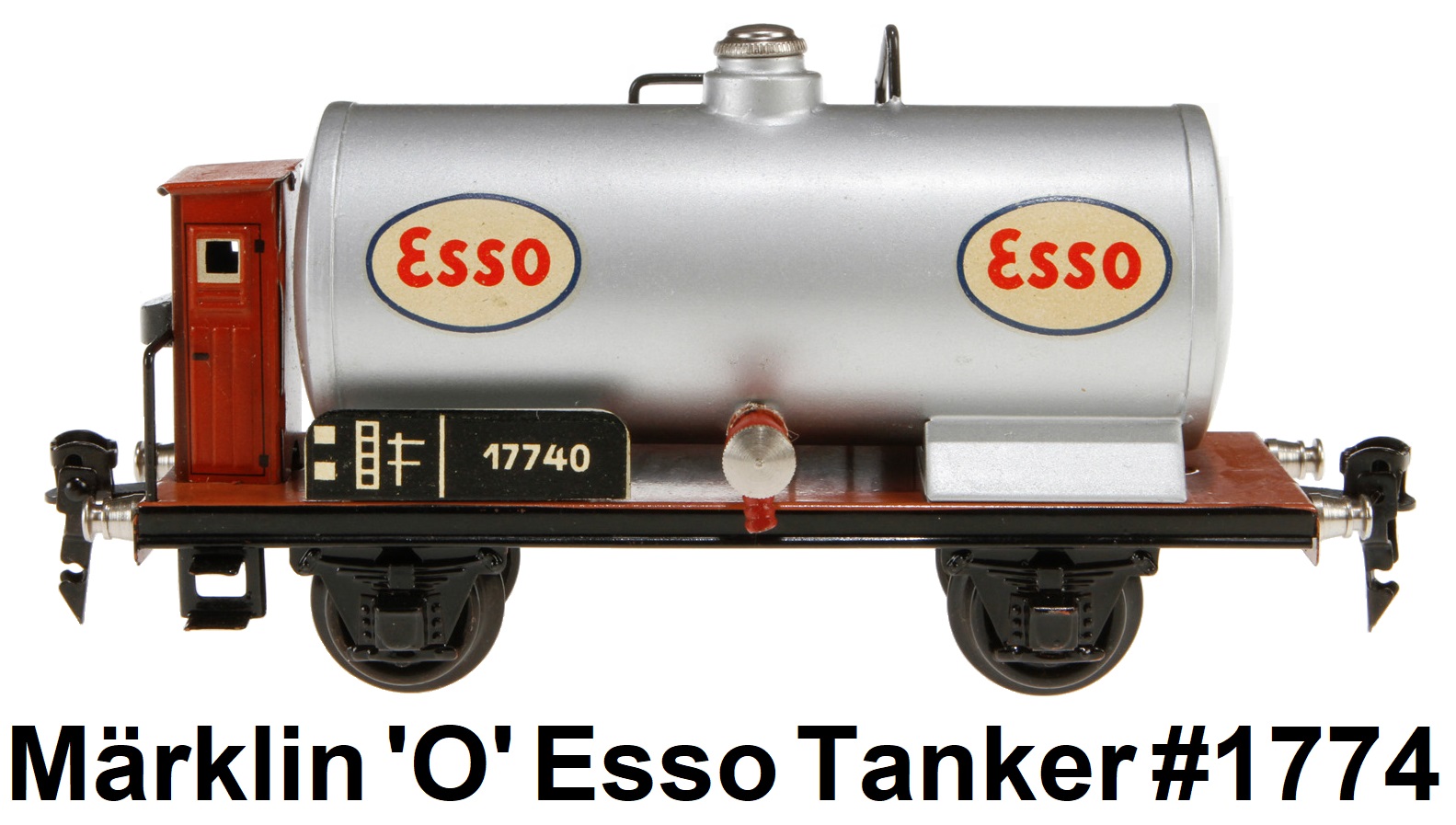 |
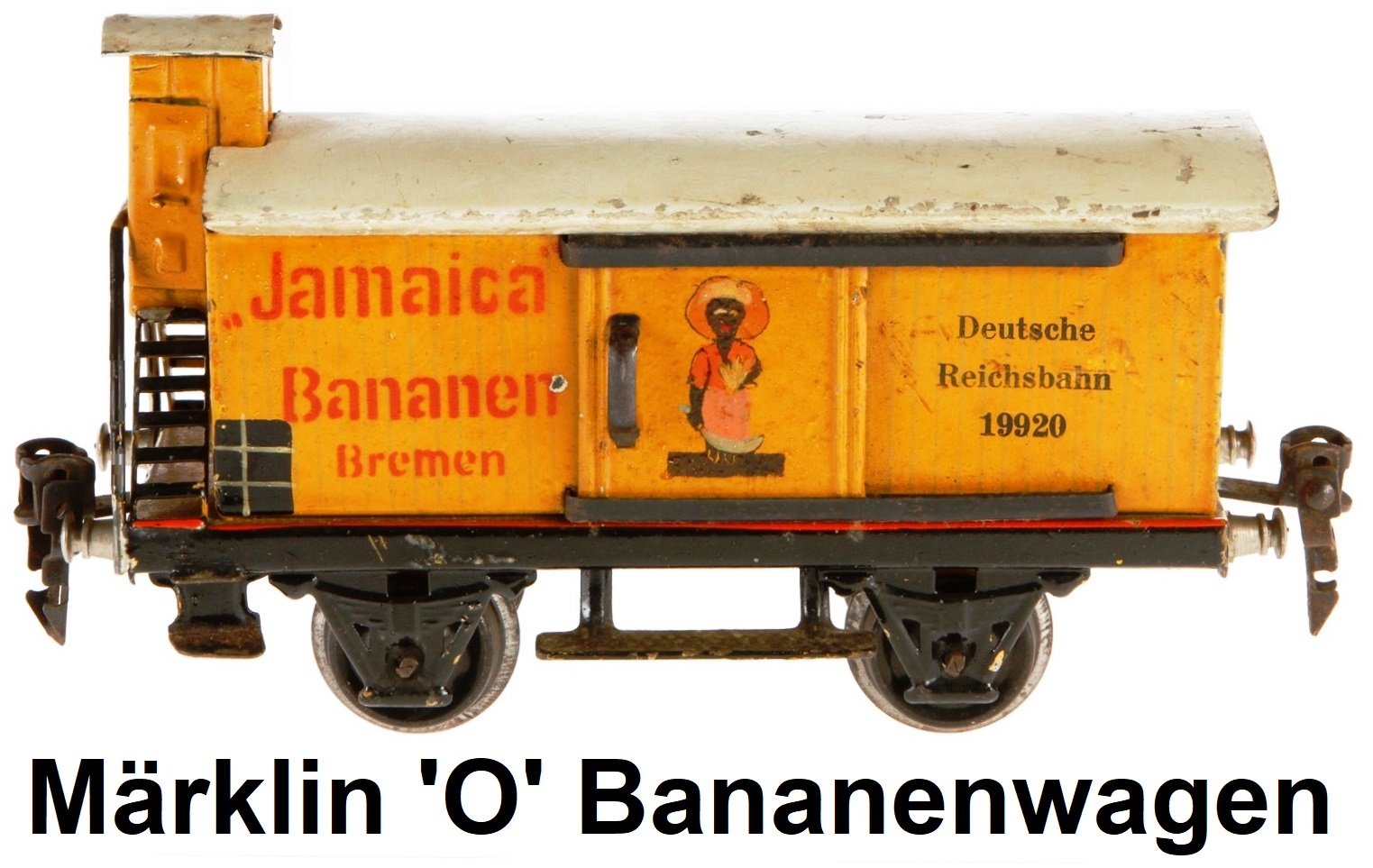 |
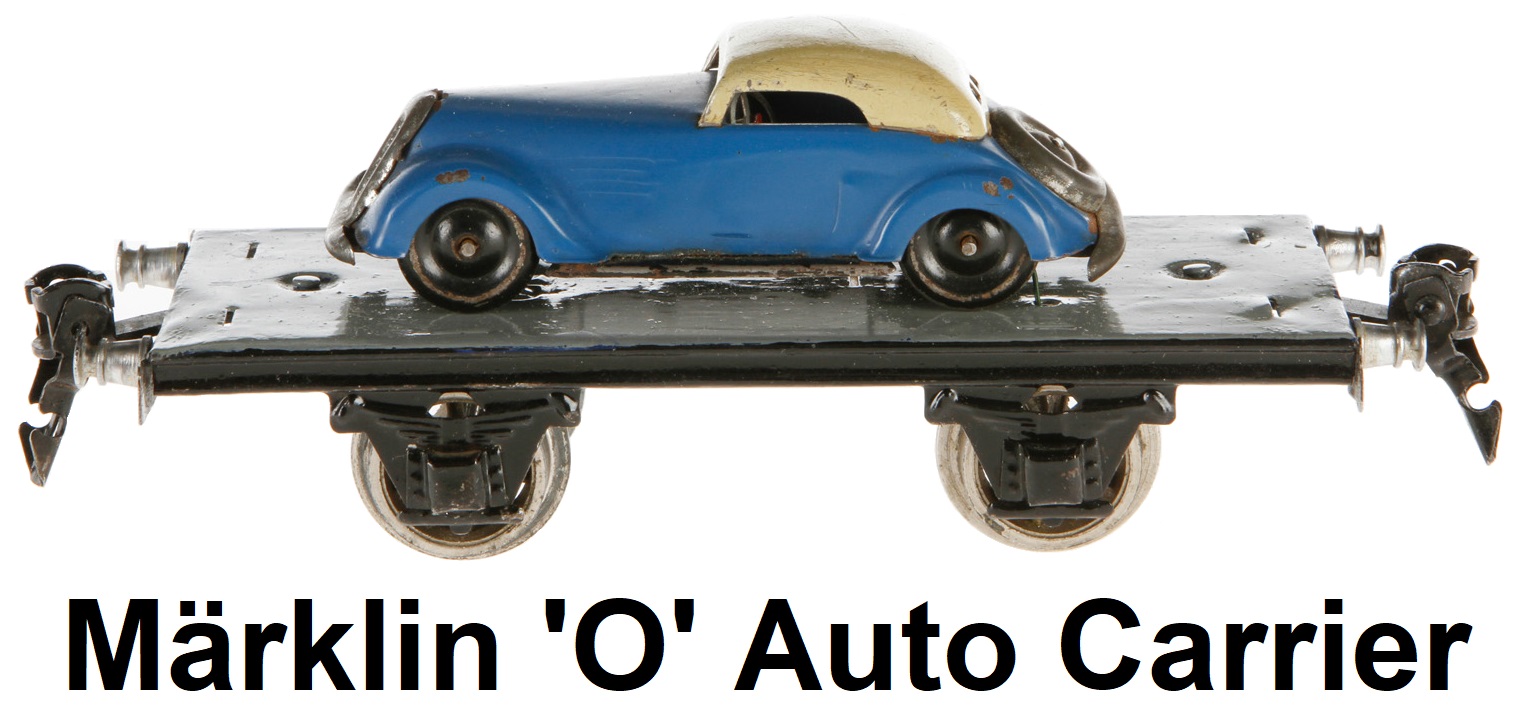 |
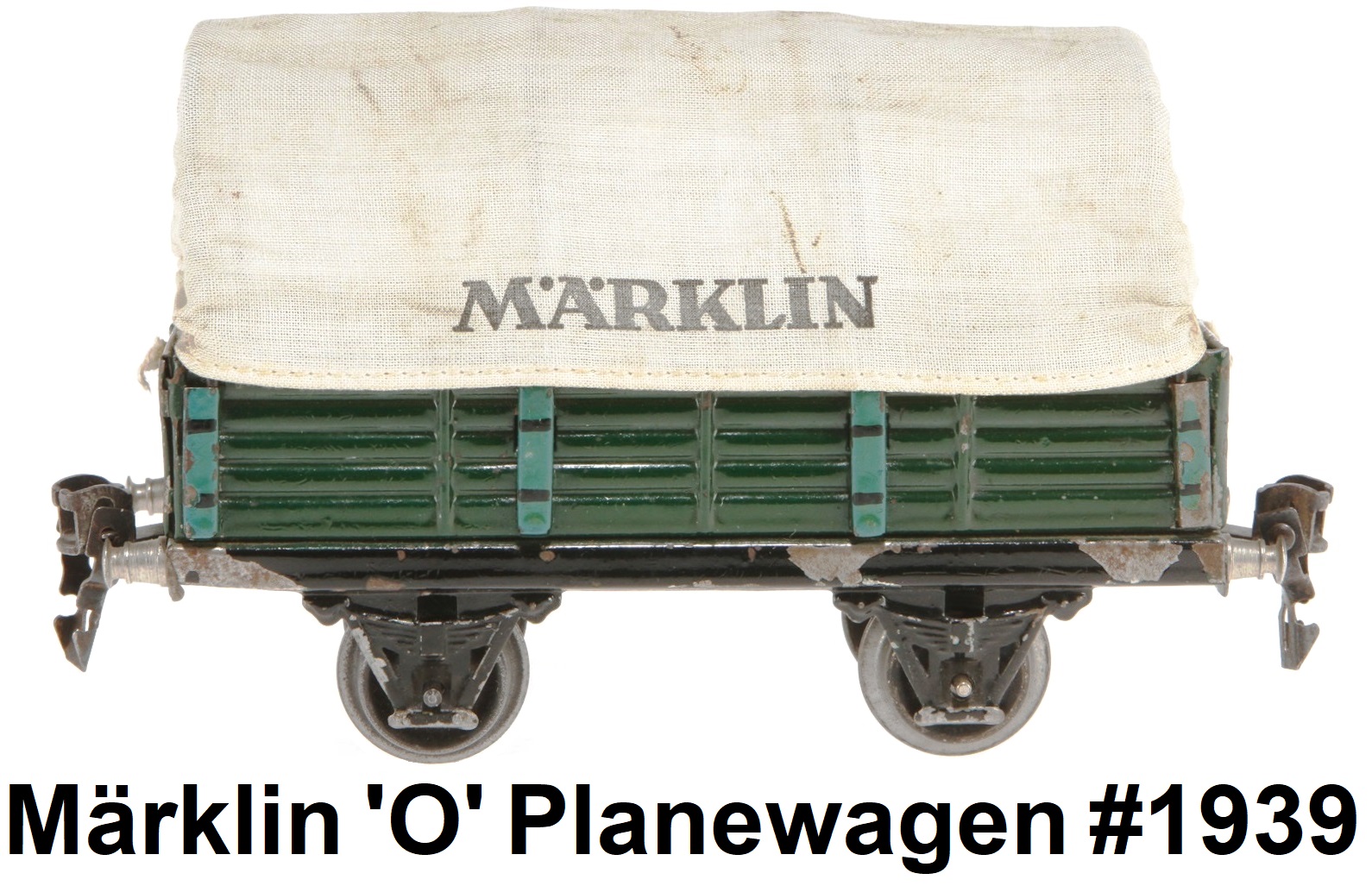 |
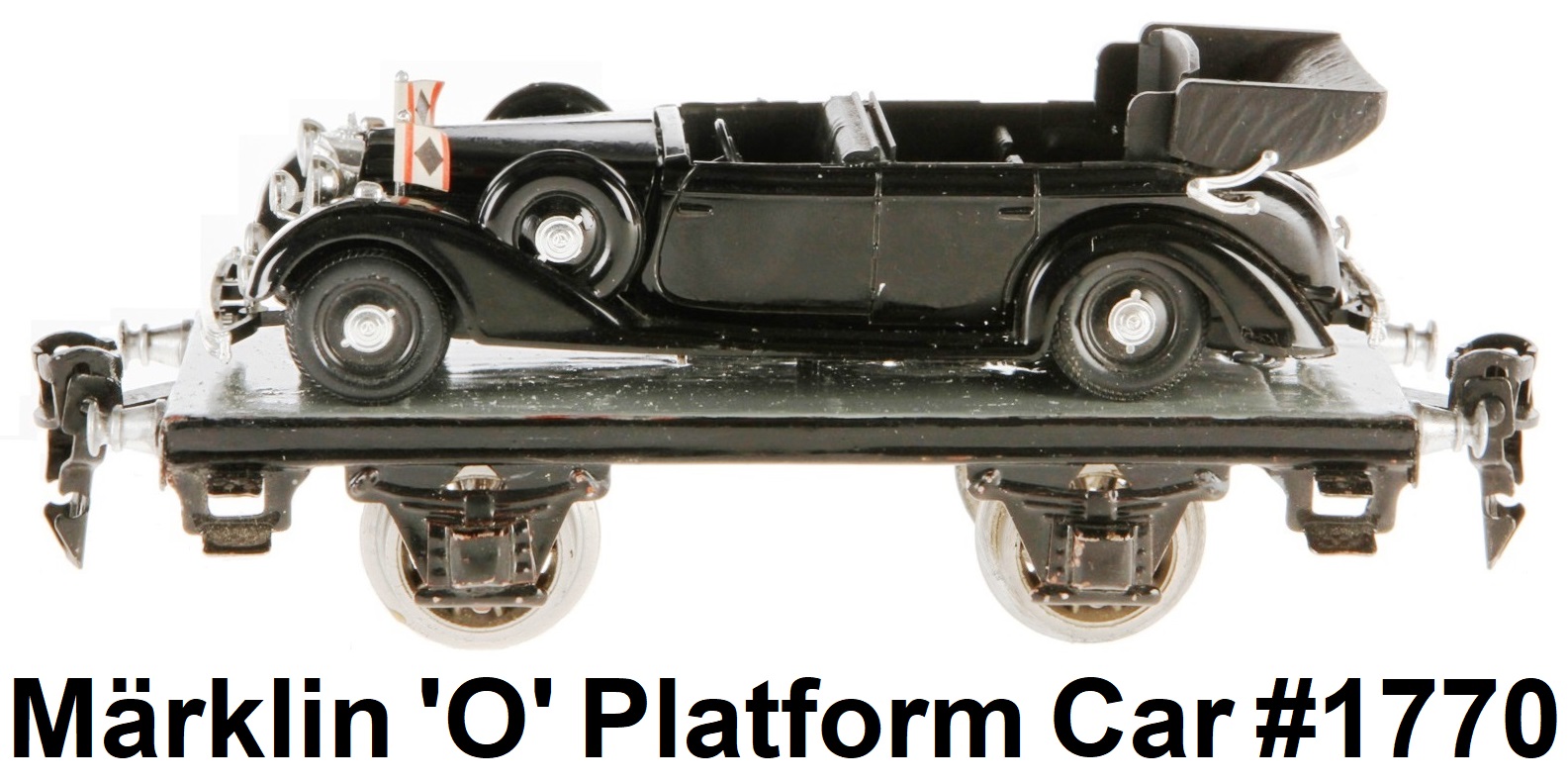 |
Märklin received German patent #593 107 in 1934 for its electronic switch track design which allowed
for remote track switching by way of a push button. The device utilized a lever mechanism over a fulcrum point so that a
small electromagnet, when energized, could switch the heavy metal tracks.
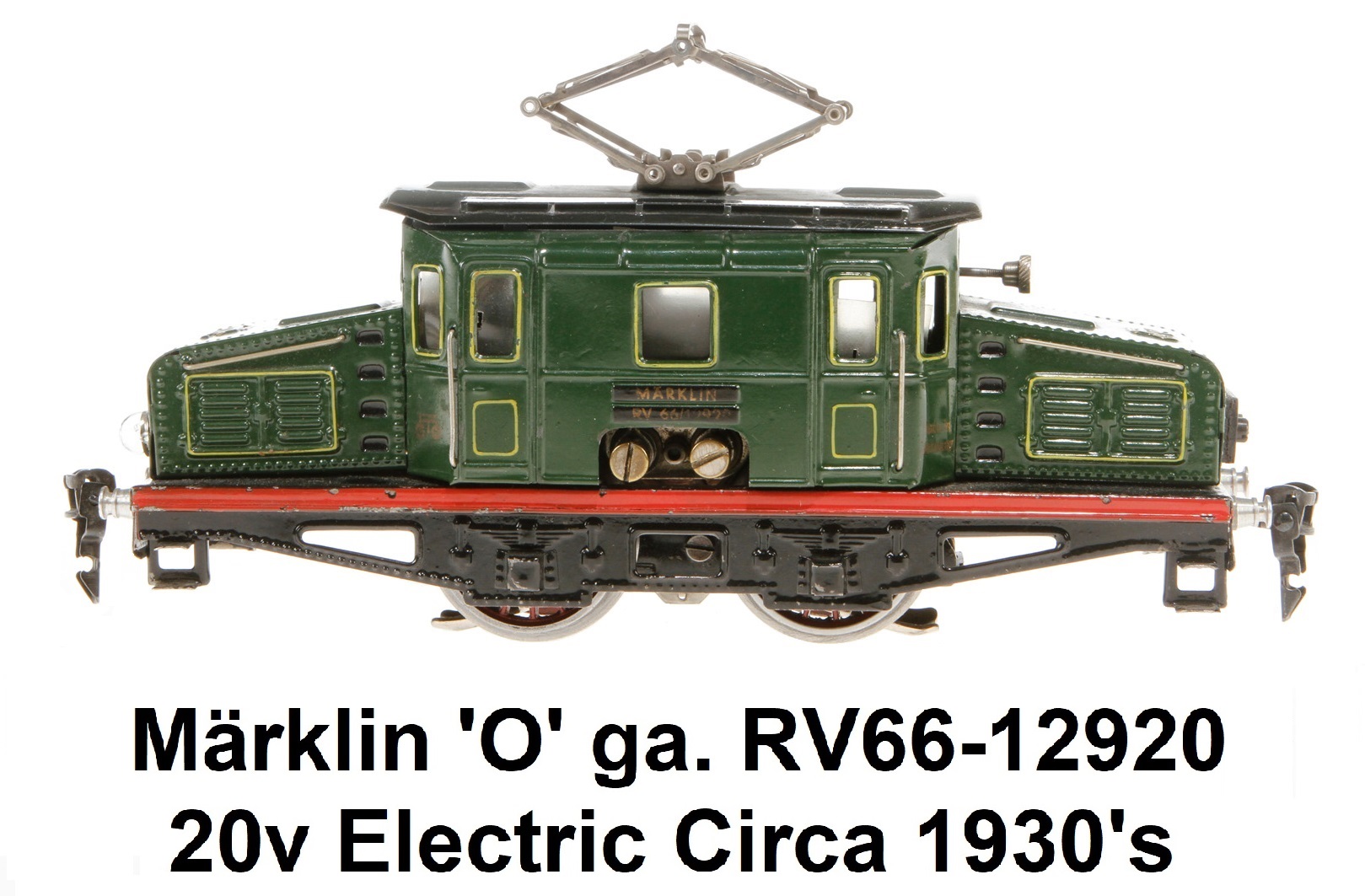
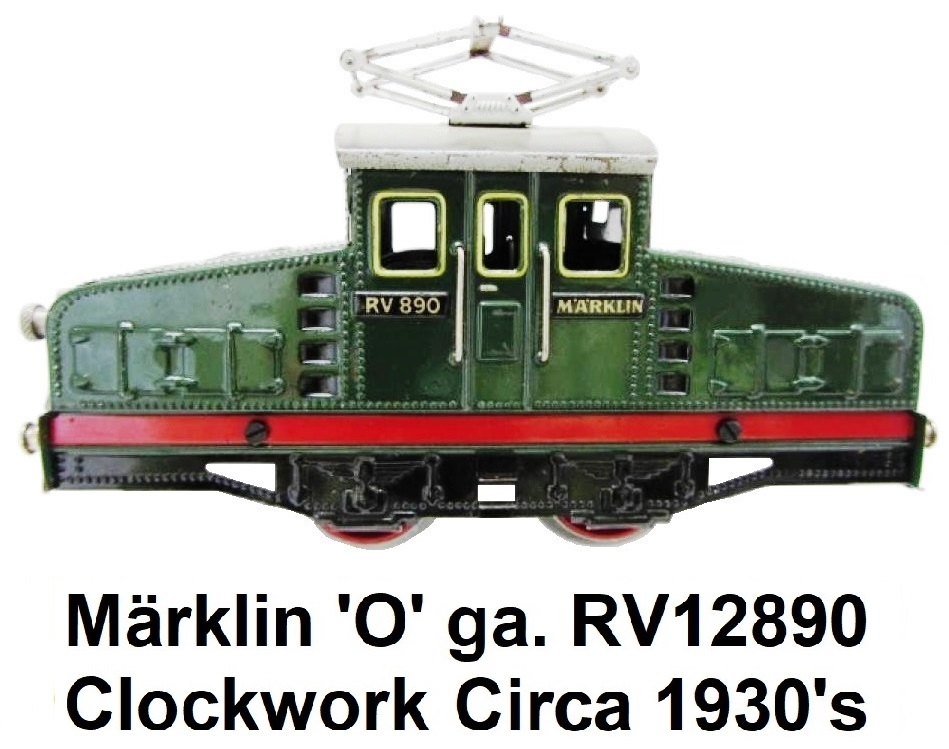

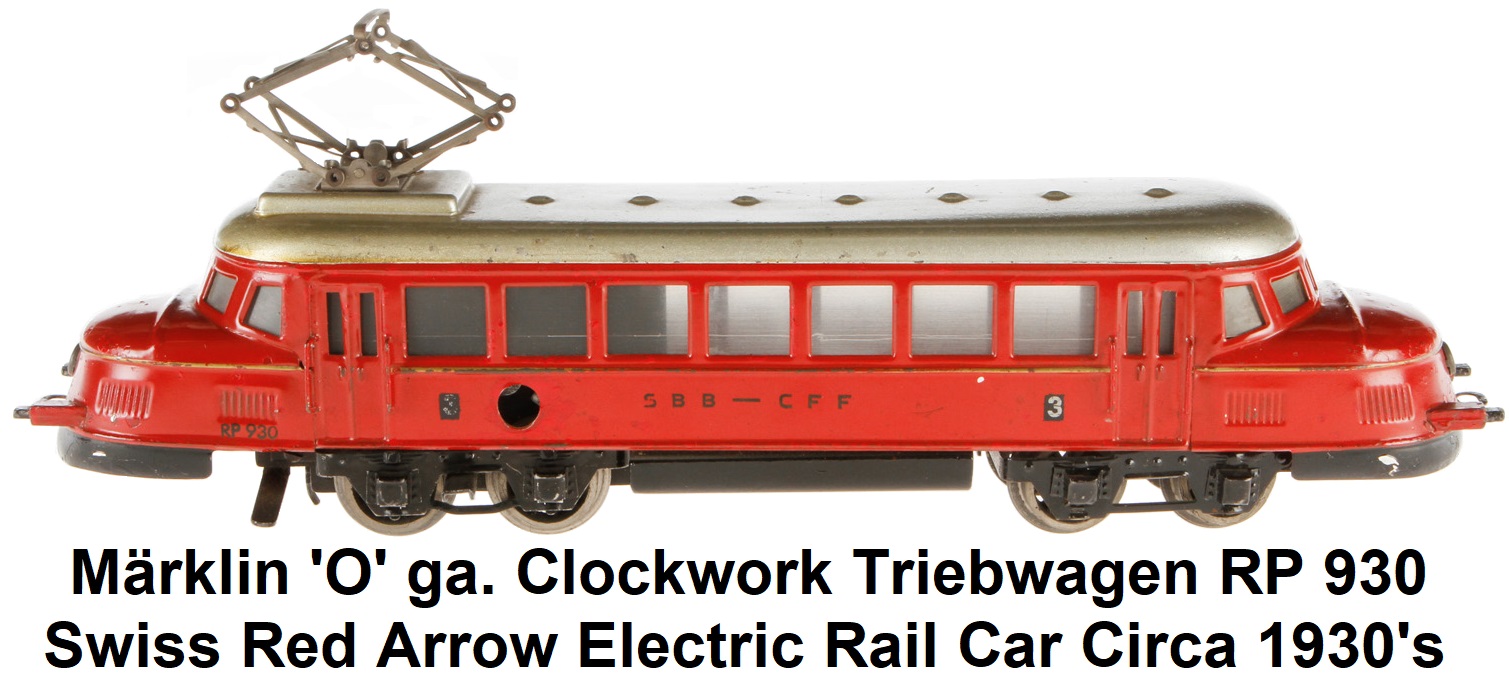
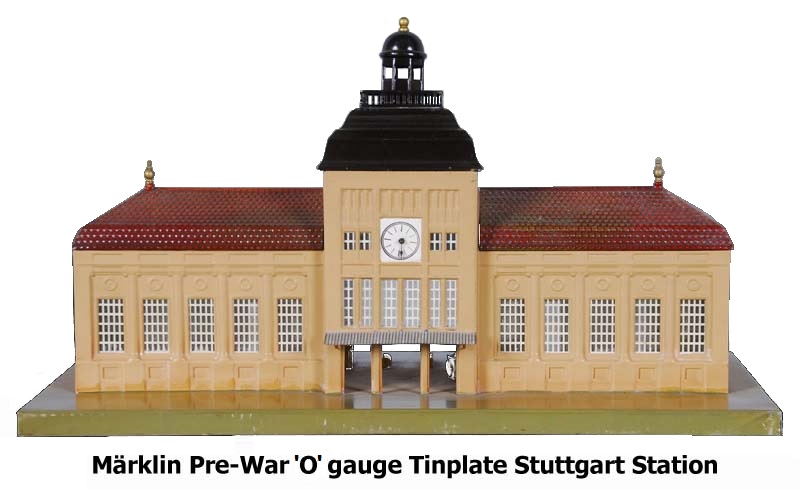 In the 1930's Märklin introduced a vast array of new 'O' gauge train models that would keep consumers
interested in collecting and buying. During this period, the Deutsche Reichsbahn German railways, in its attempts to enable
faster travel by D-Zug (Express trains), developed and introduced several prototypes of novel trains, and these attempts
provided Märklin with the basis for many of its new products. There was even an attempt in 1931 by the DR to put an airship
on the tracks called the Schienenzeppelin (rail zeppelin). This experiment failed but led to the development of the diesel
powered Fliegende Züge, or what is better known as the Flying Hamburger. These multiple unit railcars achieved a top speed of
160 km/h and brought German cities closer together. Märklin's 'O' gauge rail cars included a clockwork powered version of
the Flying Hamburger and a single TWE 930 4-wheeler. The DR also commissioned fast trains with electric and steam traction.
The 1936 Märklin catalog featured a beautiful streamlined version of the German railways 2-C-1 steam powered locomotive with
its shrouded tender finished in a reddish-brown. The Märklin SLH 70/19290 loco and tender measured 20¾ inches in
length. The prototype was built by the locomotive factory Friedrich Krupp AG in Essen and could reach a top speed of 120
km/h. Märklin even catalogued an 'O' scale electric model of the New York Central Railway's Commodore Vanderbilt
4-6-4 streamlined Hudson locomotive during this period (AK 70/12920).
In the 1930's Märklin introduced a vast array of new 'O' gauge train models that would keep consumers
interested in collecting and buying. During this period, the Deutsche Reichsbahn German railways, in its attempts to enable
faster travel by D-Zug (Express trains), developed and introduced several prototypes of novel trains, and these attempts
provided Märklin with the basis for many of its new products. There was even an attempt in 1931 by the DR to put an airship
on the tracks called the Schienenzeppelin (rail zeppelin). This experiment failed but led to the development of the diesel
powered Fliegende Züge, or what is better known as the Flying Hamburger. These multiple unit railcars achieved a top speed of
160 km/h and brought German cities closer together. Märklin's 'O' gauge rail cars included a clockwork powered version of
the Flying Hamburger and a single TWE 930 4-wheeler. The DR also commissioned fast trains with electric and steam traction.
The 1936 Märklin catalog featured a beautiful streamlined version of the German railways 2-C-1 steam powered locomotive with
its shrouded tender finished in a reddish-brown. The Märklin SLH 70/19290 loco and tender measured 20¾ inches in
length. The prototype was built by the locomotive factory Friedrich Krupp AG in Essen and could reach a top speed of 120
km/h. Märklin even catalogued an 'O' scale electric model of the New York Central Railway's Commodore Vanderbilt
4-6-4 streamlined Hudson locomotive during this period (AK 70/12920).






In the mid-1930’s Märklin pushed tinplate train construction to its zenith with their 'O' gauge #1941
series of passenger cars commonly referred to as the 40 cm coaches. Märklin produced nine different passenger, baggage, and
postal wagons in their #1941 series in Deutsche Reichsbahn (DRG) green, Compagnie Internationale des Wagons-Lits (CIWL) blue,
and MITROPA burgundy-red liveries. Five cars with Swiss SBB markings were also produced. The cars were actually
catalogued as #1941 Personenwagen (passenger coach), #1942 Speisewagen (dining car), #1943 Schlafwagen (sleeping carriage),
#1944 Gepäckwagen (baggage car) and #1945 Postzug (post office car). Features on these cars included
doors that opened and optional detailed interior fittings and lights were available. Cars that came with interiors had the
letter 'G' denoted on its box, appended to the model number. The #1944 was offered with a whistle inside. These cars
typically were sold in sets, accompanied by premium 'O' scale locomotives such as the 2-C-1 HR66 12920 loco from 1932 and
its later version the HR70 12920. In 1936 Märklin catalogued the #1941 series coaches in sets headed by the HR700 loco.
Production of these coaches was halted during World War II, but started up again after the war. Pre-war 40 cm
cars can be distinguished from the post-war versions by the yellow lettering that appears on the black frames of the cars.
The post-war versions did not have the yellow lettering. Today these Märklin wagons are highly sought after and draw steep
prices in auctions.








Märklin's numbering scheme was very complicated. The more products they produced, the more convoluted
it got. 'H' was the loco designation used by Märklin in the 1930's for all 4-6-2 steam locos, for example, the H4021 LNER
was a model of the Flying Scotsman, but the H4021 PLM was a model of a French 4-6-2. An 'R' meant the locomotive was in the
style of the Reichsbahn. An 'S' after the 'H' was for a Swiss loco. The numbers 66, 64 or 70 after that indicates the type
of reversing unit fitted in the loco. 66 signified a hand reversing unit, while 70 meant the loco was equipped with Märklin's
remote reversing system. The number 12 is a prefix meaning the loco was for use with 20-volt electric operation.
The last 3 digits change depending on the size of the loco, the smallest locos begin at 880, followed by 890, 900, 910, and
920. 920 seems to have been used for the R920 and anything which happened to be larger. Some locos first produced in the
1920's, but with production that continued into the 1930's, do not follow the same pattern with any of the numbers after the
'/'. For those locos: 402x = live-steam operation; 102x = clockwork operation, 1302x = electric operation. The x can either
be a 1 or a 0 depending on the gauge, 1 = 1 gauge, 0 = 'O' gauge.


 Märklin's HR 66-12920 hand-painted green 'O' gauge electric model of a 4-6-2 steam locomotive was first made in 1932.
The later black version of this loco became a popular long-running fixture in the Märklin catalogue for some years, and is
still a highly desirable model to collectors. Except when wartime production was halted, this loco was produced through 1954.
One of the easiest ways to date the HR is the lettering on the rear of the tender. Pre-1936 tenders just have 'Germany,' but
1936 and later tenders have 'Made in Germany.' Locos made after 1950 have the Märklin Bicycle logo instead of the lettering
Made in Germany. Post 1938 locos have unpainted buffers on the tender rear. Green locos were made until the middle of 1933,
then the color changed to matte black. The black version came with wheels that were either the typical red or black.
A dark red E920 made as a special order for Hermann Göring, a high ranking leader of the Nazi Party, commander in chief of
the Luftwaffe, president of the Reichstag, head of the Gestapo, and prime minister of Prussia, is known to exist.
Märklin's HR 66-12920 hand-painted green 'O' gauge electric model of a 4-6-2 steam locomotive was first made in 1932.
The later black version of this loco became a popular long-running fixture in the Märklin catalogue for some years, and is
still a highly desirable model to collectors. Except when wartime production was halted, this loco was produced through 1954.
One of the easiest ways to date the HR is the lettering on the rear of the tender. Pre-1936 tenders just have 'Germany,' but
1936 and later tenders have 'Made in Germany.' Locos made after 1950 have the Märklin Bicycle logo instead of the lettering
Made in Germany. Post 1938 locos have unpainted buffers on the tender rear. Green locos were made until the middle of 1933,
then the color changed to matte black. The black version came with wheels that were either the typical red or black.
A dark red E920 made as a special order for Hermann Göring, a high ranking leader of the Nazi Party, commander in chief of
the Luftwaffe, president of the Reichstag, head of the Gestapo, and prime minister of Prussia, is known to exist.

The 1932 Märklin catalog listed the Chemins de fer de l'État ME 66/12920 French Express 4-8-2 'O' gauge
engine and tender in gray or black. This has been called the most beautiful locomotive ever made by Märklin. The 2D1 (4-8-2)
loco was hand painted and lined. It had an overall length of 23½ inches. The 20-volt electric motor powers only
the 3 front large drivers via a gearing system. The Mountain Etat was one of the four large locomotives
singled out in the 1936 catalogue as scale models. It remained catalogued through 1953. Another loco from that series
of four was the apple-green Cock O’ The North LNER 2001 (Märklin L70-12920LNER). For buyers who liked the loco
but didn't want it in obviously British livery (for instance, Märklin customers who had German-themed layouts), Märklin
also supplied it in a more anonymous dull black as L 70/12920. This 'O' gauge loco was patterned after the P2 Mikado 2-8-2
prototype heavy-duty express LNER loco that ran Scottish passenger services through the Highlands between Edinburgh and
Aberdeen from 1934. The large loco has a distinctive winged head smoke-deflector configuration.
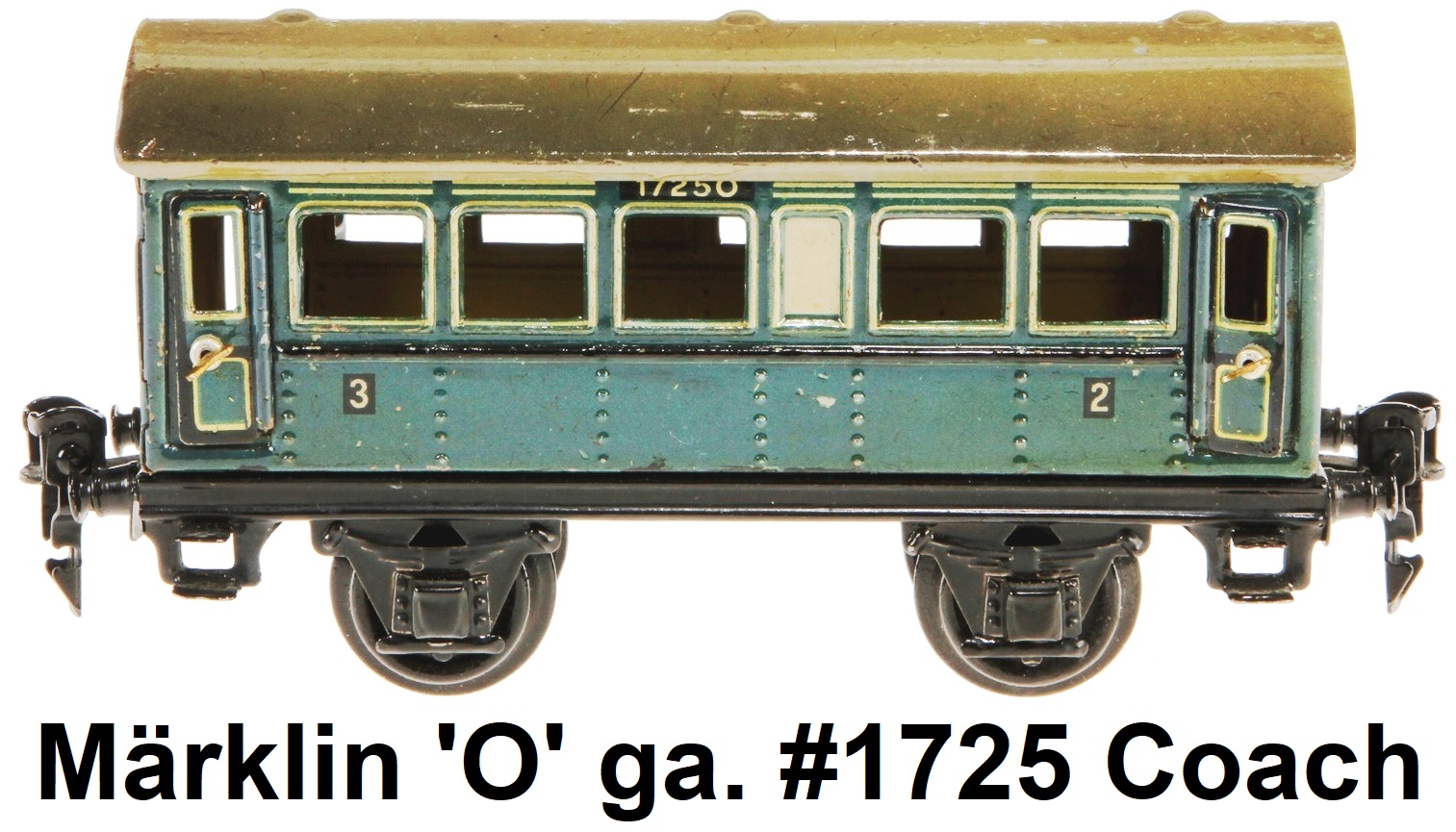
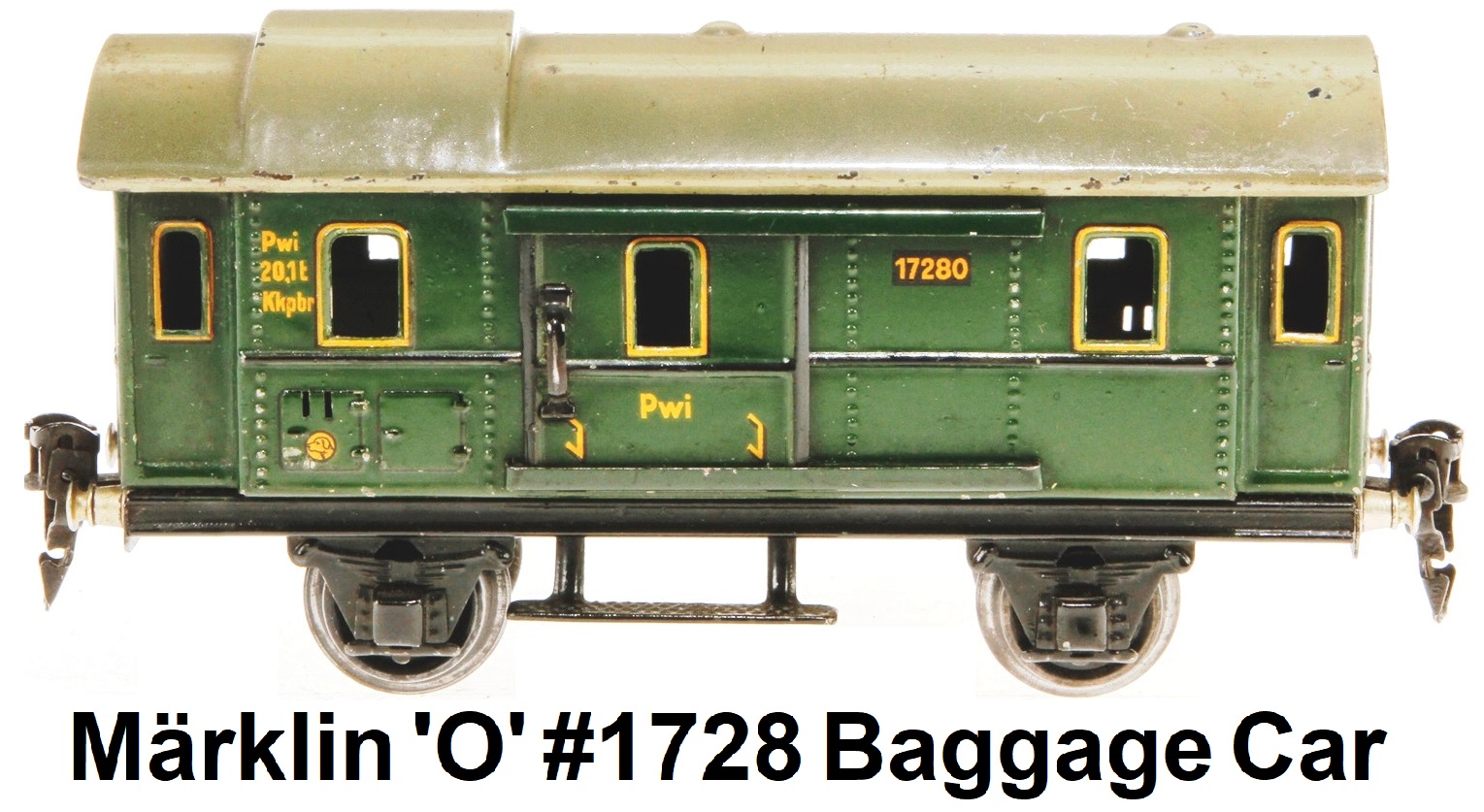
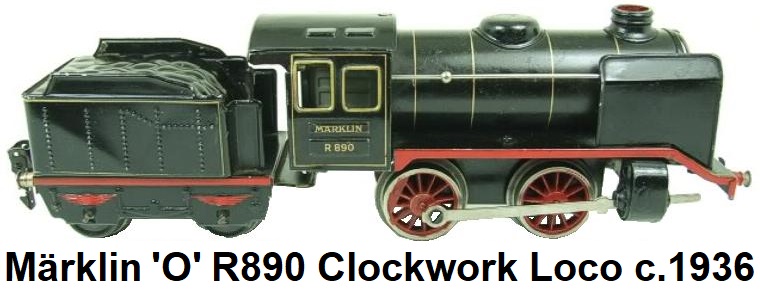

In honor of the 100 year anniversary of Germany's first railway that ran from Nuremberg to Furth,
in 1935 Märklin produced an 'O' gauge electric model of George Stephenson's Der Adler train set. Der Adler ran Germany's
first passenger train service, starting in 1835, and therefore holds a special place for German railway history enthusiasts.
AR 12930/35/3 was the catalog number assigned by Märklin to the 'Centenary Train'. The set consisted of the AR 12930
20-volt electric open steam locomotive and tender with figures, 1834/0 open coach with figures, 1835/0 closed coach with
figures and opening doors, and a 1835B/0 brake version of the closed coach with figures and a brakeman's seat. The closed
coaches were styled like old horse-carriages, complete with a raised seat on top where the driver of a horse drawn cab would
normally sit. The 2-2-2 locomotive and its tender were painted green and brown, while the coaches were yellow. The Adler
(Eagle) prototype locomotive was designed by George Stephenson, and built in Sheffield, England. The locomotive was then
shipped to Germany to become the country's first commercial steam locomotive, running Germany's first commercial train
service.

Märklin first experimented with a smaller gauge than 'O' in the late 1920's, which they called 'OO' or
'Liliput-Bahn', scale 1:70, (roughly equivalent to S gauge) with one mechanical wind-up steam outline locomotive, later
augmented with an electric 4V steam outline version. This experiment never sold in significant numbers however. Later in the
1930's Märklin built a very detailed prototype steam outline locomotive in this scale but it was never produced.

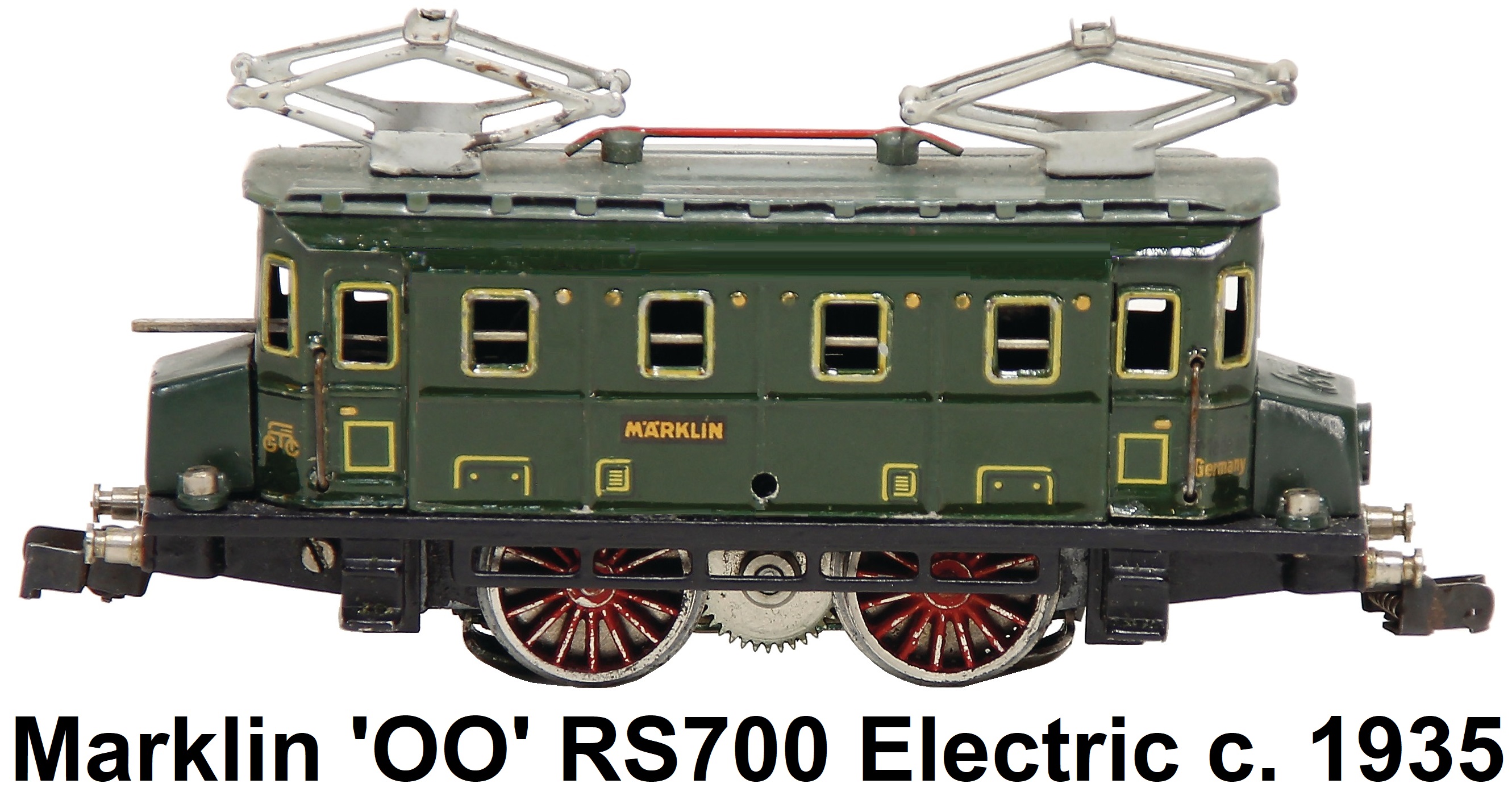
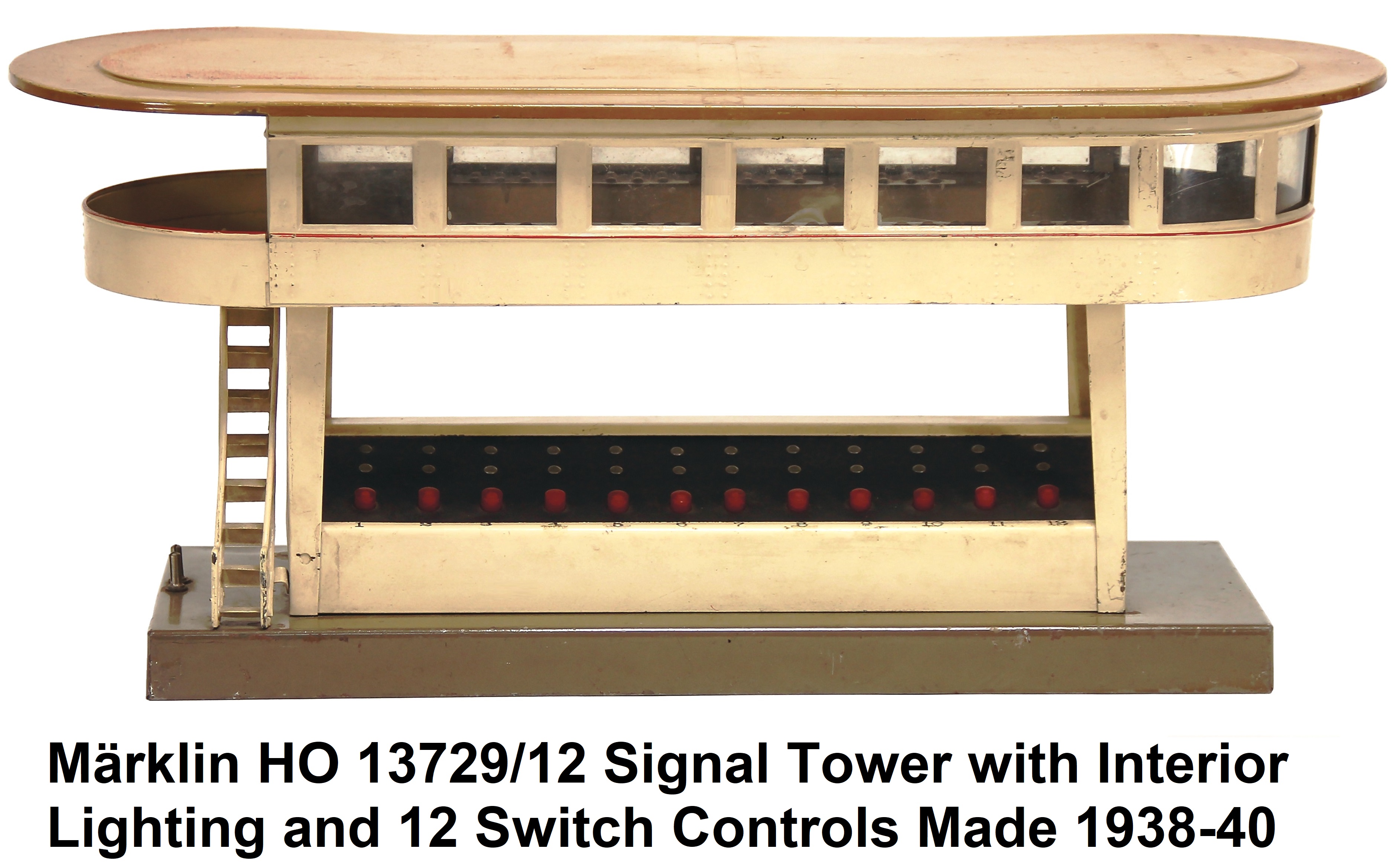 It was not until 1935 that Märklin came out with their first mass produced 'OO' scale, later in
approximately 1947, the scale was dubbed HO (or half-O). This smaller scale would require fewer quantities of raw materials
to produce. One of Märklin's biggest competitors, Trix, had begun to produce
'OO' gauge model trains around this time, which caused Märklin to expedite their efforts. In order to meet this competition,
and to introduce their product offerings, Märklin built and showed an 'OO' gauge display layout at the Leipzig spring toy
fair in 1935. Märklin presented their own range of freight wagons and electric locomotives in 'OO' gauge. The locomotives
included the steam outline 0-4-0 R 700 and an electric outline RS 700 also equipped with an 0-4-0 wheel configuration.
The next 'OO' gauge releases from Märklin included the SLR 700 in 1936, the HR 700 and HS 700 locomotives
in 1937, the CCS 700 in 1938, and the 800 series with the a new automatic reversing system in 1938. Märklin also developed
its own three-rail AC powered track configuration, which they believed was more reliable and electrically less complicated
than 2-rail DC systems.
It was not until 1935 that Märklin came out with their first mass produced 'OO' scale, later in
approximately 1947, the scale was dubbed HO (or half-O). This smaller scale would require fewer quantities of raw materials
to produce. One of Märklin's biggest competitors, Trix, had begun to produce
'OO' gauge model trains around this time, which caused Märklin to expedite their efforts. In order to meet this competition,
and to introduce their product offerings, Märklin built and showed an 'OO' gauge display layout at the Leipzig spring toy
fair in 1935. Märklin presented their own range of freight wagons and electric locomotives in 'OO' gauge. The locomotives
included the steam outline 0-4-0 R 700 and an electric outline RS 700 also equipped with an 0-4-0 wheel configuration.
The next 'OO' gauge releases from Märklin included the SLR 700 in 1936, the HR 700 and HS 700 locomotives
in 1937, the CCS 700 in 1938, and the 800 series with the a new automatic reversing system in 1938. Märklin also developed
its own three-rail AC powered track configuration, which they believed was more reliable and electrically less complicated
than 2-rail DC systems.

The 'Märklin system' for HO is Märklin's technique of using a third rail concealed in the roadbed with only
small studs protruding through the ties of the track. The two outer rails are connected electrically.
This provides the simplified wiring enjoyed by larger gauges — such as reverse loops — without
seriously detracting from the realism of the track because only two of the rails are visible. Because the
two outer rails are not electrically isolated from each other, however, some do not consider Märklin's system
to be a true three-rail system.
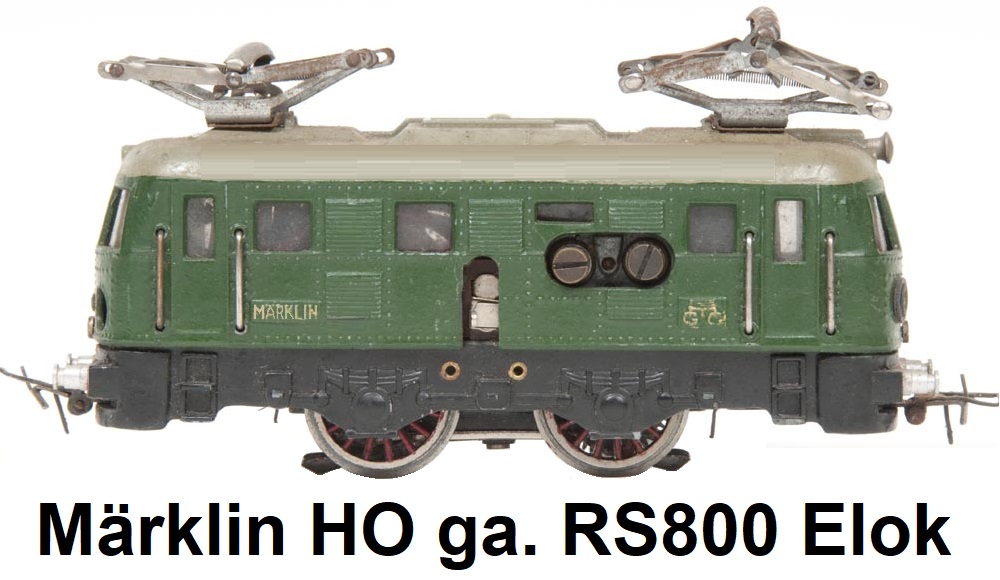 In 1939 Märklin began using new technical procedures such as zinc die casting, first in locomotives,
coach trucks, wheels and accessories. Between 1948 and 1955 freight cars were also produced completely
under this method. Political relations around the World War II era stunted the export production for Märklin
which meant many planned models were never produced and the war brought a new enforced break in toy production.
In 1939 Märklin began using new technical procedures such as zinc die casting, first in locomotives,
coach trucks, wheels and accessories. Between 1948 and 1955 freight cars were also produced completely
under this method. Political relations around the World War II era stunted the export production for Märklin
which meant many planned models were never produced and the war brought a new enforced break in toy production.
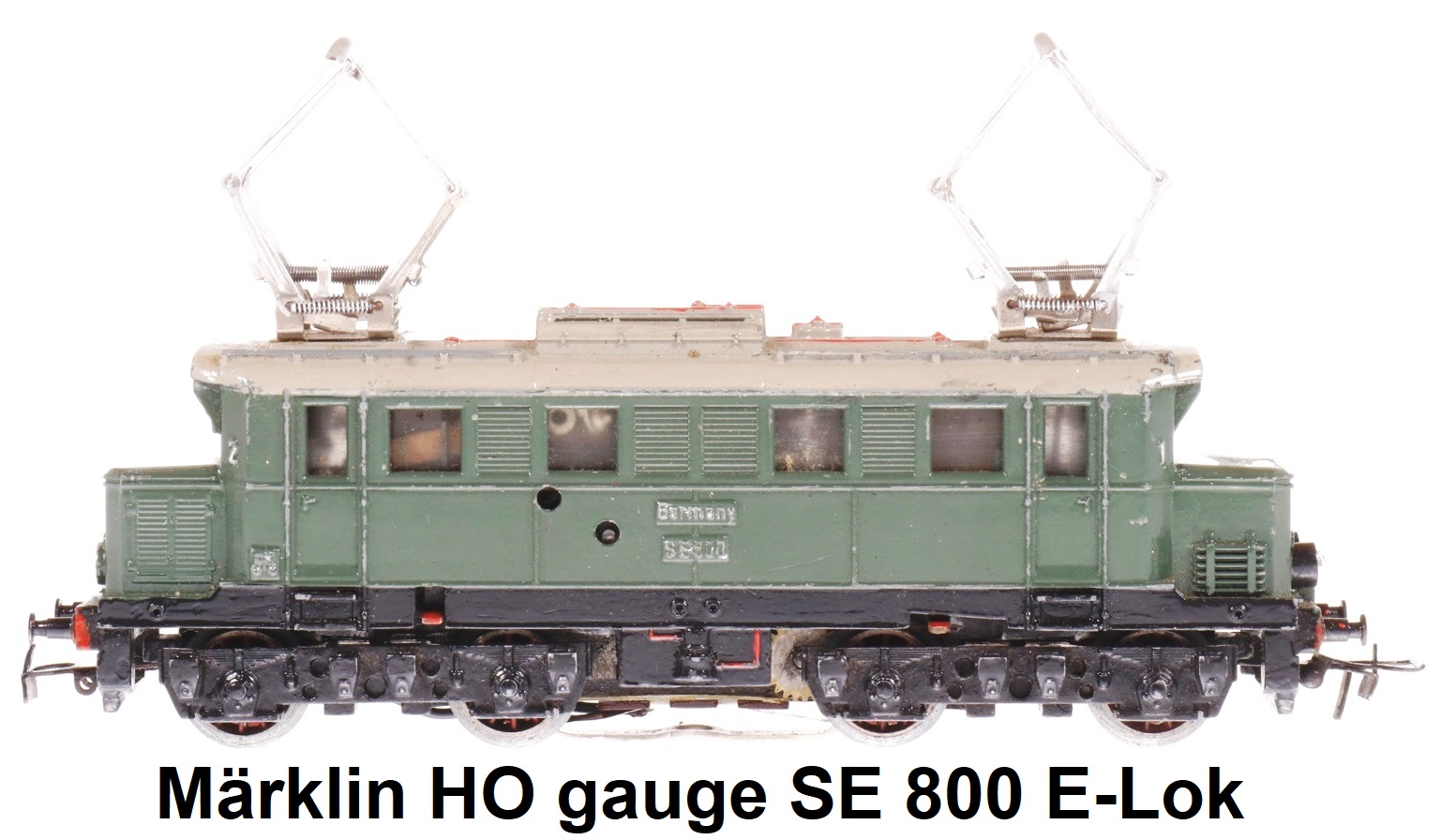 Märklin did not make substantial changes to their 'OO' line after 1938. The Märklin
factory managed to avoid being seriously damaged during World War II. They had stopped producing toys
in 1943 in order to manufacture items to meet war needs. Munitions produced included pressure sensitive detonators used in
land mines and small motors for torpedoes. Other things Märklin manufactured for the Wehrmacht during the war were MG34 and
42 machine-gun non-disintegrating stamped steel bullet belts and trigger guards for Mauser G41 semi-automatic rifles.
Märklin did not make substantial changes to their 'OO' line after 1938. The Märklin
factory managed to avoid being seriously damaged during World War II. They had stopped producing toys
in 1943 in order to manufacture items to meet war needs. Munitions produced included pressure sensitive detonators used in
land mines and small motors for torpedoes. Other things Märklin manufactured for the Wehrmacht during the war were MG34 and
42 machine-gun non-disintegrating stamped steel bullet belts and trigger guards for Mauser G41 semi-automatic rifles.


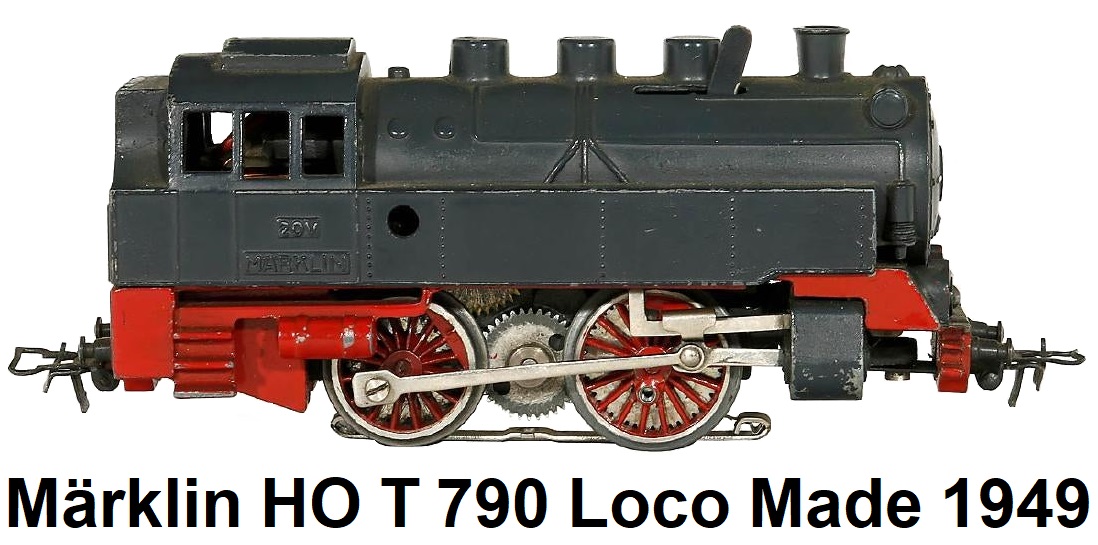 Richard Safft died in 1945 and Eugen Märklin in 1947. Herbert Safft took his father's place as managing
director. At the end of World War II the company still employed over 700 workers. Model train
manufacturing began again, initially of only exported items. In 1947, Märklin issued a catalog exclusively for dealers,
since paper was still in short supply due to the war years. The first customer catalog issued after the war in 1947 featured a
series of 'OO' scale wagons and locomotives produced specifically for the U.S. market including the ST 800 and DL 800
streamlined railcars. The ST 800 locomotive was manufactured from 1948 to 1954. It is based on an American style
diesel outline engine somewhat similar to the American Alco DL 103 diesel locomotive, but it is an electric railcar fitted
with pantographs. The DL 800 and the ST 800 locomotives appear to be similar, however, the DL 800 was a 2 unit
double headed articulated railcar, while the ST 800 was a 3 unit articulated railcar that featured a middle coach and trail
car.
Richard Safft died in 1945 and Eugen Märklin in 1947. Herbert Safft took his father's place as managing
director. At the end of World War II the company still employed over 700 workers. Model train
manufacturing began again, initially of only exported items. In 1947, Märklin issued a catalog exclusively for dealers,
since paper was still in short supply due to the war years. The first customer catalog issued after the war in 1947 featured a
series of 'OO' scale wagons and locomotives produced specifically for the U.S. market including the ST 800 and DL 800
streamlined railcars. The ST 800 locomotive was manufactured from 1948 to 1954. It is based on an American style
diesel outline engine somewhat similar to the American Alco DL 103 diesel locomotive, but it is an electric railcar fitted
with pantographs. The DL 800 and the ST 800 locomotives appear to be similar, however, the DL 800 was a 2 unit
double headed articulated railcar, while the ST 800 was a 3 unit articulated railcar that featured a middle coach and trail
car.


From 1947 through 1955 Märklin manufactured their 300 series of die-cast HO freight cars based on pre-war
prototypes. These were the company's first attempts at making scale model HO gauge cars. In the years before World War II,
Märklin and its competitors in HO had produced only stubby little freight cars in lithographed sheet steel with little detail.
These first Märklin HO freight cars were actually tinplate replicas of Märklin's simplest 'O' gauge cars and were offered
for sale through 1952. By contrast, the new die-cast cars had incredible surface detail, with every board and rivet cleanly
modeled and large numbers of attached detail parts. A total of 36 different cataloged cars appeared in the 300 series, based
on ten different body castings. However, because these 36 basic cars had a wide variety of variations in color and
construction details, the total number of collectible varieties is actually about 160. An abundance of these trains show up
in America, as large quantities were imported and sold in American toy stores and many returning American servicemen
stationed in Germany after World War II brought them home or shipped them to the United States.
When the pre-war tinplate lithographed HO gauge freight cars were phased out in 1952, they were replaced
with the 4500 series cars which were inexpensive, plastic-bodied cars on sheet-steel chassis. In 1956 the 300 series die-cast
HO freight cars were also phased out and replaced by the 4600 series, which initially consisted of heavy plastic bodies on
die-cast frames, but were eventually moved to all plastic frames. Of the four series, the 1947 all die-cast series had by far
the shortest life.

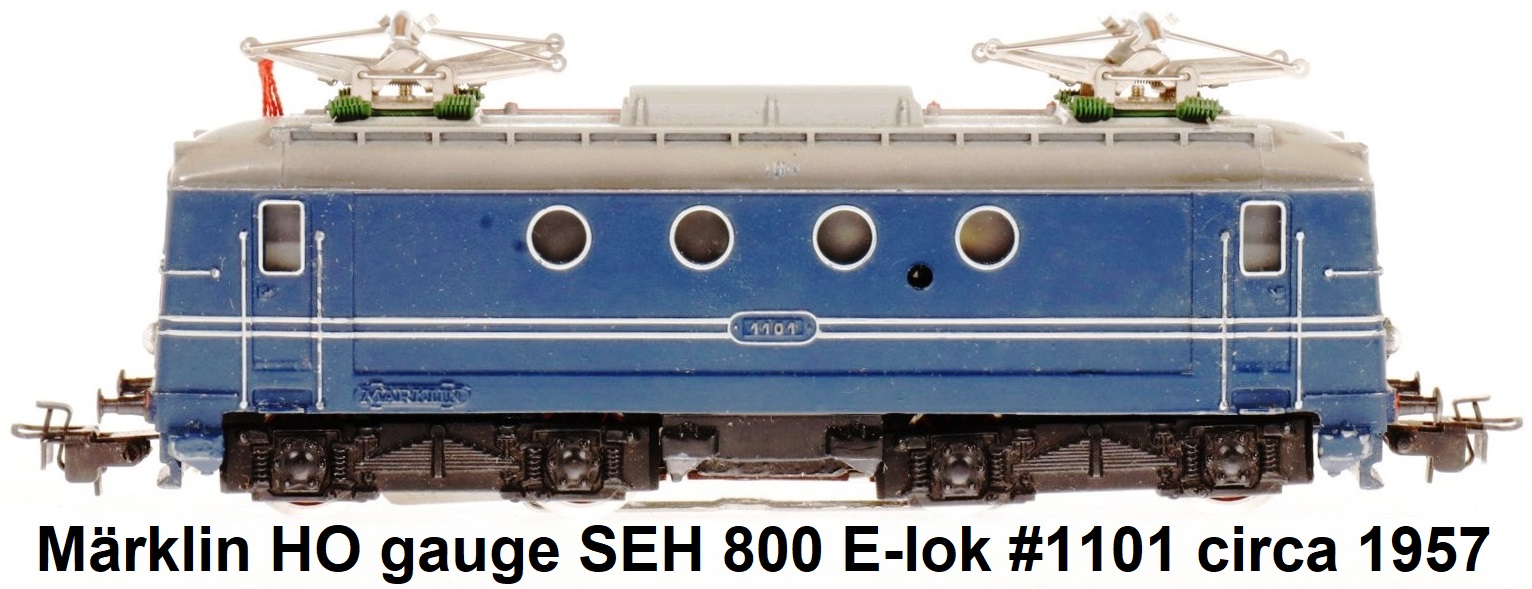 While the 'OO'/HO range was extended as fast as possible, 'O' gauge models saw greatly limited production.
In July of 1948 and in March of 1949 Märklin issued only supplements to the catalog from 1947. The first consumer catalog did
not come out after the war years until 1949 in a single-color version. A complete catalog in color did not come out until
1953 using a rotogravure printing process. There were no new releases of 'O' gauge models, and the existing 'O' gauge
products were relegated to the back of the catalogs. In 1950 manufacture of the 'wide-tracks' in lacquered tinplate ceased.
Only clockwork driven 'O' gauge was now being offered. The last catalogue showing any models in 'O' gauge
was the 1954 version, and this signaled the end for Märklin tinplate trains in this gauge. 1956 was the last year
that Märklin produced any trains in 'O' gauge. The tinplate era was at an end.
While the 'OO'/HO range was extended as fast as possible, 'O' gauge models saw greatly limited production.
In July of 1948 and in March of 1949 Märklin issued only supplements to the catalog from 1947. The first consumer catalog did
not come out after the war years until 1949 in a single-color version. A complete catalog in color did not come out until
1953 using a rotogravure printing process. There were no new releases of 'O' gauge models, and the existing 'O' gauge
products were relegated to the back of the catalogs. In 1950 manufacture of the 'wide-tracks' in lacquered tinplate ceased.
Only clockwork driven 'O' gauge was now being offered. The last catalogue showing any models in 'O' gauge
was the 1954 version, and this signaled the end for Märklin tinplate trains in this gauge. 1956 was the last year
that Märklin produced any trains in 'O' gauge. The tinplate era was at an end.
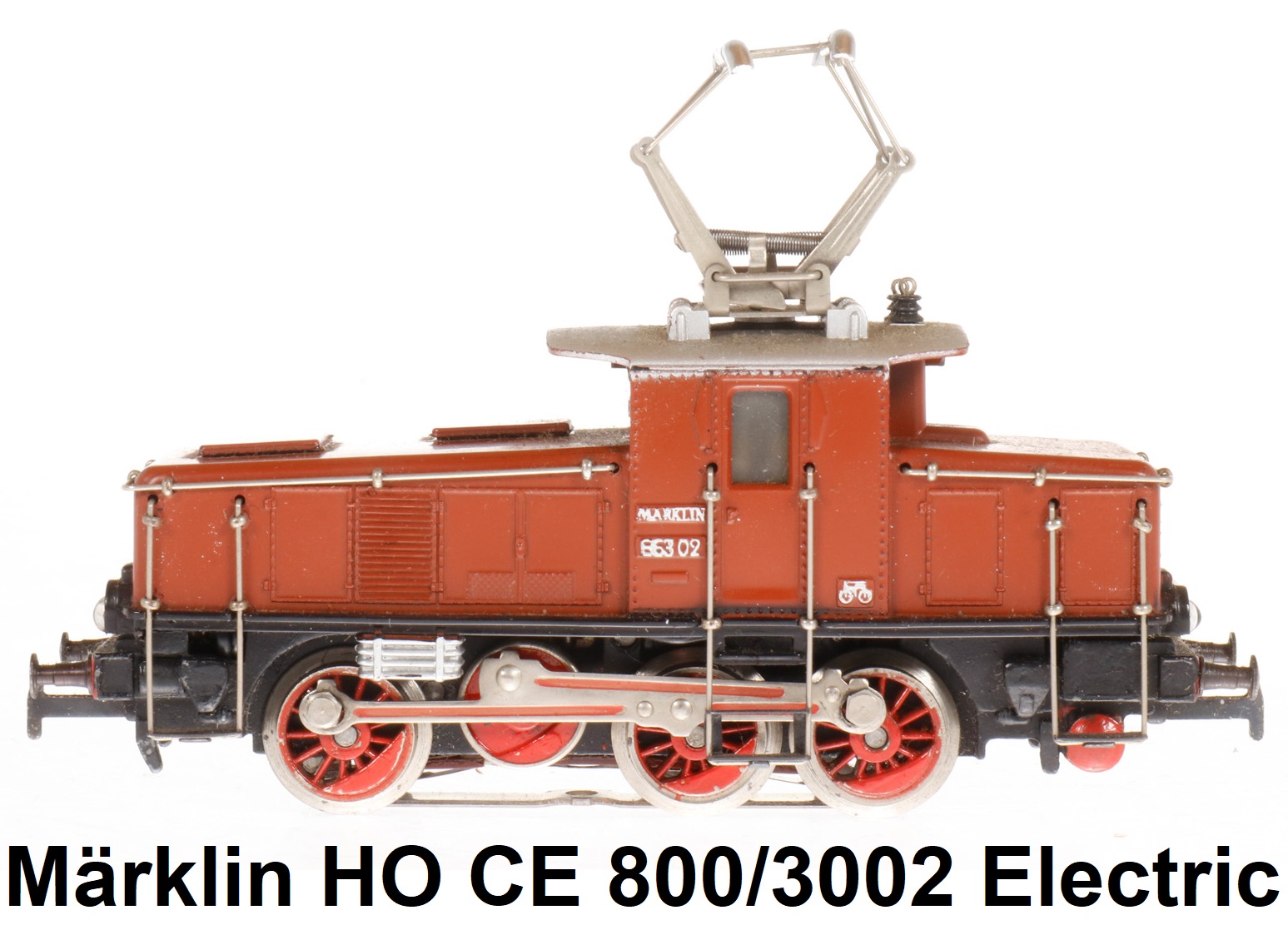
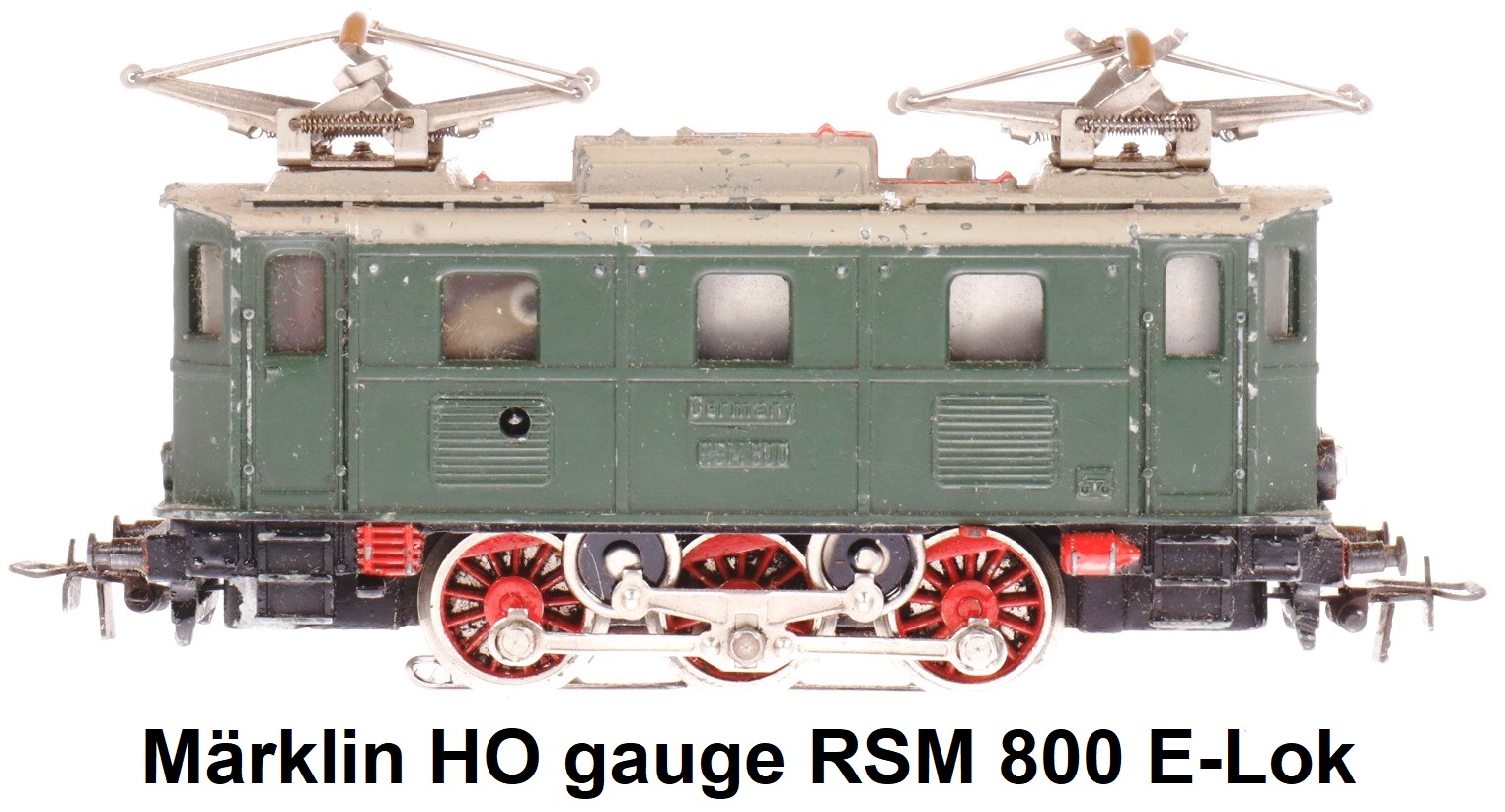
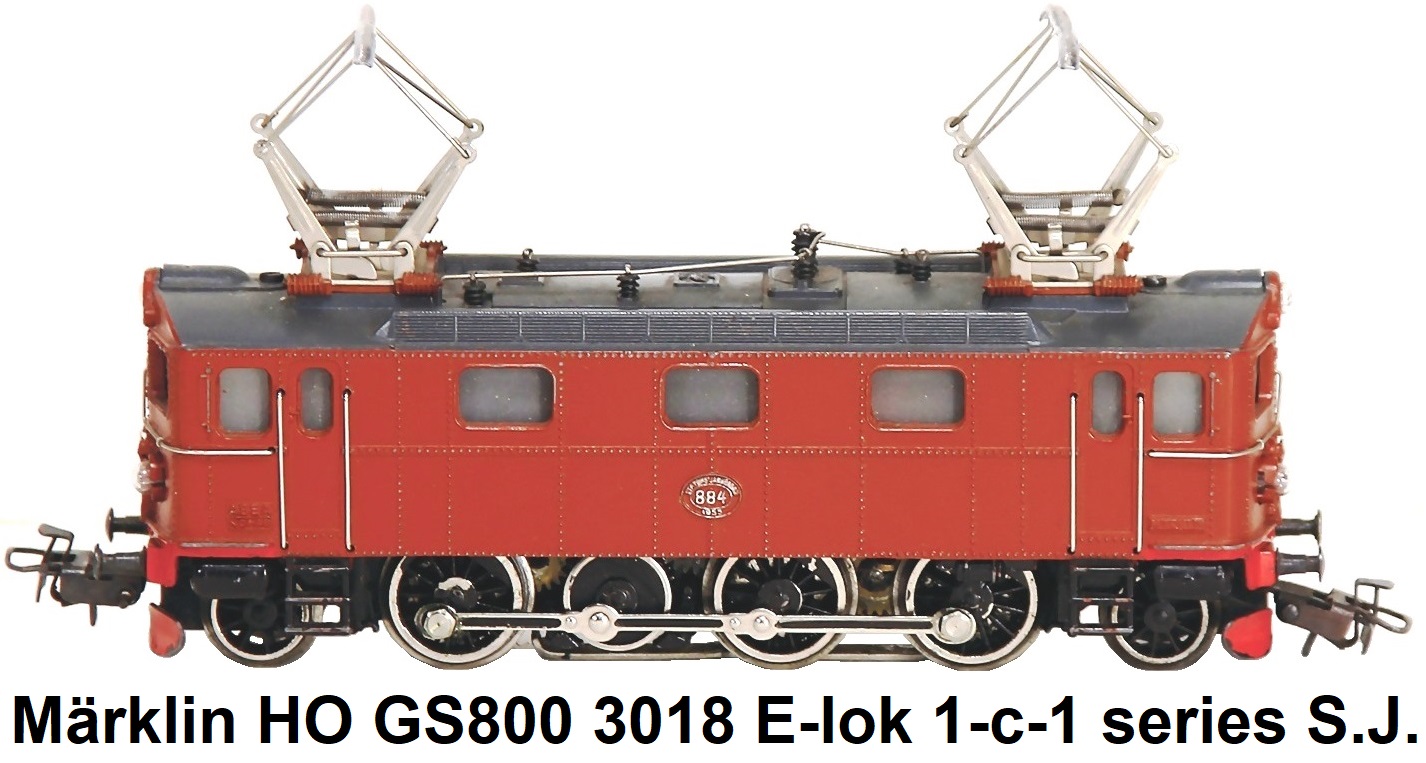
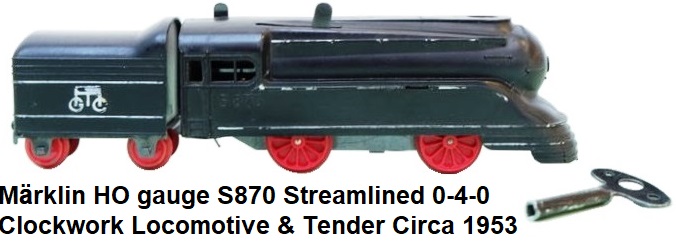 By this point in history, toys made for children, which had been Märklin’s primary output from the founding of
the company, were almost completely gone from the catalog. The detailed and scale trains being produced were now mainly
being purchased by adult hobbyists. The period of toy train production for young kids had passed. In realizing that
this once prosperous market was now being overlooked, in the mid-1950's Märklin tried to reinterest kids in toy trains.
1953 saw the release of a new plastic clockwork driven HO gauge train, headed by an 0-4-0 streamlined loco, the S870.
It came in sets, either accompanied by 2 passenger cars in maroon-red as #327/2, or with a silver or red dump-car and a
#4503 gondola. This train ran on a special version of Märklin's 3-rail track that was modified so as not to include
the middle power rail studs. Unfortunately, these sets failed to sell, finding only a small following. The cheaply made
plastic molded loco was fitted with plastic wheels, and these delicate parts tended to frequently brake. The S870
was gone from the line by 1957.
By this point in history, toys made for children, which had been Märklin’s primary output from the founding of
the company, were almost completely gone from the catalog. The detailed and scale trains being produced were now mainly
being purchased by adult hobbyists. The period of toy train production for young kids had passed. In realizing that
this once prosperous market was now being overlooked, in the mid-1950's Märklin tried to reinterest kids in toy trains.
1953 saw the release of a new plastic clockwork driven HO gauge train, headed by an 0-4-0 streamlined loco, the S870.
It came in sets, either accompanied by 2 passenger cars in maroon-red as #327/2, or with a silver or red dump-car and a
#4503 gondola. This train ran on a special version of Märklin's 3-rail track that was modified so as not to include
the middle power rail studs. Unfortunately, these sets failed to sell, finding only a small following. The cheaply made
plastic molded loco was fitted with plastic wheels, and these delicate parts tended to frequently brake. The S870
was gone from the line by 1957.

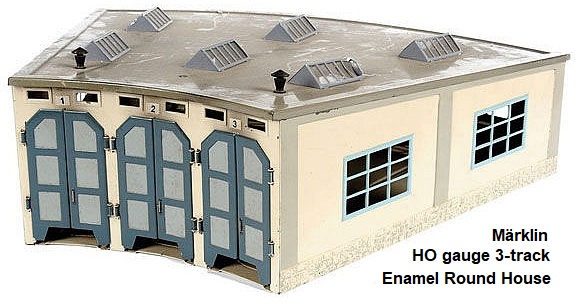 In the post war years the firm established itself once again as a maker of high quality model trains and
went through a period of growth and success. By 1959, the 100th anniversary year for Märklin, the company was employing 2000
workers. An interesting issue of the Märklin catalog with a copper metallic cover was printed to commemorate this milestone.
Helmut Kilian and Otto Bang became important figures in the history of the firm as they lead the further development of the
HO line. Plastics largely took over in the range of materials used for toy making. The company dedicated
itself to developing and perfecting HO railroads which established themselves equally as trains
to play with and as first-rate models. This dual strategy - seen through largely by the
efforts of Fritz Märklin before his death in 1961 - clearly helped towards the world wide success enjoyed by Märklin.
Starting with the HO gauge G800 in the 1950's, Märklin made the first five-coupled toy train locomotives ever produced.
To negotiate sharp tinplate curves, the locomotives had flexible frames. They were massive and powerful and engineered
to the hilt, but apparently the complexity of their construction, like that of the CCS crocodiles, led to the retirement
of the design. Fritz Märklin passed away in 1961. After 102 years of management, the Märklin family no longer was involved in
company operations.
In the post war years the firm established itself once again as a maker of high quality model trains and
went through a period of growth and success. By 1959, the 100th anniversary year for Märklin, the company was employing 2000
workers. An interesting issue of the Märklin catalog with a copper metallic cover was printed to commemorate this milestone.
Helmut Kilian and Otto Bang became important figures in the history of the firm as they lead the further development of the
HO line. Plastics largely took over in the range of materials used for toy making. The company dedicated
itself to developing and perfecting HO railroads which established themselves equally as trains
to play with and as first-rate models. This dual strategy - seen through largely by the
efforts of Fritz Märklin before his death in 1961 - clearly helped towards the world wide success enjoyed by Märklin.
Starting with the HO gauge G800 in the 1950's, Märklin made the first five-coupled toy train locomotives ever produced.
To negotiate sharp tinplate curves, the locomotives had flexible frames. They were massive and powerful and engineered
to the hilt, but apparently the complexity of their construction, like that of the CCS crocodiles, led to the retirement
of the design. Fritz Märklin passed away in 1961. After 102 years of management, the Märklin family no longer was involved in
company operations.

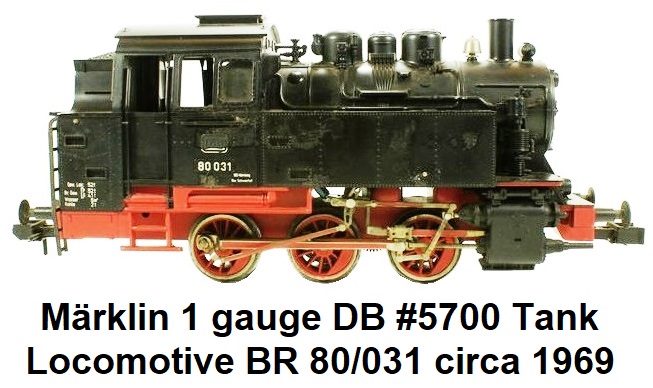 Märklin reintroduced 1 gauge train production in 1969, this time however it utilized a DC powered
system with 2-rail track. Märklin’s 1 gauge trains of the late 1960's were generally scaled to a proportion of 1:32, but
there were some exceptions. The early Märklin 1 gauge line of the 1960's had many toy-like features and exact scale
proportion was not strictly followed. The new trains did run on 45 mm gauged track, the same gauge which Märklin had
established in the late 1800’s, and their general adherence to the 1:32 proportion qualified them as 1 gauge (now often also
Märklin reintroduced 1 gauge train production in 1969, this time however it utilized a DC powered
system with 2-rail track. Märklin’s 1 gauge trains of the late 1960's were generally scaled to a proportion of 1:32, but
there were some exceptions. The early Märklin 1 gauge line of the 1960's had many toy-like features and exact scale
proportion was not strictly followed. The new trains did run on 45 mm gauged track, the same gauge which Märklin had
established in the late 1800’s, and their general adherence to the 1:32 proportion qualified them as 1 gauge (now often also
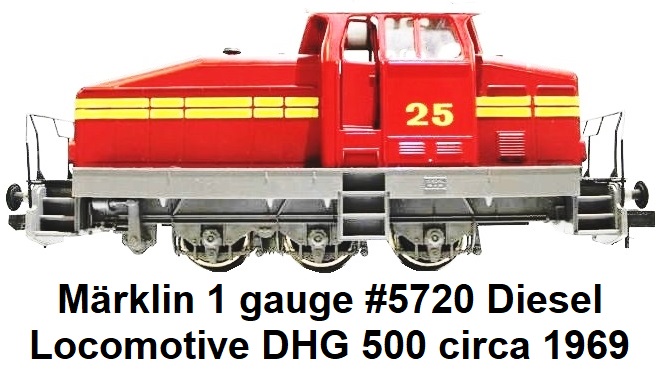 referred to as G gauge). A chief competitor of Märklin’s, LGB (Lehman Gross Bahn or Lehman Big Trains),
had introduced their large scale model trains a year earlier in 1968. While the trains that LGB issued ran on 2-rail track
the same 1 gauge 45mm width between the rails as Märklin 1 gauge trains, LGB had proportioned their trains to 1:22.5. scale.
Therefore, these trains more closely approximated narrow-gauge trains. Over the years, the gauge confusion issue has grown
even cloudier, as several model train manufacturers used 45 mm gauged track, but different proportions such as 1:29 and
1:20.5 scale trains. While the earlier Märklin 1 gauge had been stamped metal toys, the new Märklin 1 gauge was largely
plastic in composition. This meant that the new trains could be run outdoors as well as indoors.
referred to as G gauge). A chief competitor of Märklin’s, LGB (Lehman Gross Bahn or Lehman Big Trains),
had introduced their large scale model trains a year earlier in 1968. While the trains that LGB issued ran on 2-rail track
the same 1 gauge 45mm width between the rails as Märklin 1 gauge trains, LGB had proportioned their trains to 1:22.5. scale.
Therefore, these trains more closely approximated narrow-gauge trains. Over the years, the gauge confusion issue has grown
even cloudier, as several model train manufacturers used 45 mm gauged track, but different proportions such as 1:29 and
1:20.5 scale trains. While the earlier Märklin 1 gauge had been stamped metal toys, the new Märklin 1 gauge was largely
plastic in composition. This meant that the new trains could be run outdoors as well as indoors.

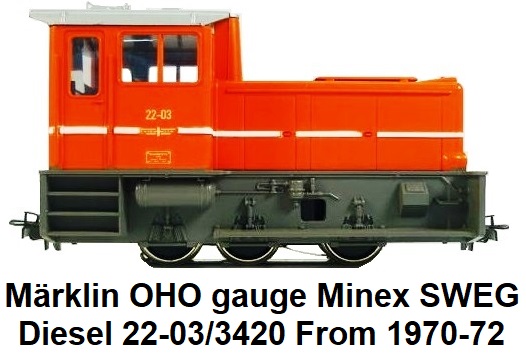 Märklin Minex trains were introduced in 1970. This was another attempt by Märklin to provide impetus for kids to regain
interest in the toy train hobby. This iteration was developed in a new scale called 0H0, and was actually a product name
originally utilized by Märklin in the late 1930's for a metal construction set they offered, also named Minex. The new Minex
product was an 'O' scale (1:45) electric train that was fitted with narrow wheel sets that could run on regular HO gauge
Märklin track. The Minex locomotives were powered by motors that used 16V AC and were fitted with the same automatic
reversing systems that were utilized in Märklin's regular production HO locomotives. Initially only 2 Minex sets were produced.
One was set #3450 that came with a lighted #3400 0-6-0 tank locomotive and 2 4-wheel #4400/4401 passenger cars. The other was
a #3470 freight set which featured a #3420 diesel loco, a #4450/4451 High-side gondola and a #4459 dump car. Additional
Märklin Minex trains were introduced in 1970. This was another attempt by Märklin to provide impetus for kids to regain
interest in the toy train hobby. This iteration was developed in a new scale called 0H0, and was actually a product name
originally utilized by Märklin in the late 1930's for a metal construction set they offered, also named Minex. The new Minex
product was an 'O' scale (1:45) electric train that was fitted with narrow wheel sets that could run on regular HO gauge
Märklin track. The Minex locomotives were powered by motors that used 16V AC and were fitted with the same automatic
reversing systems that were utilized in Märklin's regular production HO locomotives. Initially only 2 Minex sets were produced.
One was set #3450 that came with a lighted #3400 0-6-0 tank locomotive and 2 4-wheel #4400/4401 passenger cars. The other was
a #3470 freight set which featured a #3420 diesel loco, a #4450/4451 High-side gondola and a #4459 dump car. Additional
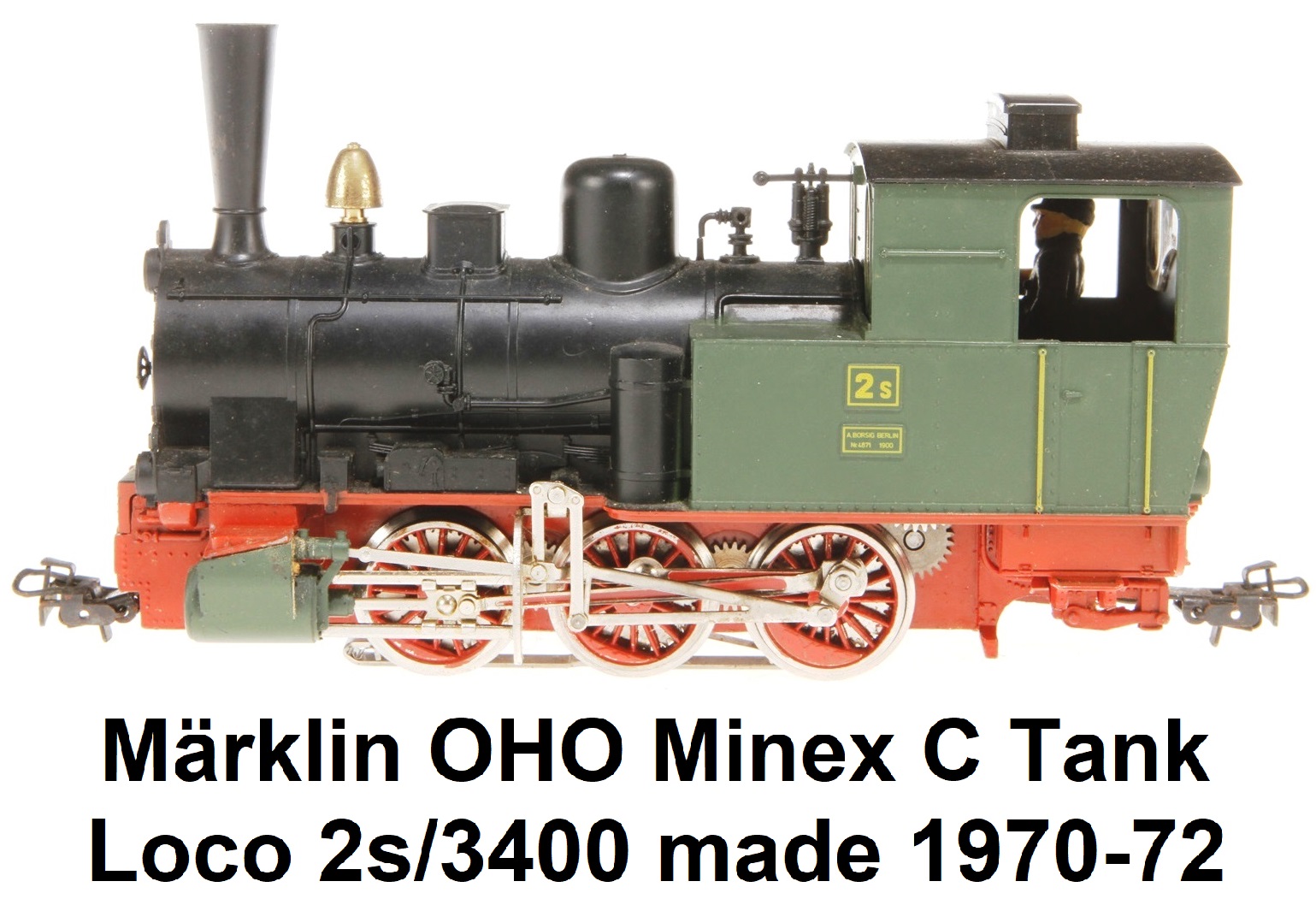 freight cars (#4452/4453/4454) and a separate sale #7400 hand-operated semaphore signal with train control were also produced.
These Minex locomotives and the accompanying passenger and freight cars were made of plastic and metal and were fitted
with Märklin's regular HO couplers.
Many of the Minex cars and the Minex diesel locomotive are lettered for 'SWEG', which is presumably the Südwestdeutsche
Eisenbahn-Gesellschaft, a narrow gauge railroad which operated in the Baden state of Germany. Märklin’s home is in Göppingen,
which is located in the modern German state of Baden-Wurttemberg. The Minex trains lasted in Märklin's catalogs for 2 years
and were gone by 1972.
freight cars (#4452/4453/4454) and a separate sale #7400 hand-operated semaphore signal with train control were also produced.
These Minex locomotives and the accompanying passenger and freight cars were made of plastic and metal and were fitted
with Märklin's regular HO couplers.
Many of the Minex cars and the Minex diesel locomotive are lettered for 'SWEG', which is presumably the Südwestdeutsche
Eisenbahn-Gesellschaft, a narrow gauge railroad which operated in the Baden state of Germany. Märklin’s home is in Göppingen,
which is located in the modern German state of Baden-Wurttemberg. The Minex trains lasted in Märklin's catalogs for 2 years
and were gone by 1972.
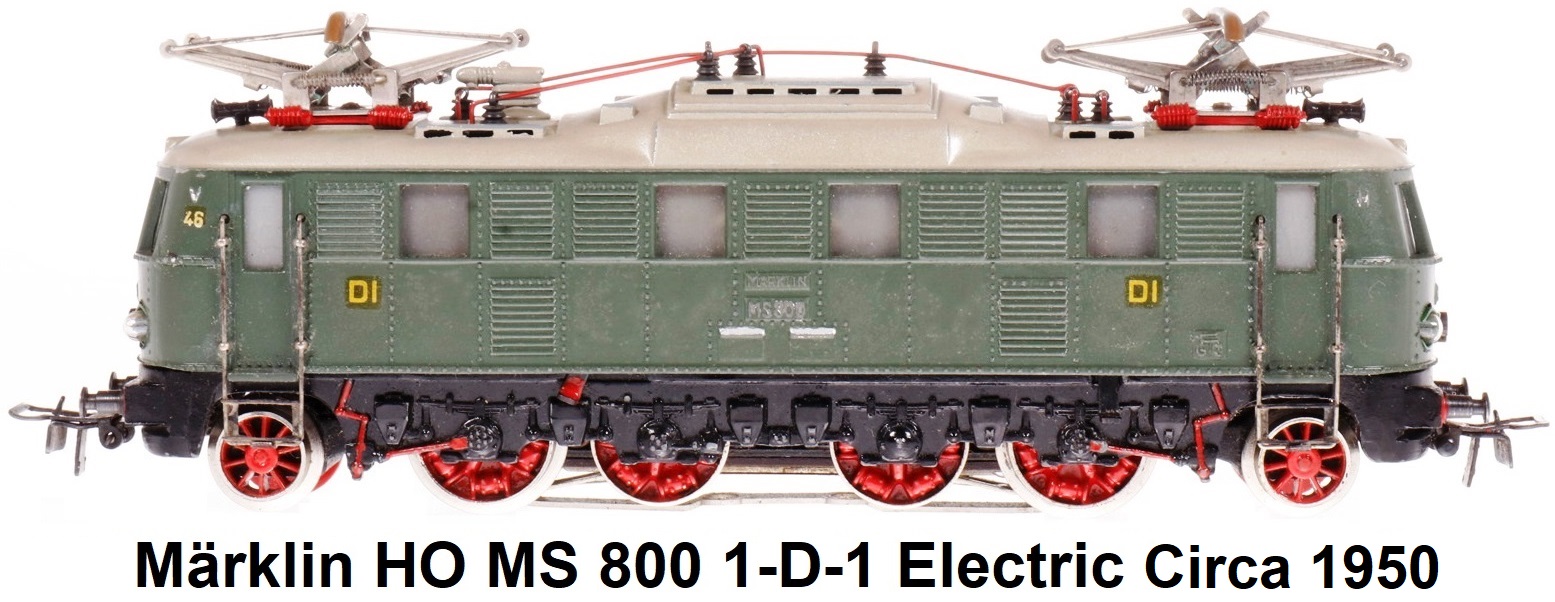 Although Märklin is best known for its trains, from 1914 to 1999, the company also produced mechanical
construction sets similar to Meccano and Erector. Between 1967
and 1982, the company produced a slot car system called Märklin Sprint. Märklin also manufactured several other types of toys
over the years, including tinplate lithographed toy vehicles, and a plastic building block system similar to
Lego building blocks, called Märklin Plus.
Although Märklin is best known for its trains, from 1914 to 1999, the company also produced mechanical
construction sets similar to Meccano and Erector. Between 1967
and 1982, the company produced a slot car system called Märklin Sprint. Märklin also manufactured several other types of toys
over the years, including tinplate lithographed toy vehicles, and a plastic building block system similar to
Lego building blocks, called Märklin Plus.
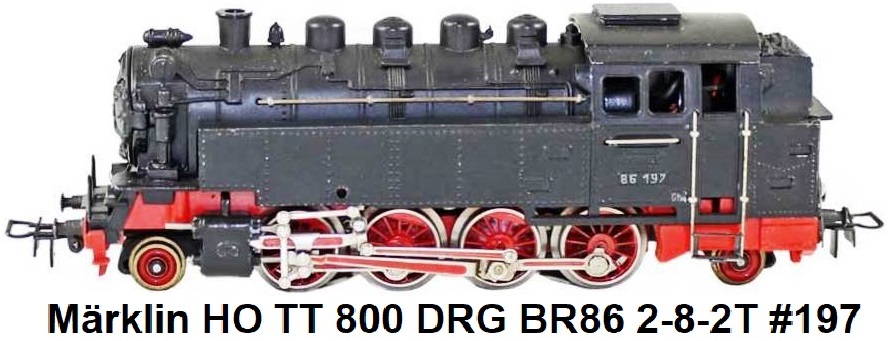 The Märklin HO track system has some incompatibility with other manufacturers'
HO trains. Because the wheels on Märklin's cars are not insulated, electric shorts will occur if these cars are used on other
manufacturers' HO track, without changing the wheels. The profile of the wheels is also different. Additionally, for many
years Märklin was the only brand that used AC for its HO scale trains, although in the 1960's Fleischmann, HAG, Röwa,
Roco and others started producing trains for the Märklin system. Some people
converted Märklin locomotives to DC for use on DC layouts, and by buying HAMO in 1964 and its line of street cars, Märklin had
begun offering a line of 2-rail DC locomotives as well, first under the name of HAMO and, after buying Trix, under that name.
The Märklin HO track system has some incompatibility with other manufacturers'
HO trains. Because the wheels on Märklin's cars are not insulated, electric shorts will occur if these cars are used on other
manufacturers' HO track, without changing the wheels. The profile of the wheels is also different. Additionally, for many
years Märklin was the only brand that used AC for its HO scale trains, although in the 1960's Fleischmann, HAG, Röwa,
Roco and others started producing trains for the Märklin system. Some people
converted Märklin locomotives to DC for use on DC layouts, and by buying HAMO in 1964 and its line of street cars, Märklin had
begun offering a line of 2-rail DC locomotives as well, first under the name of HAMO and, after buying Trix, under that name.
In 1972, Märklin launched its 1:220 Z scale, which for decades was the smallest scale model train
in the world. This system was named the 'mini-club' brand. The fully functional mini-train, which was 220 times smaller than
the original and ran on 6.5 millimeter-wide gauges, was included in the Guinness Book of World Records not only for its small
size but also for breaking the world record in uninterrupted operation. A Märklin 'mini club' train managed to run 720
kilometers in 1,219 hours. In the late 1970's, Märklin boosted its international marketing and distribution network by
establishing subsidiaries in Switzerland, Belgium, France, and the United States.

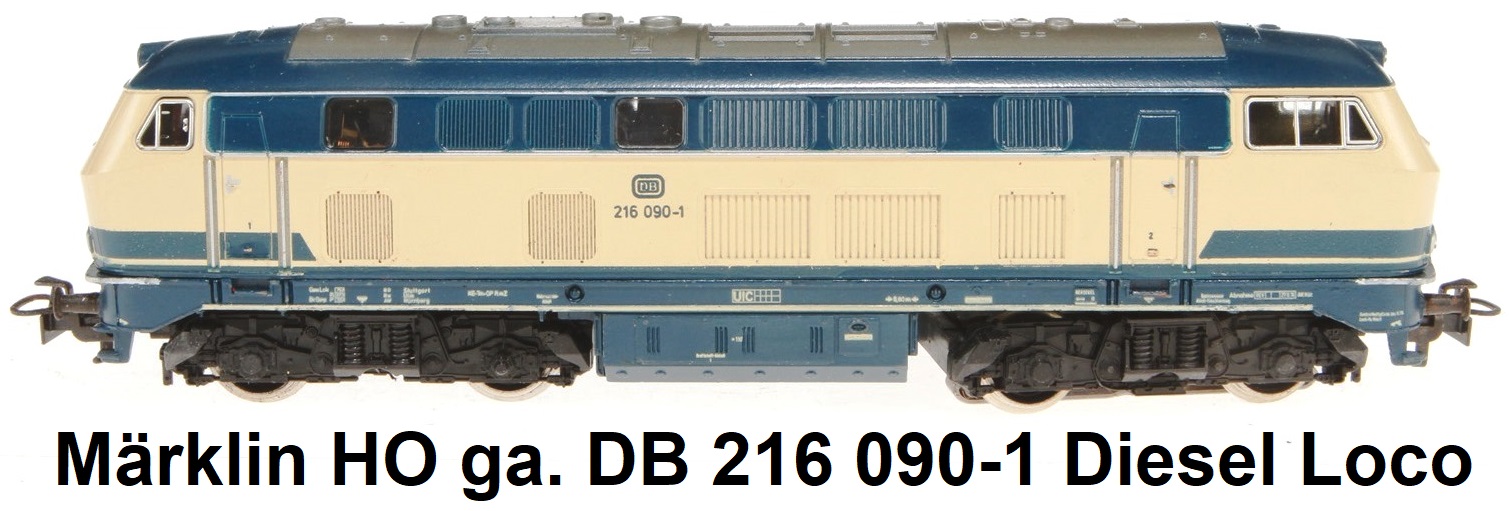
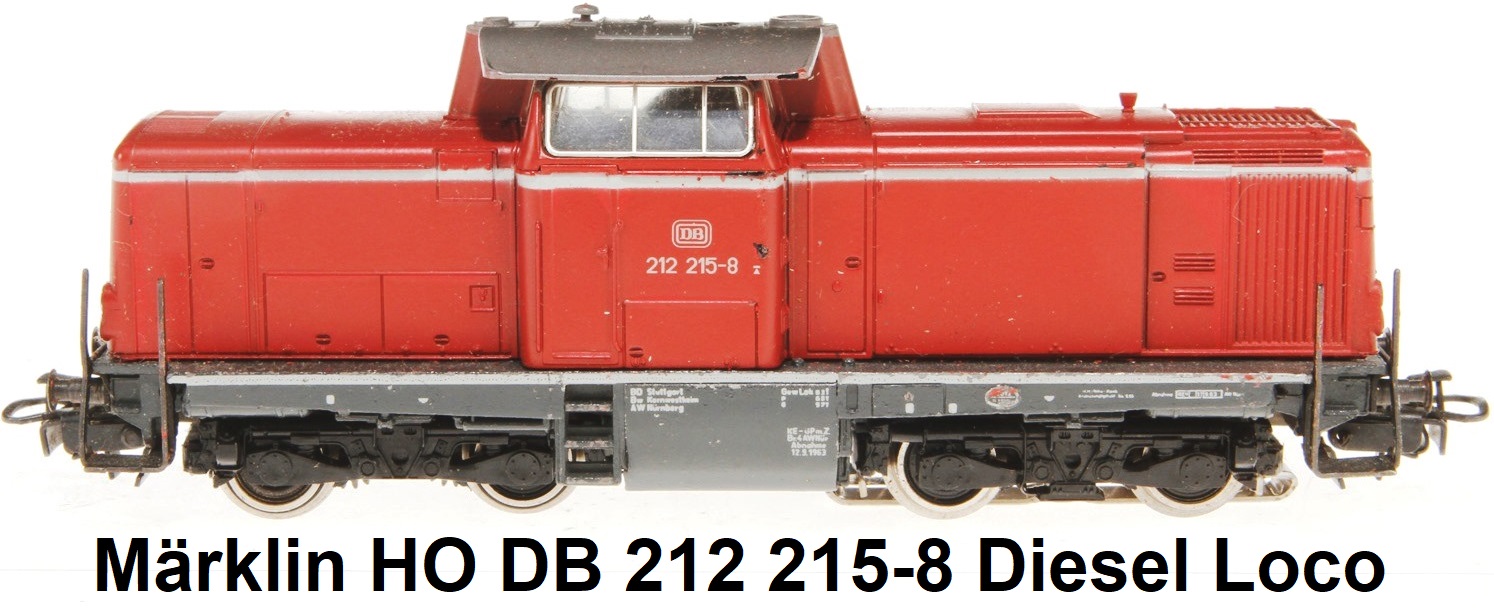
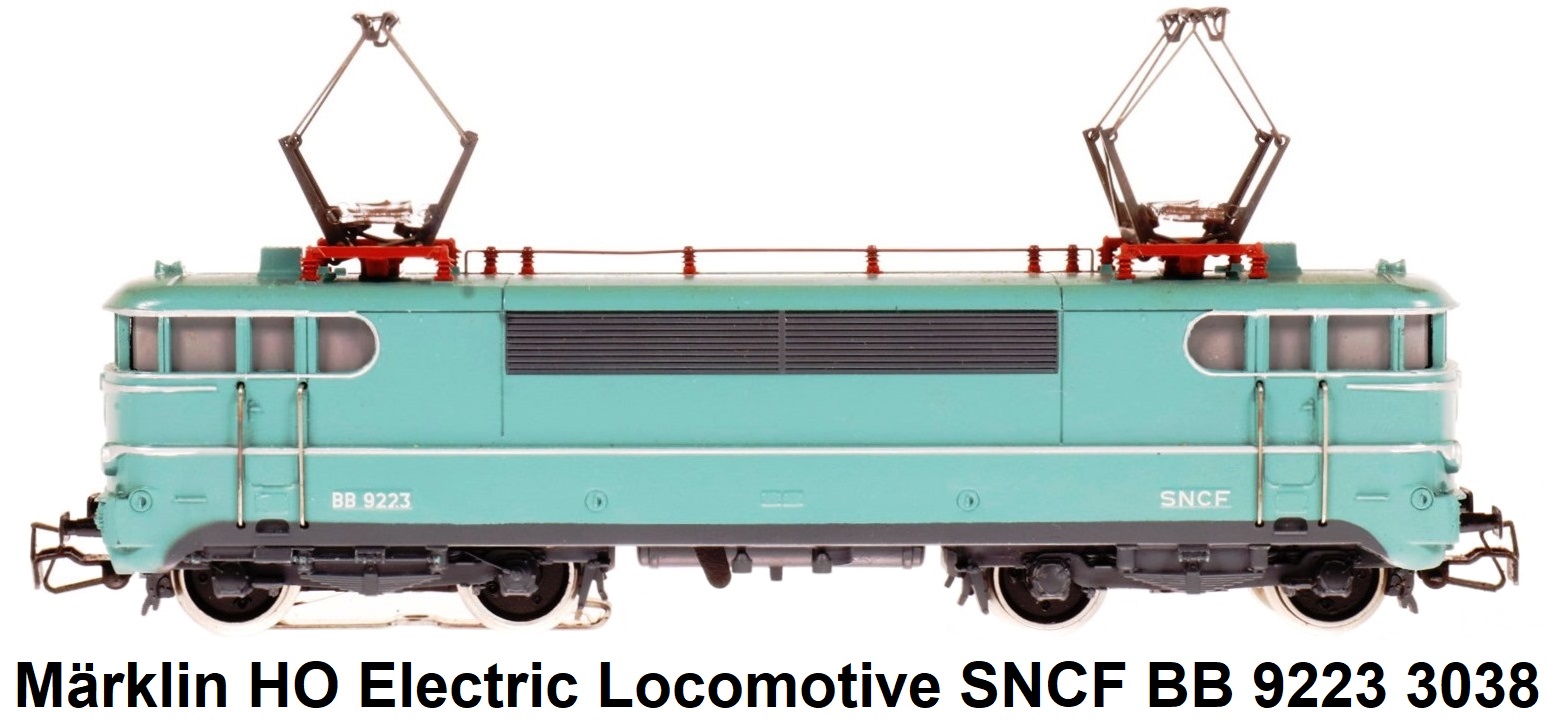 In 1984 Märklin came out with its first generation digital signal processing
system with electronic receiver circuits in each locomotive called 'Märklin Digital train control'. Märklin was the first
model railway company to introduce a digital train control system. It was jointly developed with Motorola.
This technology facilitated having independent, multi-train operation for HO scale and 1 gauge model trains.
Märklin has released several newer versions of this proprietary Digital train control over the years for
controlling trains and accessories digitally, however, this system is not compatible with DCC (Digital
Command Control), which was developed by a number of different people and companies and was standardized
by the National Model Railroad Association in the 1990's. The difference in the Märklin system and the DCC system
is that it has more available addresses programmable decoders and a feedback-function from the mfx-decoders that helps the
control unit identify the locomotives. Theoretically, the system was able to manage up to 80 locomotives and 256 switches
within one circuit. Märklin does offer DCC powered locomotives, but only for its 2-rail DC Trix brand.
In 1984 Märklin came out with its first generation digital signal processing
system with electronic receiver circuits in each locomotive called 'Märklin Digital train control'. Märklin was the first
model railway company to introduce a digital train control system. It was jointly developed with Motorola.
This technology facilitated having independent, multi-train operation for HO scale and 1 gauge model trains.
Märklin has released several newer versions of this proprietary Digital train control over the years for
controlling trains and accessories digitally, however, this system is not compatible with DCC (Digital
Command Control), which was developed by a number of different people and companies and was standardized
by the National Model Railroad Association in the 1990's. The difference in the Märklin system and the DCC system
is that it has more available addresses programmable decoders and a feedback-function from the mfx-decoders that helps the
control unit identify the locomotives. Theoretically, the system was able to manage up to 80 locomotives and 256 switches
within one circuit. Märklin does offer DCC powered locomotives, but only for its 2-rail DC Trix brand.
 In 1984, Märklin celebrated 125 years in business, and in 1985, a milestone was reached for 50 years of HO
gauge production. Also in 1985, Märklin produced another two models of the Der Adler train, to mark the 150th anniversary.
These had catalogue numbers 5750 (the model of the original Der Adler) and 5721 (a model of the 1935 version, rebuilt after
fire damage, with plainer, enclosed carriages). In 1997 Märklin acquired Nüremberg based model train manufacturer
Trix and Trix became another brand of Märklin Holding,
dedicated to covering N scale and DC operated HO scale trains.
In 1984, Märklin celebrated 125 years in business, and in 1985, a milestone was reached for 50 years of HO
gauge production. Also in 1985, Märklin produced another two models of the Der Adler train, to mark the 150th anniversary.
These had catalogue numbers 5750 (the model of the original Der Adler) and 5721 (a model of the 1935 version, rebuilt after
fire damage, with plainer, enclosed carriages). In 1997 Märklin acquired Nüremberg based model train manufacturer
Trix and Trix became another brand of Märklin Holding,
dedicated to covering N scale and DC operated HO scale trains.
In the late 1980's Märklin made another attempt to market its products to children when the company
asked young kids to create and submit ideas for their dream-trains. The result was a new line called Märklin Alpha Adventure
sets, first produced in 1988. These new sets came with colorful, imaginative and futuristically styled 0-6-0 locomotives. The
locos were accompanied by tenders and cars that were just as whimsical looking. All the trains were fitted
with the standard Märklin HO gauge couplings, but operated on a newly designed 3-rail track with a plastic base, called 2000
track. These Alpha sets were packaged and sold in boxes that were designed and decorated to be utilized as stations, tunnels,
mountains crossings, a round house or other types of scenery on an operating layout. The cars included in the Alpha sets were
made to carry and transport special vehicles, some were amphibious and they all had a futuristic appearance, and could be
unloaded via ramps. Some cars had retractable radar screens, swiveling solar panels, or retractable cranes. The overall appeal
for the Alpha sets was their unique and imaginative design intended to provide a high degree of play value for
young children. Rechargeable batteries were utilized to power the Alpha trains but these units tended to experience issues.
By 1995 the Alpha adventure sets began to disappear from the Märklin catalogue. Pricing and poor sales were to blame. A
positive outcome from the Alpha set endeavor was the new plastic-base track system that eventually evolved into Märklin's
C-track product. Some of the specialized futuristic looking cargo vehicles from the Alpha trains were later marketed
separately by Märklin under the Gama brand.
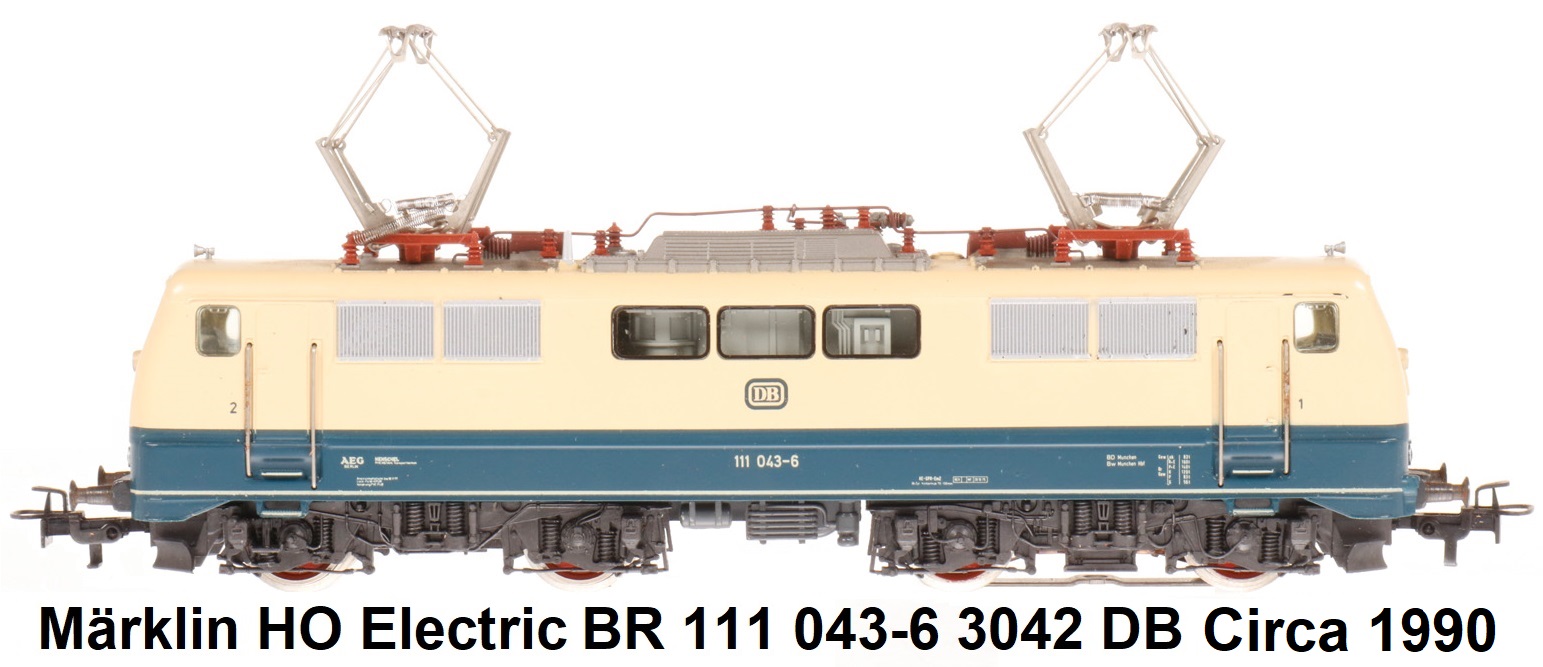 In the early 1990's Märklin was able to overcome the stagnation of the late 1980's. The company acquired
three new production sites and launched a comprehensive marketing campaign. The 1990's began with an unexpected expansion of
Märklin's domestic market when East Germany was reunited with the western part of the country. Märklin acquired a toy factory
in Sonneberg in the eastern German state of Thuringia and moved its production of rolling stock there. Another production
subsidiary was established in Györ, Hungary, where 100 employees assembled small parts, railroad tracks, and switches.
In the early 1990's Märklin was able to overcome the stagnation of the late 1980's. The company acquired
three new production sites and launched a comprehensive marketing campaign. The 1990's began with an unexpected expansion of
Märklin's domestic market when East Germany was reunited with the western part of the country. Märklin acquired a toy factory
in Sonneberg in the eastern German state of Thuringia and moved its production of rolling stock there. Another production
subsidiary was established in Györ, Hungary, where 100 employees assembled small parts, railroad tracks, and switches.
Over the years, the Märklin marquee has become more respected by model train collectors with some of the
very early models fetching impressive prices in auctions. In January 2005, the Märklin museum in Göppingen, Germany, was
burgled and more than 100 pieces, with an estimated value of more than 1 million Euros, were stolen. Fortunately, the items,
which included one-of-a-kind prototypes along with pieces that dated back to 1891, were recovered in March
2005. Märklin train stations are very popular with collectors. A Grand Central Bahnof station, circa 1902, sold for
$55,000 at Bertoia Auctions in September 2012. The hand-painted toy station was complete with a tin canopy cover over train
tracks, railed interior ticket booth, exterior roofed booth, opening door to the restaurant and waiting room, and vivid
colors overall. A hand painted Holborn Station made by Märklin for the British market in 1904 was purchased at Lacy Scott &
Knight's sale of collectors' models on November 17, 2012 for £41,000. The highest price ever paid on LiveAuctioneers
for a Märklin train to date was for a Märklin gauge 3 train
set with a spirit fired 4-4-0 live-steam locomotive and 8-wheel tender, French dining car, French sleeping car and
tracks, along with the original wooden box. It sold for $149,227 in December, 2014 in an auction conducted by Antico Mondo
Auktionen. A circa-1910 Märklin carousel sold for $192,000, nearly double its high estimate, at Pook & Pook, Inc. with Noel
Barrett in November 2012. At Bertoia Auction’s October 11, 2019 sale of the Gentleman’s Collection of Tony Annese was a
Märklin Third Avenue electric 'O' gauge trolley set described in the catalog as extraordinarily rare, which sold at
$73,800. In July of 2019 a rare but unassuming pre-World War I O gauge 0-6-0 clcokwork loco and tender, decorated for the
British line London North Western Railway, sold for a hammer price of £9,000 in a Tennants Auctioneers’ Yorkshire saleroom.
It was the link to a British railway company that made the lot more appealing to collectors as these locomotives were made in
Germany and were normally sold painted in generic colors. In May of 2021, the Bertoia auction of the late collector Paul
Cole saw a Schlitz beer car in O gauge made for the American market by Märklin go for $40,800. At the same auction, a
1 gauge #1878 gondola carrying the rare Circus Oriental wagon sold for $38,400. Not far behind at $32,400 was a #2361
Electric Tramway trolley in gauge 1 with clockwork mechanism and seven original figures.
 When Märklin achieved greater than 150 years of manufacturing, their range of products became extensive,
and collectors also were paying attention to the packaging that was used for these products. The Märklin toy company
systematically included a print run number on almost all their printed material, including the boxes in which their products
shipped. These print run numbers indicated the printer and also the month and year of printing. This was very useful for
dating an item that was known to be associated with some printed material. The second group of digits indicated the catalogue
number. The last set of numeric digits in the print run number indicated the month and year that the item was printed. The
last group of letters identified the printer.
When Märklin achieved greater than 150 years of manufacturing, their range of products became extensive,
and collectors also were paying attention to the packaging that was used for these products. The Märklin toy company
systematically included a print run number on almost all their printed material, including the boxes in which their products
shipped. These print run numbers indicated the printer and also the month and year of printing. This was very useful for
dating an item that was known to be associated with some printed material. The second group of digits indicated the catalogue
number. The last set of numeric digits in the print run number indicated the month and year that the item was printed. The
last group of letters identified the printer.
By 1999 Märklin's 1 gauge products were being produced in two lines. One was an elegant offering of scale
model 1 gauge trains and the other was a line of less detailed sheet steel trains called 'Maxi'. The most striking new
regular 1 gauge item offered was an elegant KPEV (Royal Prussian Railroad Administration) 0-8-0 steamer loaded with detail
accompanied by a 6-wheel tender and a maze of built-in electronic features. New cars included two great 8-wheel postwar
passenger coaches, the kind that were seen everywhere in Germany In the 1950's and 1960's, as well as five freight cars.

In 2003 Märklin issued its model of the Harry Potter Hogwarts Express train.
In 2006, the company, which had until then been owned by the three families Märklin, Friz and Safft, was sold to the British
investment group Kingsbridge Capital, ending nearly 150 years of family ownership. With the support of the employees,
the new shareholders planned to restructure the company and make it profitable again. The purchase price was approximately
$38 million. At the time, Märklin had approximately $70.5 million in debt, as a result of several years of slumping sales.
In 2007, the company expanded its product offering by buying the remaining
assets of the bankrupt firm, Ernst Paul Lehmann, who owned the LGB brand and product line
of 'G' scale model railways. In 2007 Märklin also acquired Hübner, a German maker of 1 gauge trains and track.
On February 4, 2009 Märklin filed for insolvency in
the Göppingen municipal court. A year and a day later, on February 5, 2010, Märklin announced a return to profitability,
after the work of the insolvency manager Michael Pluta. In 2010 the company produced yet another version of the Der Adler,
#55175, which showed the restored locomotive in its current state.

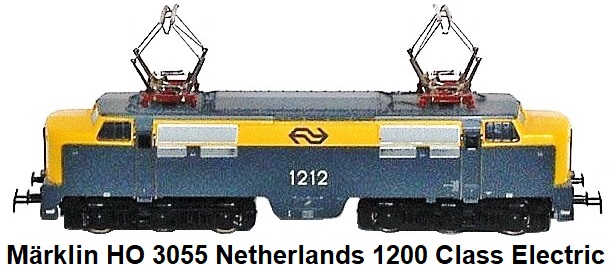 In 2012 Märklin's new items catalog for HO, Z and 1 gauge ran to 192 pages, LGB’s was 64 pages, Trix’s
(N and HO) was 96 pages, and the new export models catalog for Märklin and Trix was 40 pages. Much of the HO scale Trix
equipment consisted of 2-rail DC versions of Märklin equipment. A highlight of the
Märklin catalog was the class 403 high-speed four-unit IC train, which was first put in service in 1974 and then converted
to the Lufthansa Airport Express in 1982. Class 403 trains were nicknamed 'Donald Ducks,' apparently because of the
configurations of their ends. The 403 model was available for members of the Märklin Insiders Club only. The table lamps in
the model were LED lamps. Another highlight was a blue and cream 'Rheingold' of 1962 that came with a new E10 electric
locomotive and six different cars, including the dome coach and the diner with the distinctive hump backed roof over the
kitchen. Among other Märklin HO new items with all-new tooling for 2012 were a class 94 0-10-0T steamer and a class 50
decapod, both with rigid frames.
In 2012 Märklin's new items catalog for HO, Z and 1 gauge ran to 192 pages, LGB’s was 64 pages, Trix’s
(N and HO) was 96 pages, and the new export models catalog for Märklin and Trix was 40 pages. Much of the HO scale Trix
equipment consisted of 2-rail DC versions of Märklin equipment. A highlight of the
Märklin catalog was the class 403 high-speed four-unit IC train, which was first put in service in 1974 and then converted
to the Lufthansa Airport Express in 1982. Class 403 trains were nicknamed 'Donald Ducks,' apparently because of the
configurations of their ends. The 403 model was available for members of the Märklin Insiders Club only. The table lamps in
the model were LED lamps. Another highlight was a blue and cream 'Rheingold' of 1962 that came with a new E10 electric
locomotive and six different cars, including the dome coach and the diner with the distinctive hump backed roof over the
kitchen. Among other Märklin HO new items with all-new tooling for 2012 were a class 94 0-10-0T steamer and a class 50
decapod, both with rigid frames.
A new Märklin HO venture in 2012 was 'My World,' which consisted of the old 'Hobby' line of basic models
plus a new group of simplified remote-controlled, battery-powered trains for children as young as 3 years of age. Every car
and engine of the simplified line was 4-wheeled. Probably the most engaging were high-speed passenger trains available
painted for French, Belgian, Swiss and U.S. (including Amtrak's 'Acela') prototypes. Märklin has always been good with
backwards compatibility, and the battery-powered 'My World' trains can be operated on any Märklin HO layout. In 1 gauge,
Märklin offered a new model of the DB class E10 (class 140) electric, available in blue, green, and blue and cream. To
accompany the blue and cream version, a 6-car Rheingold set with blue and cream cars was offered. This set included a dome
coach and a humped roof diner, similar to the HO set offered. The whole 1 gauge train measured 1,400 centimeters long
(almost 50'). Much of Märklin's production was taking place in Györ, Hungary, but the company was still centered in
its historic city of Göppingen, southeast of Stuttgart.
In 2013 Märklin was acquired by the Simba Dickie Group. Simba Dickie Group, a German toy manufacturer
was founded by Fritz Sieber and his son Michael in 1982 as Simba Toys. Over the years the group has acquired the assets of
several famous toy manufacturers and producers including Schuco, Jada Toys and Solido.
 Märklin has continued to manufacture and market trains and accessories in Gauge 1, HO
scale, and 'Z' scale, with the majority of production taking place in China. The company offers two different lines of 1
gauge equipment, one less expensive, made of tin plate metal, and less detailed. And one that is a premier line, which is
super-detailed and more costly. These products
were distributed in the United States exclusively by Walthers. Since 1980 Märklin, Inc.
has operated as the American Subsidiary of Gebr. Märklin & Cie. GmbH, Germany. Märklin’s U.S. office was located in
Wakesha, Wisconsin, just down the road (less than 50 miles) from Walther’s, which handled warehousing and sales for the
three brands Märklin, Trix and LGB. Märklin's older trains are considered highly collectible today, and Märklin's current
offerings enjoy premium status among hobbyists.
Märklin has continued to manufacture and market trains and accessories in Gauge 1, HO
scale, and 'Z' scale, with the majority of production taking place in China. The company offers two different lines of 1
gauge equipment, one less expensive, made of tin plate metal, and less detailed. And one that is a premier line, which is
super-detailed and more costly. These products
were distributed in the United States exclusively by Walthers. Since 1980 Märklin, Inc.
has operated as the American Subsidiary of Gebr. Märklin & Cie. GmbH, Germany. Märklin’s U.S. office was located in
Wakesha, Wisconsin, just down the road (less than 50 miles) from Walther’s, which handled warehousing and sales for the
three brands Märklin, Trix and LGB. Märklin's older trains are considered highly collectible today, and Märklin's current
offerings enjoy premium status among hobbyists.
Link to Märklin Website 